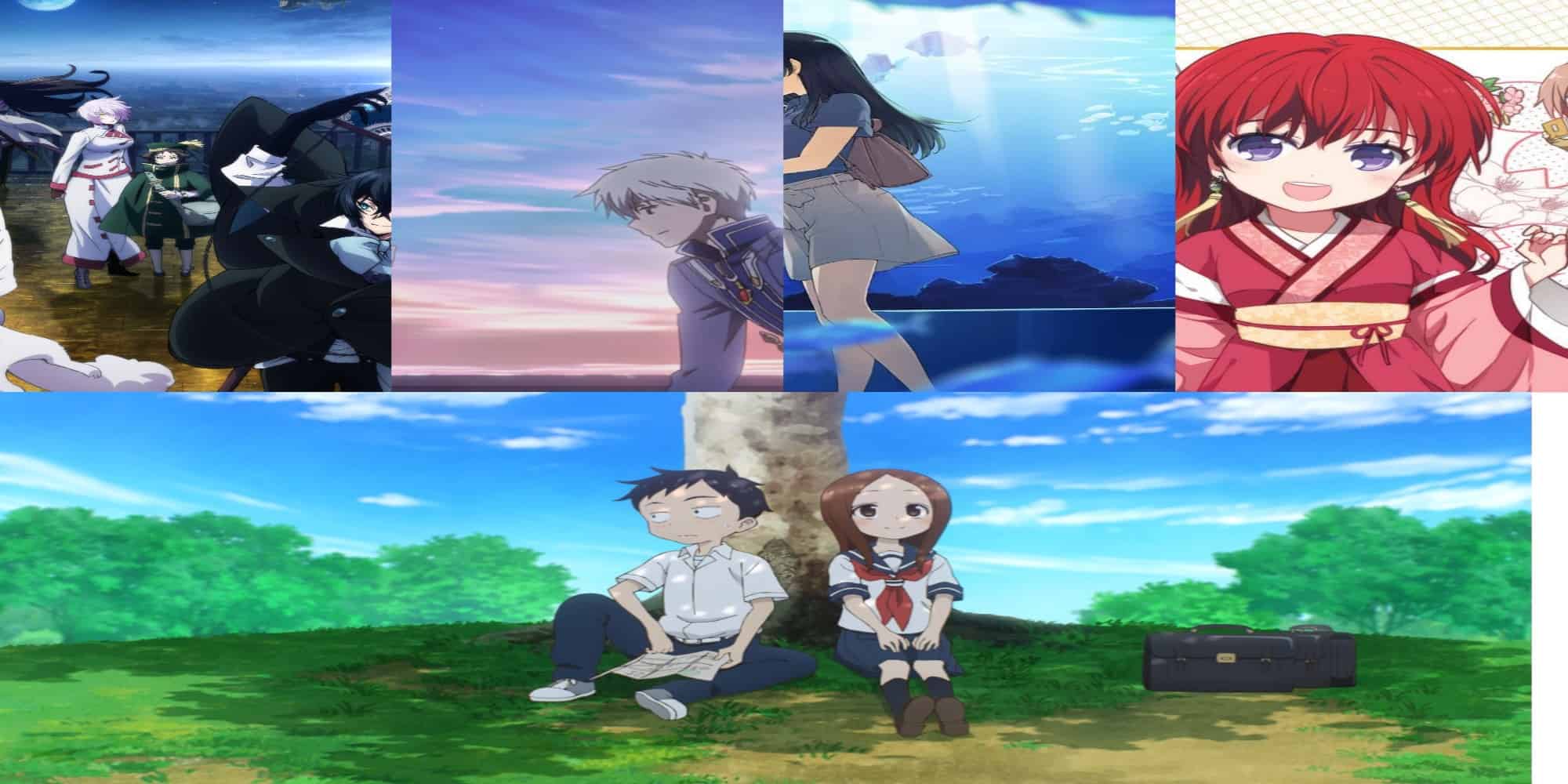The fact that romantic anime is so popular on Netflix, the most popular streaming service, attests to the universality of the feeling. Since there is a plethora of options, I set out to discover Netflix’s finest love tales for anime enthusiasts.
Here, we rate the top one hundred romantic anime programs that you can watch right now on Netflix. If you’re in the mood for some bleak Japanese romance, pick up one of these timeless works.
This is what we believe in, what we work for, and what we dream of. Anime has offered us all hope, and even if we aren’t lucky enough to have a partner who really loves us, it’s possible to at least root for those who are.
If the love of your life has disappointed you, we promise these Netflix romantic cartoons won’t. The romance genre endures. From the dawn of cinema, romantic plots have been a staple.
With this in consideration, I set out to discover one of the most romantic anime currently available on Netflix. Movies may now be seen from the convenience of home thanks to the proliferation of internet streaming services. Obviously, the majority of viewers are on Netflix.
Watching a romantic anime with a bunch of friends or family members is as simple as inviting them over and turning on Netflix. Here you’ll find a wide variety of romantic films, from love tales to romantic comedies to emotionally wrenching anime.
1. Your Name
Your Name is Makoto Shinkai’s original animated feature film. The lives of a young woman named Mitsuha Miyamizu and her partner, Taki Tachibana, are recounted here.
When Mitsuha, from the fictional town of Itomori, and Taki, from Tokyo, discover that they have been switching bodies during their sleep, they forge an unanticipated romantic bond.
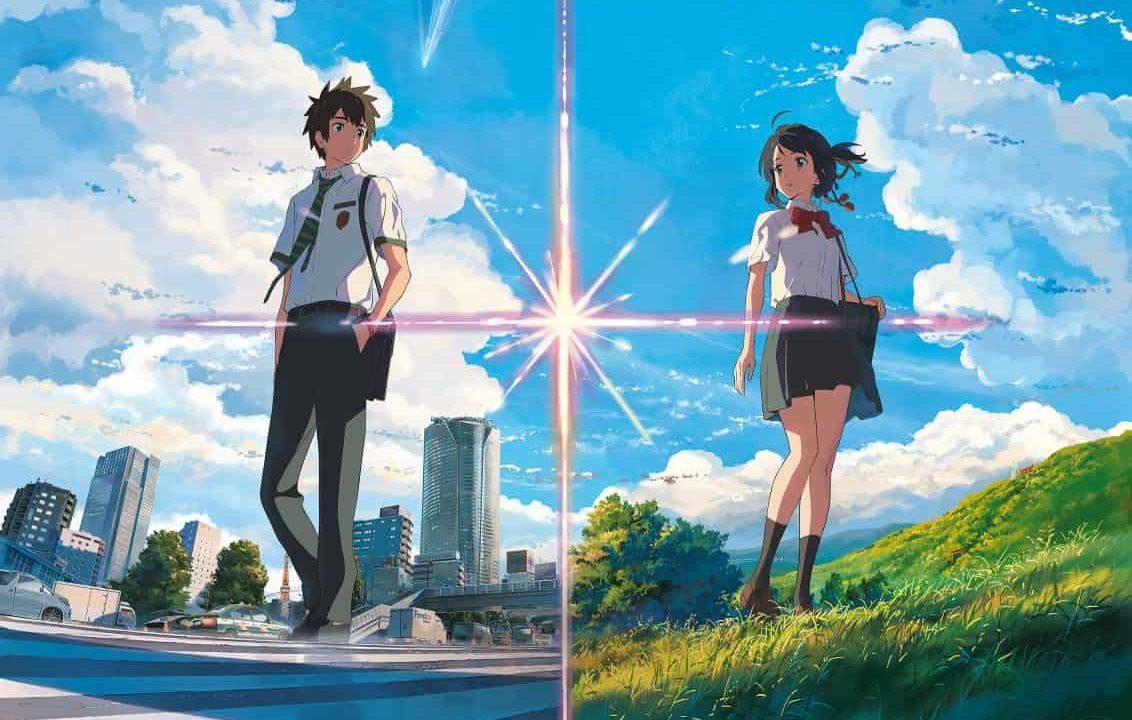
Realizing this, they begin sharing notes on one other’s phones, talking about rules, and sharing information about their days.
But once Mitsuha (actually Taki occupying her body) takes part in a Kuchikamizake ceremony with her grandmother and sister, honoring a traditional deity who rules over time and “unions,” or the links that bind people together, this dynamic ceases to exist.
Mitsuha mentions the comet that killed over 500 people in Itomori and herself in her last letter to Taki.
Also Read: Your Name Review: A Movie About Defeating Fate
2. Your Lie in April
In the beginning, the tale follows the standard slice-of-life format: a shy kid named Kousei goes to middle school alongside two of his best friends from elementary school.
He was a young prodigy, but he hadn’t touched the piano since his mother’s death from an ailment he had never learned.
An accidental encounter with the bubbly Kaori two years later forces him to attend her violin competition on a weekday afternoon.
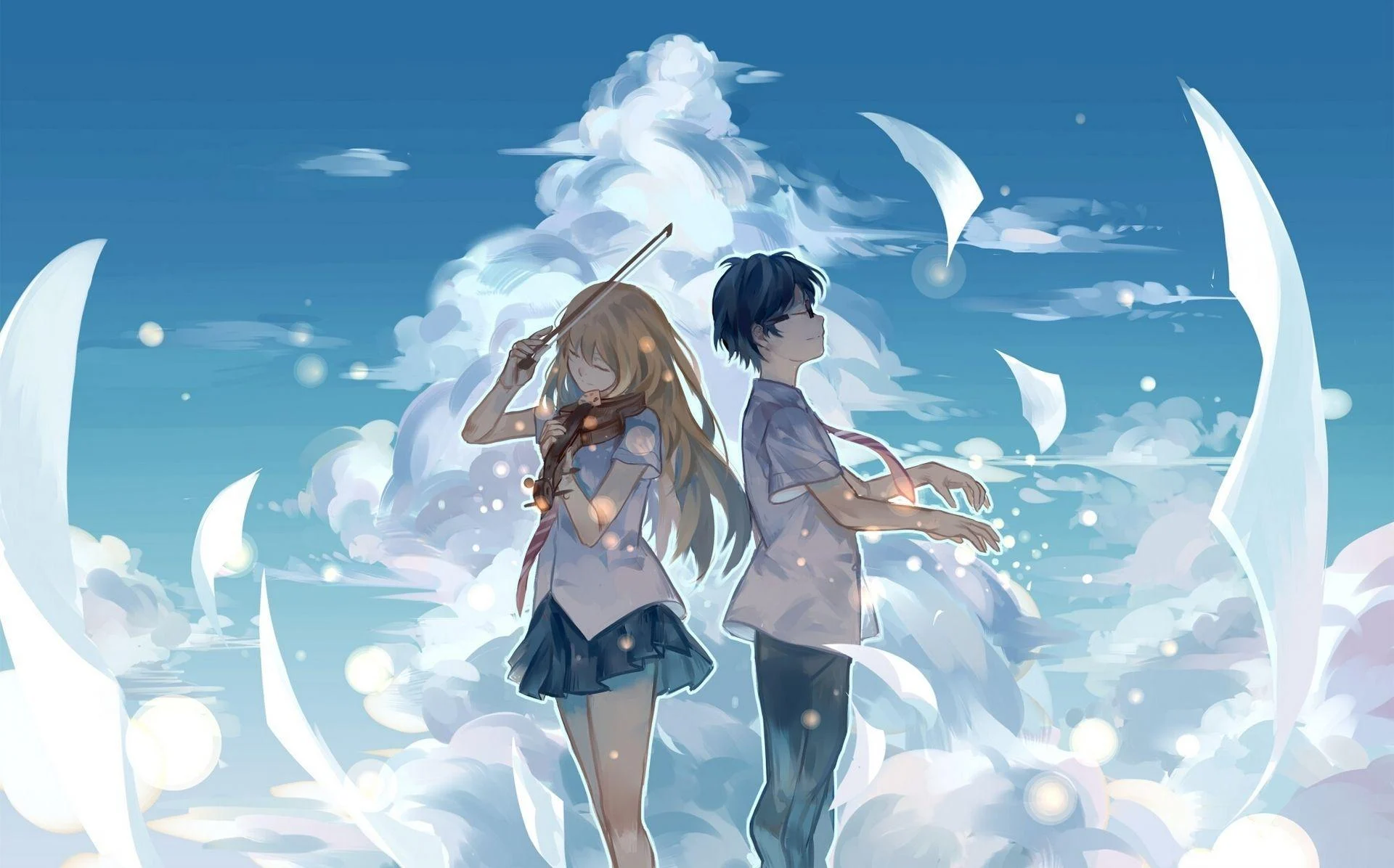
The spark that would lead Kousei back into the world of music after he had abandoned it is already being lit by Kaori’s strong personality and desire.
The plot primarily focuses on how Kaori’s unusual approach to music and language affects Kousei’s perspective. We learn about his inner workings and what drives him by focusing on his flaws, both those he has created for himself and those he has found in others.
It seems like each episode spends about half its time on Kousei’s self-reflection and the other half on the story’s forward momentum. This first-person perspective allows us to empathize with the characters as they struggle to make sense of the world around them.
Also Read: 30 Your Lie In April Facts You Need To Know
3. A Silent Voice
Shoya Ishida, the protagonist of this tale, is an elementary school student who deals with his chronic ennui in the worst manner conceivable.
Shoko Nishimiya, a deaf student who can only use a notebook to express herself, is presented to the class. Shoya’s inability to comprehend Shoko’s speech leads him to harass her, make light of her condition, and even steal her hearing aids and toss them out the window (which he does once, causing her ears to bleed).
Shoko never gets angry at him or upset by his behavior towards her.
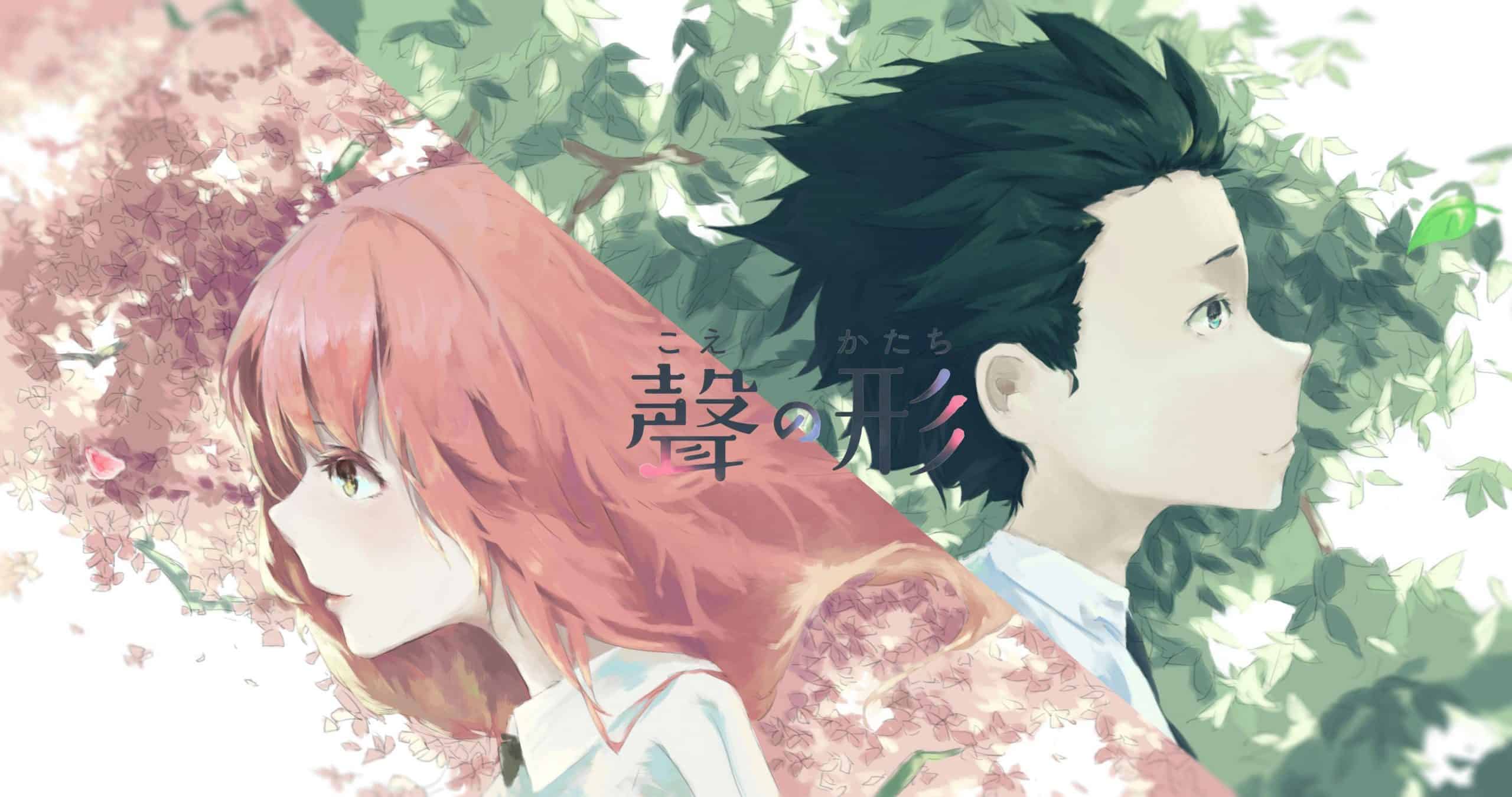
Shoko’s mother eventually becomes aware of how her daughter is being treated at school and intervenes, requesting disciplinary action against the bullies from the school’s principal.
After being ‘encouraged’ by his homeroom teacher, Shoya volunteers himself, Naoko Ueno, and Miki Kawai.
While taking Shoya home to apologize to his family, Miyako had one of her earrings ripped out of her ear, costing her almost 1,700,000 yen. Shoya becomes an outcast after his best buddy, Shoko, transfers to a new school and betrays him.
In the present day, Shoya is a senior in high school and has accepted his status as an outcast owing to his tragic history. He learned sign language and saved enough money to reimburse his mother for the hearing aids (only to see them burned to ashes when Miyako learned her son was contemplating suicide).
He plans to return to Shoko with the notebook they shared in sixth grade in the hopes of making up with her. Unfortunately, it ends up in the river when he throws it. Both Shoko and Shoya are devoted followers. He was put on indefinite leave when Yuzuru, Shoko’s boyfriend, posted a photo of him diving into the river on the internet.
During Shoya’s suspension, he brings his niece Maria to a park, where he encounters Yuzuru, who is ‘homeless’ since he ran away from home after his mother became angry with him for posting a photo of her dead son online.
Shoya, despite his animosity, welcomes Yuzuru back to his apartment, feeds him, offers him a place to sleep, and even buys him a new pair of shoes. After Shoya brings him back, Yuzuru tells everyone that he is really Shoko’s younger (and extremely protective) sister.
Also Read: Anime Characters Voiced by Yūki Kaji
4. Hi Score Girl
Hi Score Girl proves implementation trumps idea. It’s not a trope-fest despite its story structure. Hi-Score Girl has convincing character development that quickly replaces clichés with substance. Throughout the series, Haruo realizes that he is not a loser and tries to have a more optimistic attitude toward his hobbies.
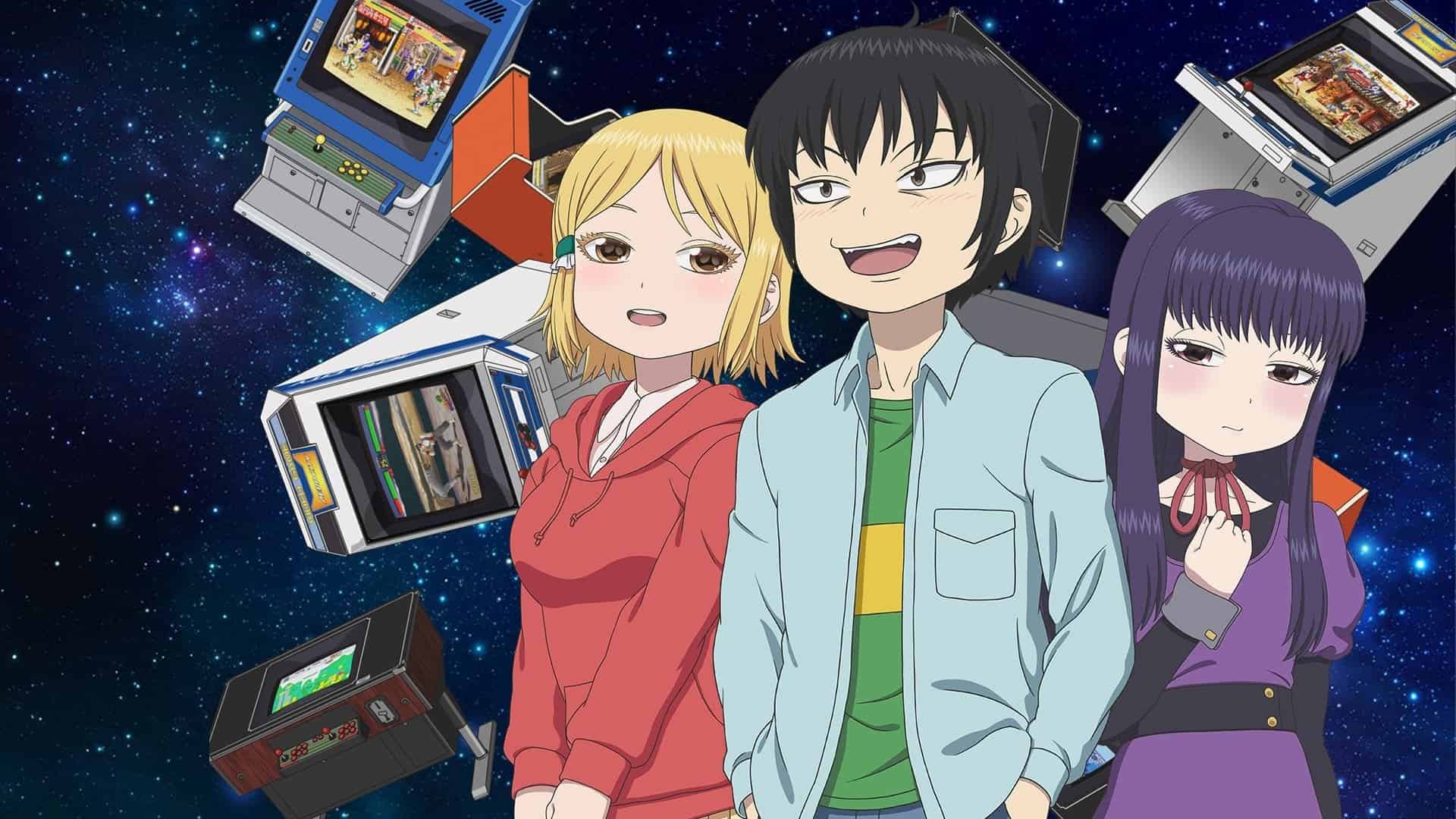
The show’s representation of these pleasures, such as its allusions to ancient arcade games, is part of its unique appeal. Anyone who lived through and played games in that period (myself excluded) would enjoy the nostalgia.
Hi Score Girl’s protagonists’ effervescent youth and emotional connections revolve around video games. You may relate even if you haven’t played the arcade games on the show.
Haruo, Akira, and Koharu’s interactions are my favorite. Akira discreetly pleads for refuge in her favorite games from the weight of her family name and legacy. Haruo embodies such a culture, and his kindness and effort make up for his poor academic results. I’ve never seen more engaging anime scenes of teenage love than when they play games to figure out what they mean to one other.
Also Read: 44 Anime like The Ice Guy and His Cool Female Colleague
5. Sailor Moon Crystal
Viewers who are only acquainted with the original anime will be surprised by the plot of Sailor Moon Crystal, which follows the manga quite closely.
The story follows Usagi, a young woman in middle school, as she comes to terms with the fact that she is really Sailor Moon, a magical warrior sent to save the princess of the moon.
She’s accompanied by four other females who stand in for other planets and a talking cat called Luna. They get together to defeat the bad guys and learn their true identities as former citizens of the Moon Kingdom.

In the original series, I never warmed to Usagi, but in this reboot, I think her best qualities are highlighted. She may still be a bit of a crier, but she’s demonstrated to be someone who can see beyond superficial characteristics to understand others.
Sailor Moon is more believable as a leader because of Usagi’s heart-warming treatment of the other Sailor Scouts, who were all outsiders when she first met them.
Not only did Usagi improve in this adaptation, but so did a lot of the other characters. Sailor Mars is a lot friendlier and less antagonistic than she was in the previous series. Thanks be to the absence of the ridiculous love triangle between Tuxedo Mask, Sailor Moon, and Sailor Mars.
Also Read: How Strong Is Sailor Moon? The Powers & Abilities
6. Romantic Killer
Labels like “romance,” “comedy,” “fantasy,” and “parody” all bring with them preconceived notions into the work, but “parody” is the key to understanding the author’s intention.
Anzu is not your typical love heroine, and the harem she finds herself in is nothing like the world she imagined. The fact that she is Riri’s first human test subject for her interfering love fairy antics is cause for concern. She is not a straightforward case, and there is no precedence for any of this.
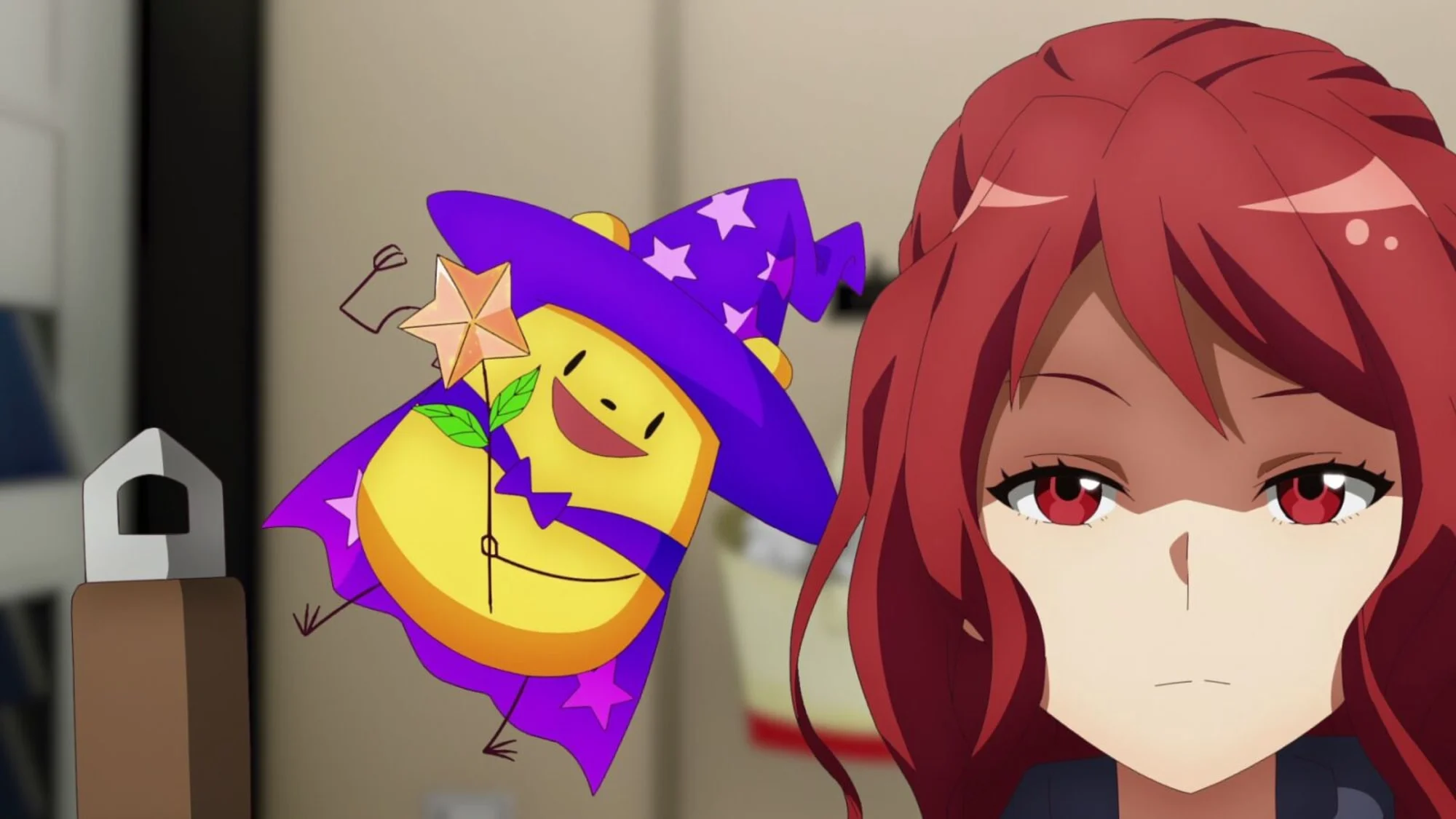
It doesn’t strike me as odd that she enjoys video games, chocolate (instead of savory dishes), and cats (instead of dogs). I can see how these values may be an issue for the stereotypical otome heroine, however.
Her three real loves are being kept hostage until she finds them. So far, so typical of a Cinderella story, right?
The anime’s characters, led by Anzu, are its greatest strength, and they’re on full display here. She is quite set in her ways and has no interest in helping Riri out with her schemes. She avoids obvious love subplots and wears pajamas with cats on them when she wants to be comfortable and express her obsession with her missing pet.
Unfortunately for Riri, she has magical abilities that might enhance their attempts to create improbable situations. The first episode of Romantic Killer was so absurd and cliched that I nearly gave up on the show altogether.
I felt sorry for Anzu, especially considering her age and the fact that she didn’t appear to care too much about what was going on, but Riri did a terrific job in their difficult position. I found myself caring about the characters and laughing along with Riri as I continued to watch, so I decided to give the program another go.
Also Read: Romantic Killer Season 2: Everything You Need to Know
7. Ouran High School Host Club
Haruhi Fujioka is a full-ride scholarship student at Tokyo’s exclusive Ouran Academy in the neighborhood of Bunkyo. Haruhi, in search of a peaceful place to study, falls into the Third Music Room, where a group of six male students known as the Ouran Academy Host Club assemble to entertain female “clients.” When Haruhi first meets the club’s members, he smashes an expensive vase and is forced to work as an errand boy to pay for the damage.
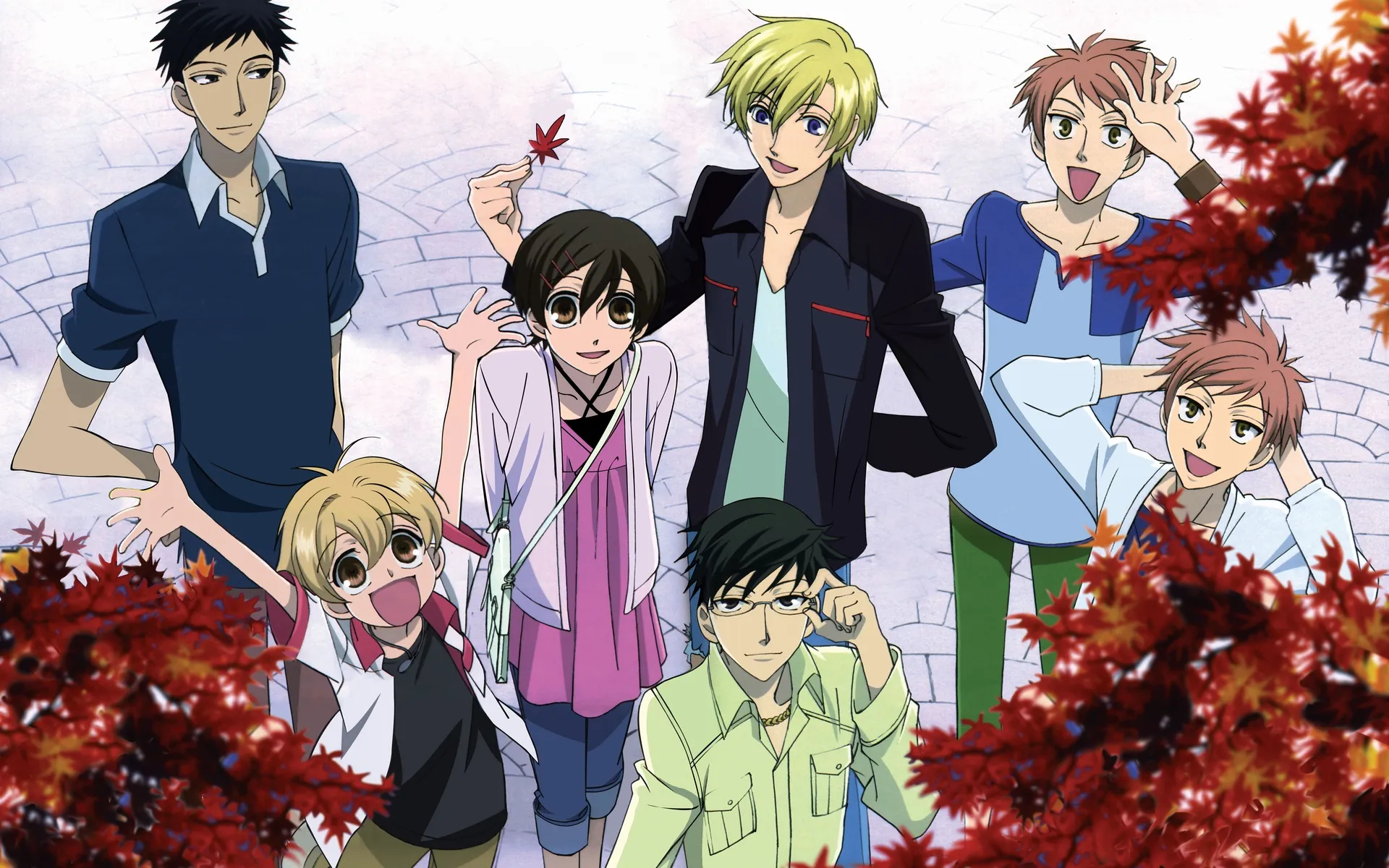
The hosts assume Haruhi for a male student due to her short hair, slouchy clothes, and gender-neutral appearance. As soon as the other Hosts see what a “natural” she is at making the girls laugh, they elevate her to full Host.
Hosting will speed up her debt repayment, so she gives in. Each member of the group eventually figures out her actual identity, but they never reveal it.
The bulk of the action occurs at Ouran Academy, a posh private school for the children of the wealthy. The wealthy are easily bored because of their high disposable income and a large amount of leisure time. That’s just up my alley, man.
When my boat isn’t accessible, I get tired of doing things like buying online and riding my jet ski. Actually, I’m not that barbaric.
That’s why, of course, there’s a Host Club where good-looking guys dote on females who are otherwise much too uninterested in life for a price. If you follow my reasoning, it is effectively a backward version of a traditional Japanese tea establishment.
Also Read: 42 Anime Like Ouran High School Host Club
8. The 100 Girlfriends Who Really REALLY Love You Episodes
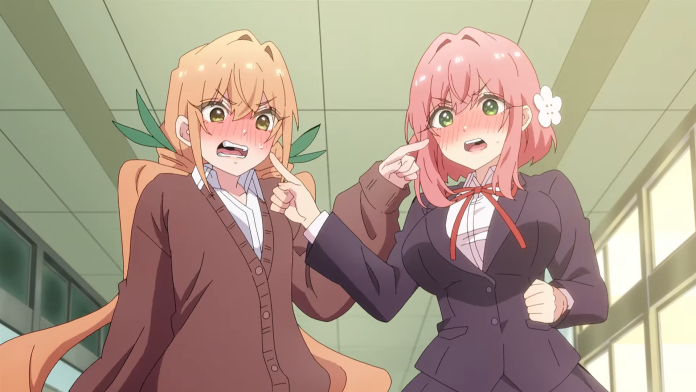
Rentarō Aijō, a young man with a history of 100 unsuccessful love confessions, makes a wish at a shrine on the last day of middle school, hoping to find a girlfriend in high school.
Surprisingly, the God of Love appears and reveals a unique twist to Rentarō’s fate: he is destined to have not one, but 100 soulmates due to a celestial error.
This prophecy starts to manifest on his first day of high school when he meets Hakari Hanazono, a wealthy student, and Karane Inda, a girl with a tsundere personality, both of whom immediately fall for him.
Faced with a dilemma, Rentarō is unable to choose between Hakari and Karane. That night, he learns from the God of Love that if he rejects any of his soulmates, they will meet a tragic fate.
To prevent this, Rentarō decides to date both Hakari and Karane, forming a mutual agreement with them.
As the narrative progresses, Rentarō encounters more girls who become part of his life, each becoming his girlfriend and joining what becomes known as the “Rentarō Family.”
This unconventional, polyamorous setup leads to a series of adventures and interactions among the members of the Rentarō Family, showcasing the dynamics of their unique relationships.
9. Vampire In The Garden
Humans and vampires coexist in Vampire in the Garden, with each group maintaining its own distinct culture and social structure. Culture, right, and music in particular. That’s a major factor that sets humans and vampires apart.
At first look, it may seem that one is superior to the other, but with further inspection, it becomes evident that neither is, in fact, in charge. The conflict brings together two women who, despite their differences and difficult backgrounds, find common ground in their desire for freedom.

One thing I found intriguing about each episode was how it made me think about other tales. The pilot reminded me of Izetta, whereas the second episode was all Beauty and the Beast. They re-used plot elements from previous tales but did a fantastic job of weaving them into their own narrative.
It had its flaws, but in this day and age, is there anything that is? The reason I called Mouretsu Pirates “perfect” was not because it was without flaws but because it satisfied every need I had when it came to watching an anime.
Many arguments are about that Vampire in the Garden isn’t perfect; rather, it’s well-executed for the tale they intended. The narrative is dramatic and dismal, but there is a glimmer of hope, and I will get to the major event shortly. Basically, it’s bittersweet. For some reason, despite the fact that I felt terrible for the heroines and even some of the supporting cast at various points, I do not feel any remorse for having seen this.
Also Read: WIT Studio’s New Project: Vampire In The Garden
10. Kimi Ni Todoke
Kimi ni Todoke is about a guy and a girl who are secretly in love with each other and who desperately want their emotions to “reach” the other (thus the title, “reaching you” or “from me to you”). The first season of the anime is narrated mostly from the point of view of Kuronuma Sawako, a girl whose classmates spend their time spreading tales about her because she behaves a little unusual and looks a little spooky.
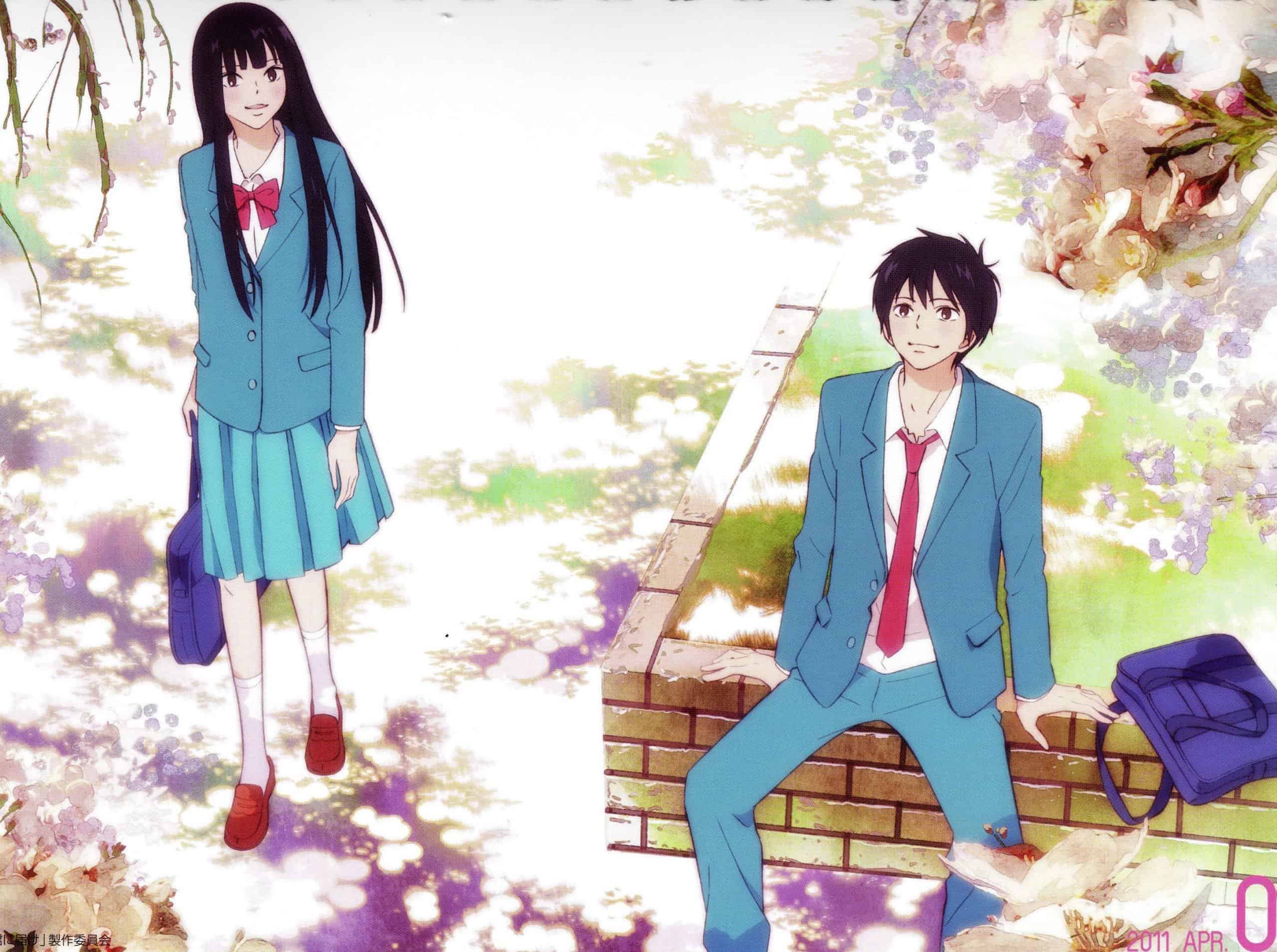
The most popular kid at school, Kazehaya Shouta, is the only one who treats Sawako with any degree of care, who smiles at her and seems to be equally nice to everyone, Sawako included. Sawako wants to learn how to be as affable and well-liked as him because of the way he treats her. He tries to be real and gives everyone a chance, and he grins at her when she says, “Good morning!” He supports her by including her in as many classroom activities as possible so that her peers may see her for who she really is.
Eventually, they both realize they love one other, but Kazehaya does so first. He has emotions for Sawako, but he isn’t sure how to express them due to her naivete. She holds back because she doesn’t know how to express her true sentiments and because she doubts that he, as a popular and well-liked lad, could ever feel the same way about her. The two have trouble expressing their feelings for one another because of a series of miscommunications and misunderstandings. Despite their fears, they each want passionately for their love to reach the other.
Also Read: 25 Best Romance Anime To Watch On Netflix
11. Toradora!: The True Meaning of Bento
Ryuji Takasu is a sophomore in high school, and we join him here as he gets ready for the next academic year. People assume he is terrible because of his intimidating appearance (he seems more like a young yakuza member than a high school student) and because of the way his eyes look.

Only his best friend, Yuusaku, and his crush Minori (who he is too afraid to approach), don’t believe his eyes are evil. Within a short time, he accidentally crosses paths with Taiga Aisaka, the Palmtop Tiger and the key female protagonist. Considering that Taiga accidentally KO’d Kitamura in the face during their first encounter, Ryuuji is astonished to find a love letter to Kitamura in his bag at the conclusion of the school day.
Later that night, Taiga goes into his house and murders him with a bamboo blade to retrieve the letter, only to learn that she neglected to put it in the envelope and has thus revealed her crush for Kitamura to Ryuuji.
Also Read: 43 Anime Like Boarding School Juliet That You Should Watch
12. A Lull In The Sea
The characters of Nagi no Asukara come from both the land and the water. The more advanced land civilizations get, the more isolated maritime societies become. Apocalypse looms larger as the once-thriving sea community’s population declines and the now-forgotten sea deity prepares to freeze the land, shifting future power dynamics back to the ocean. Four middle schoolers, the youngest members of the remaining marine population, find themselves in the middle of the conflict between land and water.

When the school in their underwater community is forced to shut down owing to a shortage of pupils, four of their buddies find themselves acting as unofficial ambassadors to the villagers of a nearby land community. Although tensions are high at the beginning of Nagi no Asukara, characters eventually begin to build close bonds with one another, whether romantic or otherwise. As the teens try to communicate their feelings or keep them hidden in the face of an impending disaster, they form closer ties with one another.
Two storyline summaries for the same show, Nagi no Asukara, are shown above. One focuses on the series’ larger social and political themes, while the other zeroes down on the connections between individual characters. If you’re a fan of the show, your heart is probably more with the second group than the first.
Finding happiness for Miuna Shiodome makes it hard to care about the larger story of the earth slowly freezing over. Nagi no Asukara’s script, led by series composer Mari Okada, deserves praise for its seamless blending of the two narratives.
Also Read: Code Geass Watch Order: Anime, Movies & OVAs
13. Rascal Does Not Dream Of Bunny Girl Senpai
Bunny Girl Senpai, also known as Rascal Does Not Dream of Bunny Girl Senpai, is a program that doesn’t shy away from controversial topics. Bunny Girl Senpai is not your average odd anime, despite its incredibly ludicrous name, which may not instantly captivate you unless you are of a specific demographic (you know who you are). It was instantly recognizable as a novel that defied its cover in the winter of 2018.
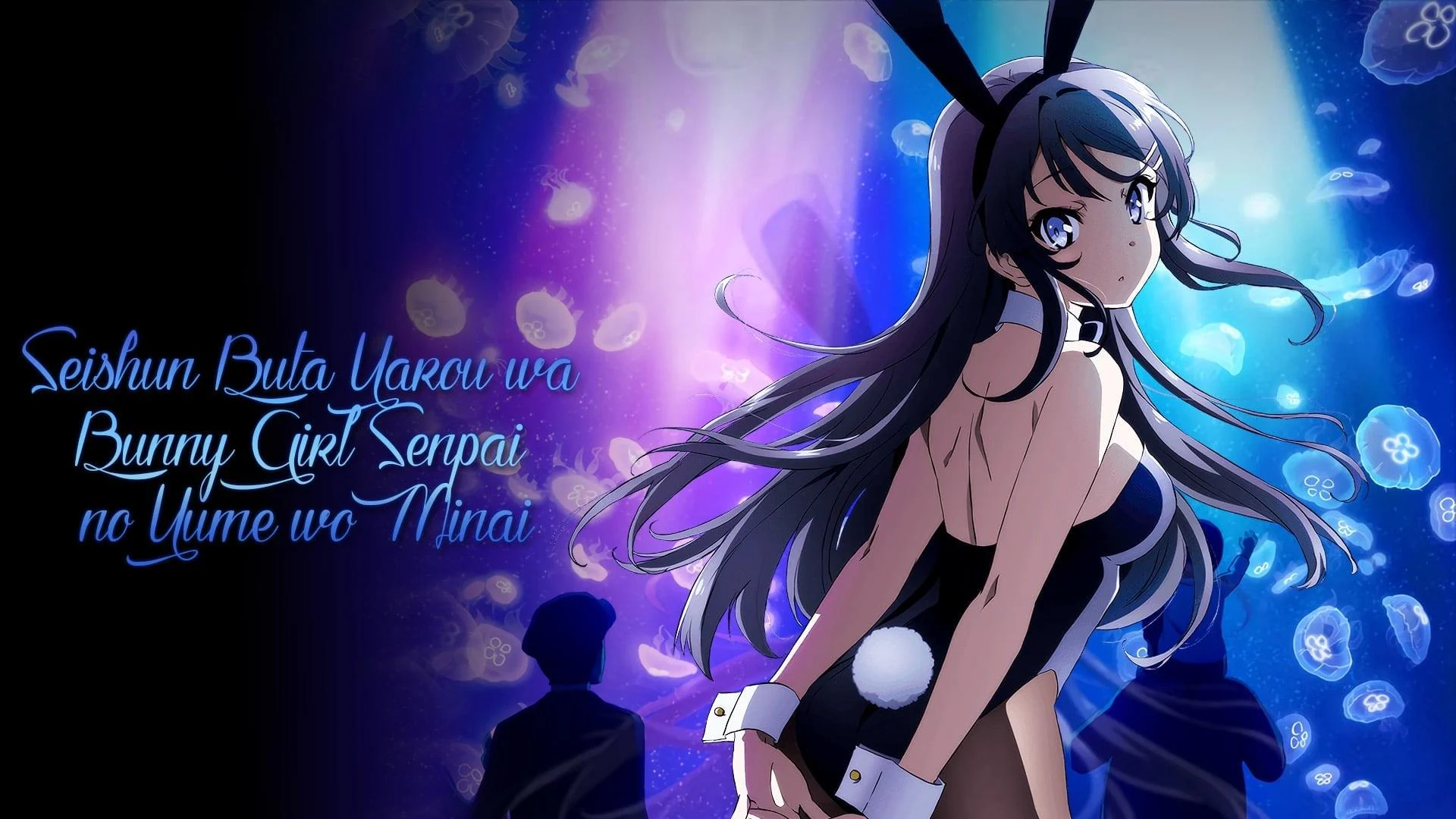
In Bunny Girl Senpai, Sakuta Azusagawa acts as a mentor to a wide range of characters, assisting them as they battle what has been dubbed “Puberty Syndrome” in this fictional setting. Puberty Syndrome is an uncommon disorder that manifests as a physical manifestation of the patient’s most pressing emotional or psychological concerns.
This is shown by Mai Sakurajima, a former child star who is now taking a hiatus from the public eye. However, since she is so unapproachable, no one pays any attention to her at school. That’s why she’s “fading into the background” now. People’s initial refusal to acknowledge her gives way to blindness as she sinks further into obscurity.
Also Read: Rascal Does Not Dream of Bunny Girl Senpai Season 2 Updates
14. Komi Can’t Communicate
Shoko Komi suffers from social anxiety, as is made clear in almost every episode. Despite this, though, Komi still desires to make relationships with others. In fact, after being befriended by the perfectly normal Tadano, she set a goal for herself to amass 100 friends.

Some LGBT representation is provided by the over-the-top character of Naijimi (and technically Yamai, but we’ll get into her later) and the ensemble cast, all of whom are given major character treatment in their overall design. Buckle up for a clean adventure that depends on the kind of ludicrous miscommunications that would only make sense in the stylized culture of anime/manga (not necessarily real-world Japan).
Tadano’s normalcy makes him a relatable protagonist, while Komi’s beauty and the dehumanization she faces are emphasized. The show’s propensity to play into its characters’ foibles and/or eccentricities is what adds a dash of the surreal to what would otherwise seem like a simple slice of life. More than the dynamic between Komi and Tadano, it is the ensemble that drives the performance.
Also Read: Who Does Komi End Up With In Komi Can’t Communicate?
15. Violet Evergarden
The Drossel Royal Family sends Violet to a prestigious boarding school for three months so that she may assist a girl named Isabella York while she gets ready for her début. The two don’t get along at first because Isabella is far from the other students and seems unfamiliar with the formalities and traditions of higher society, which Violet has noticed. Violet’s kindness and compassion enable her to help Isabella, who in turn inspires admiration from her peers.
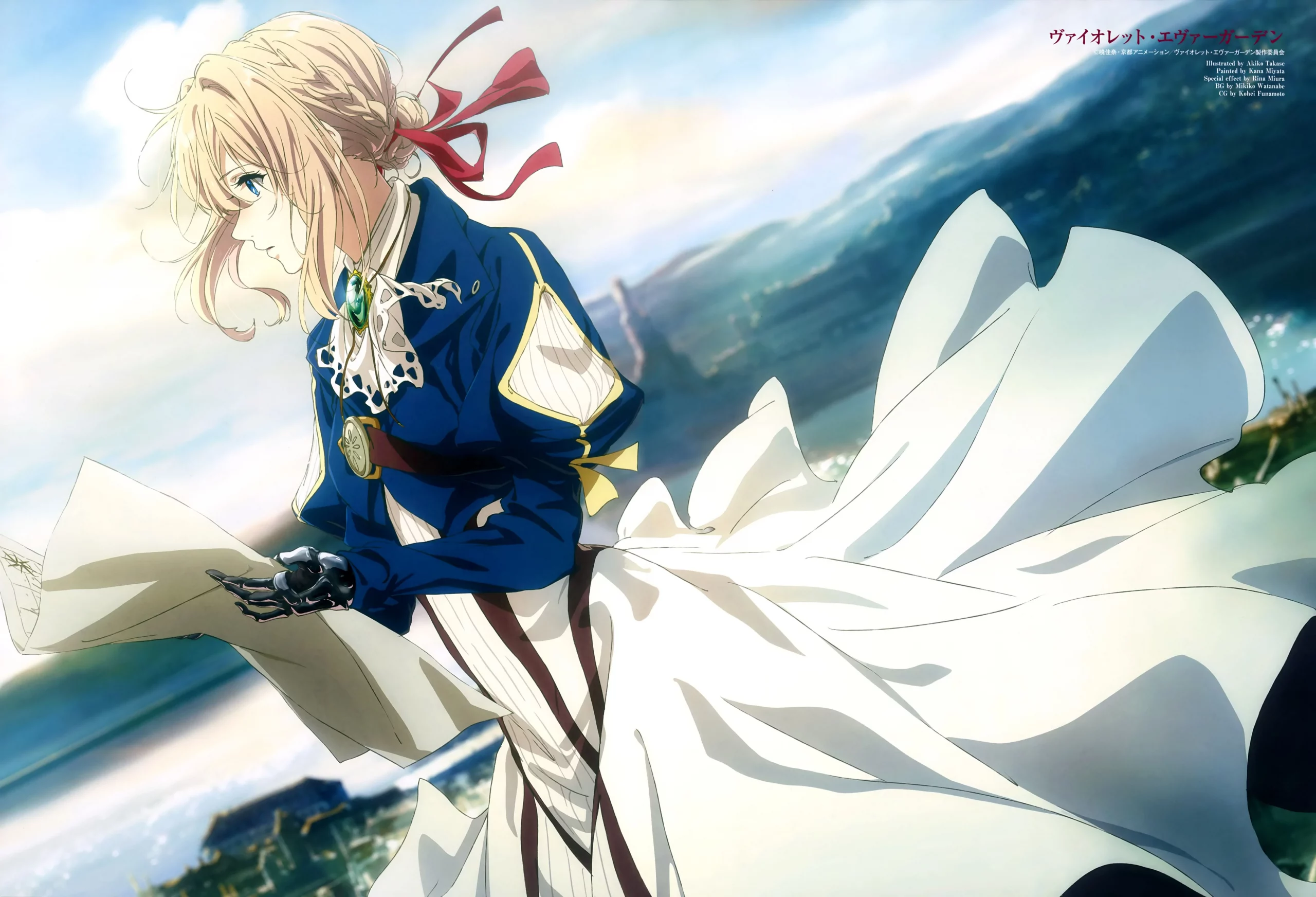
When Isabella has a coughing episode one night, Violet stays up with her to make sure she’s okay, and Isabella learns that Violet is a kind person. Isabella and Violet gradually become friends as they learn about one another’s histories. Isabella was really an illegitimate heiress’s daughter named Amy Bartlett, who was sent to a poor household. She raised a little girl named Taylor as her own, treating her like a sister. After the war was over, the Yorks located Taylor and encouraged her to become part of their family.
Taylor leaves the orphanage three years later and ends herself in Leden, where she approaches the CH Postal Company about becoming a courier. Hodgins, remembering Violet’s humble beginnings at CH Postal, convinces Benedict to take Taylor on as an apprentice and has Violet teach Taylor the alphabet and the alphabetic principle. When Violet finds out that Taylor has come to think that a courier gives happiness, she offers to assist Taylor in penning a letter to Isabella while they are out on a delivery route together.
Also Read: Violet Evergarden Watch Order Guide
16. Sword Art Online
In the penultimate episode of SAO, Kirito (actual name Kazuto Kirigaya) had just rescued his online sweetheart Asuna from a pedophile doctor after he had survived a traumatic two-year coma that left him medically incompetent and in bad condition. Thankfully, a year has passed since then, and he is back to full health, rehabilitation, and reintegration into society. He now attends a school designed for survivors of the Aincrad disaster, including Asuna, Lizbeth, and others.
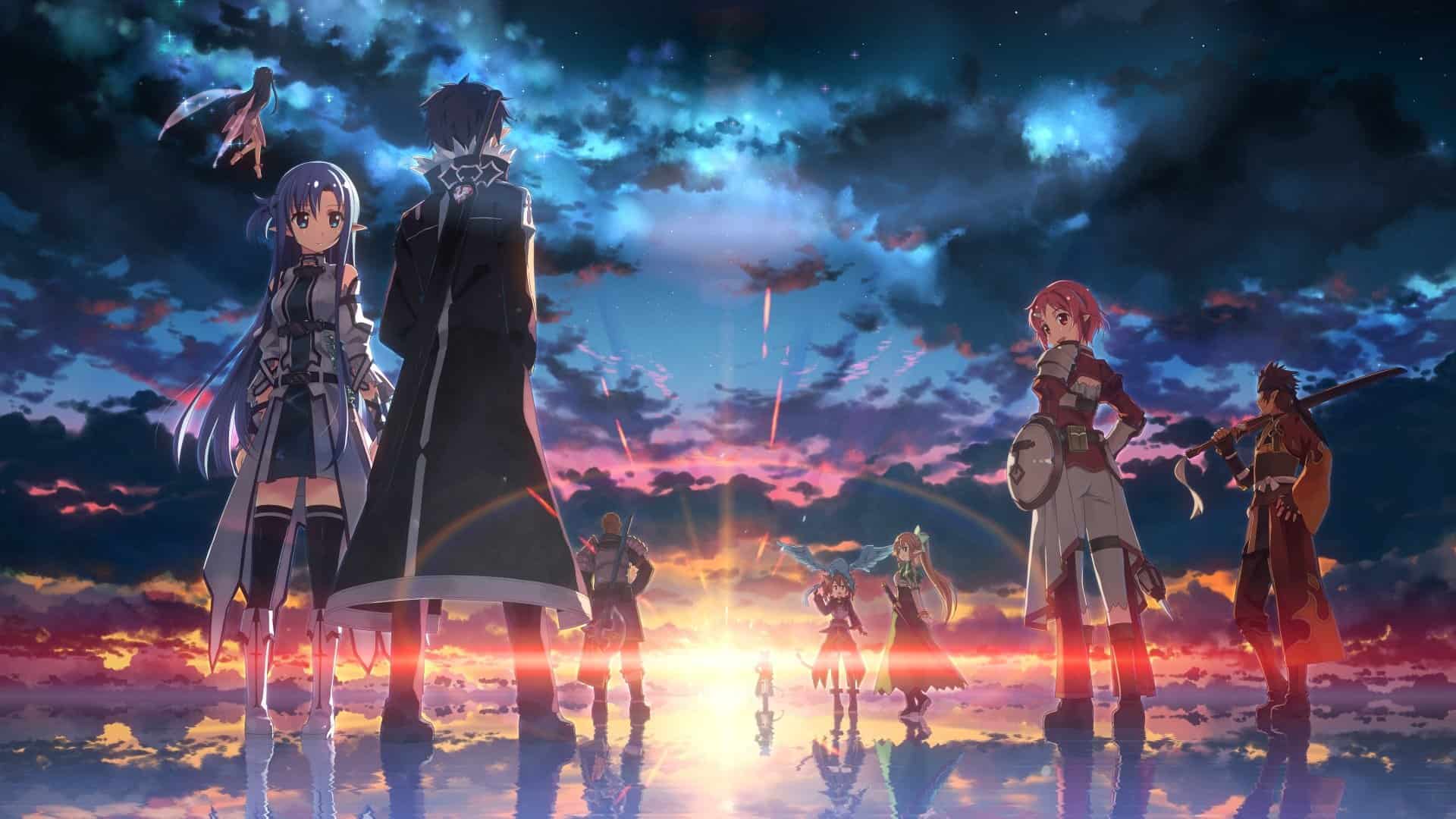
A government official named Kikuoka Seijirou provides information on an event on the game Gun Gale Online (henceforth GGO) in which a player had been discovered dead from a sudden cardiac arrest while in the midst of an international match – with the questionable, viewed Death Gun, on the loose. Despite the trauma, he is still just as enthusiastic as ever about the virtual-reality side of things, and he gets his chance at redemption. Asuna is worried, but she supports his intention to look into it, so he creates a new avatar of himself that is more feminine and joins GGO.
Joining him is Sinon (Asada Shino in-game), a sharpshooter with a paralyzing fear of firearms stemming from a traumatic experience as a youngster. This makes Endou, a female at Sinon’s school, a frequent victim of her teasing and taunting. She is rescued one day by Shinkawa Kyouji, an identical gamer and the heir apparent to his father’s medical company, who takes an interest in her games and eventually becomes a friend.
Also Read: Sword Art Online Unital Ring Anime: Release Date & Where To Watch
Honorable Mention
Peto Kano

17. One Piece
One Piece was developed by Japanese mangaka Eiichiro Oda. It has been serialized in Weekly Shonen Jump since August 4, 1997, and Shueisha has been issuing Tankobon volumes collecting the chapters since December 24, 1997 (volume one) until as late as June 2014 (volume seventy-four). In One Piece, a young kid named Monkey D. Luffy leads a band of pirates known as the Straw Hat Pirates on many adventures. Luffy sets out in search of the fabled One Piece on his way to becoming the next Pirate King.
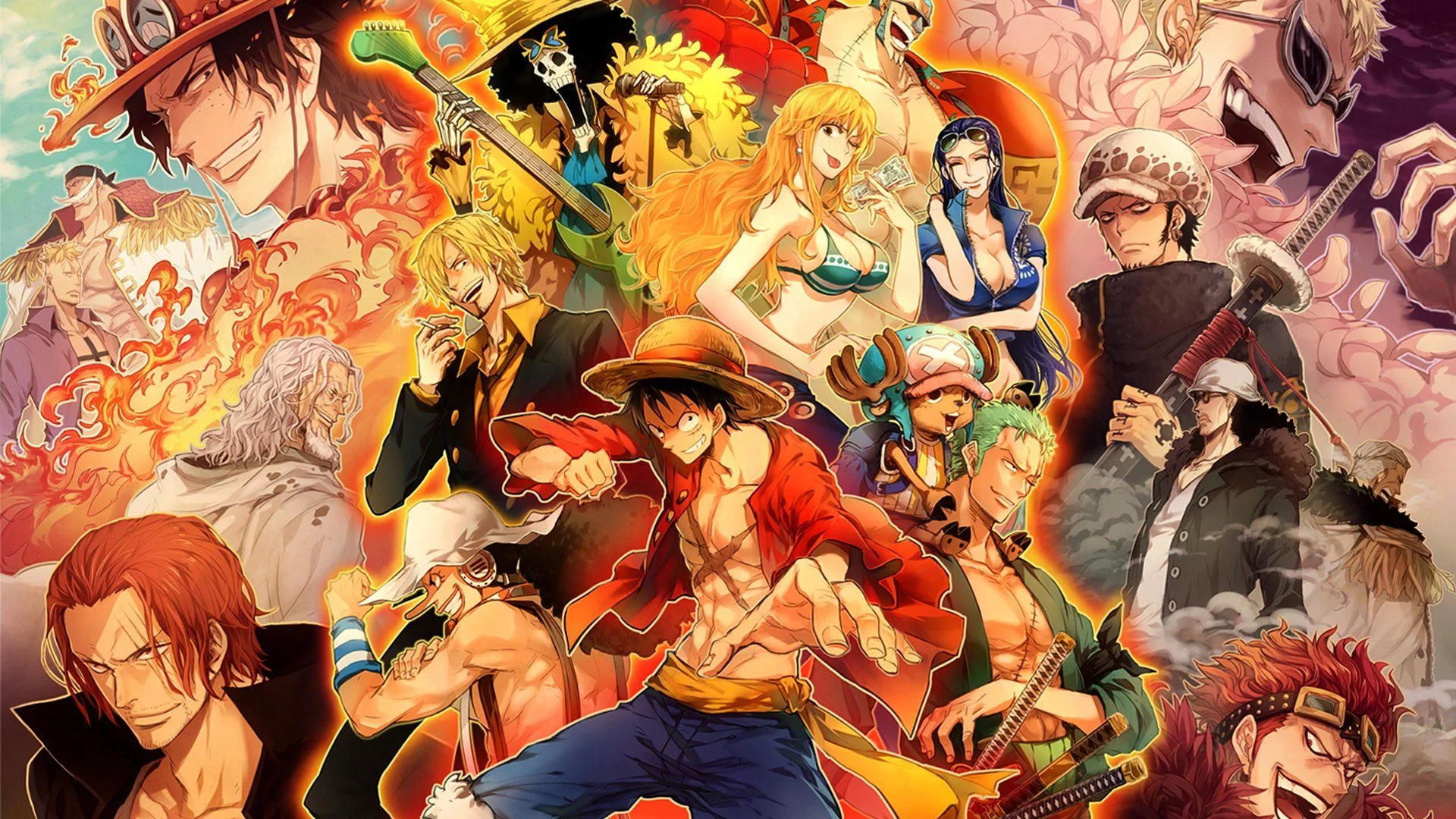
Based on the chapters, an OVA was produced in 1998 by Production I.G, and an anime series was produced by Toei Animation and initially shown in Japan in 1999. There have been approximately 600 episodes of the program shown since then. Toei has created a total of twelve animated features, two animated shorts, and five television episodes. Video games and other items, including trading card games, have been developed by many companies.
Gold Roger was dubbed the Pirate King because he was the most powerful and notorious pirate to ever cruise the Grand Line. The change occurred everywhere when the World Government captured and killed Roger. The location of the greatest treasure in the world, One Piece, was disclosed in his last words.
This discovery ushered in the Grand Age of Pirates, a time when men set forth in search of One Piece, a legendary treasure said to provide its owner untold wealth, notoriety, and, perhaps most sought of all, the title of Pirate King. Here comes 17-year-old Monkey D. Luffy, who doesn’t fit the stereotype of a pirate. Luffy’s purpose for becoming a pirate is one of genuine amazement, as opposed to the stereotypical image of a nasty, hardened, bearded pirate who ransacks towns for amusement.
Also Read: One Piece Anime Review: What Makes This Anime So Special?
18. JoJo’s Bizarre Adventure
The title reveals the show’s premise. It’s strange. Horse-hidden monsters. A vampire who freezes anybody who touches them. Exploding zombies with peculiar breathing. Lists continue. This seems strangely devoid of context. If you believe in reality, my times are worse than anything.
Hamon’s versatility makes it intriguing. The heroes use trick after trick to fight Dio in these nine episodes. The hero’s journey is brief, yet the emotional core intrigues me. You want to kill the vampire since he stole so much from Jonathan. Both guys are driven to insanity.
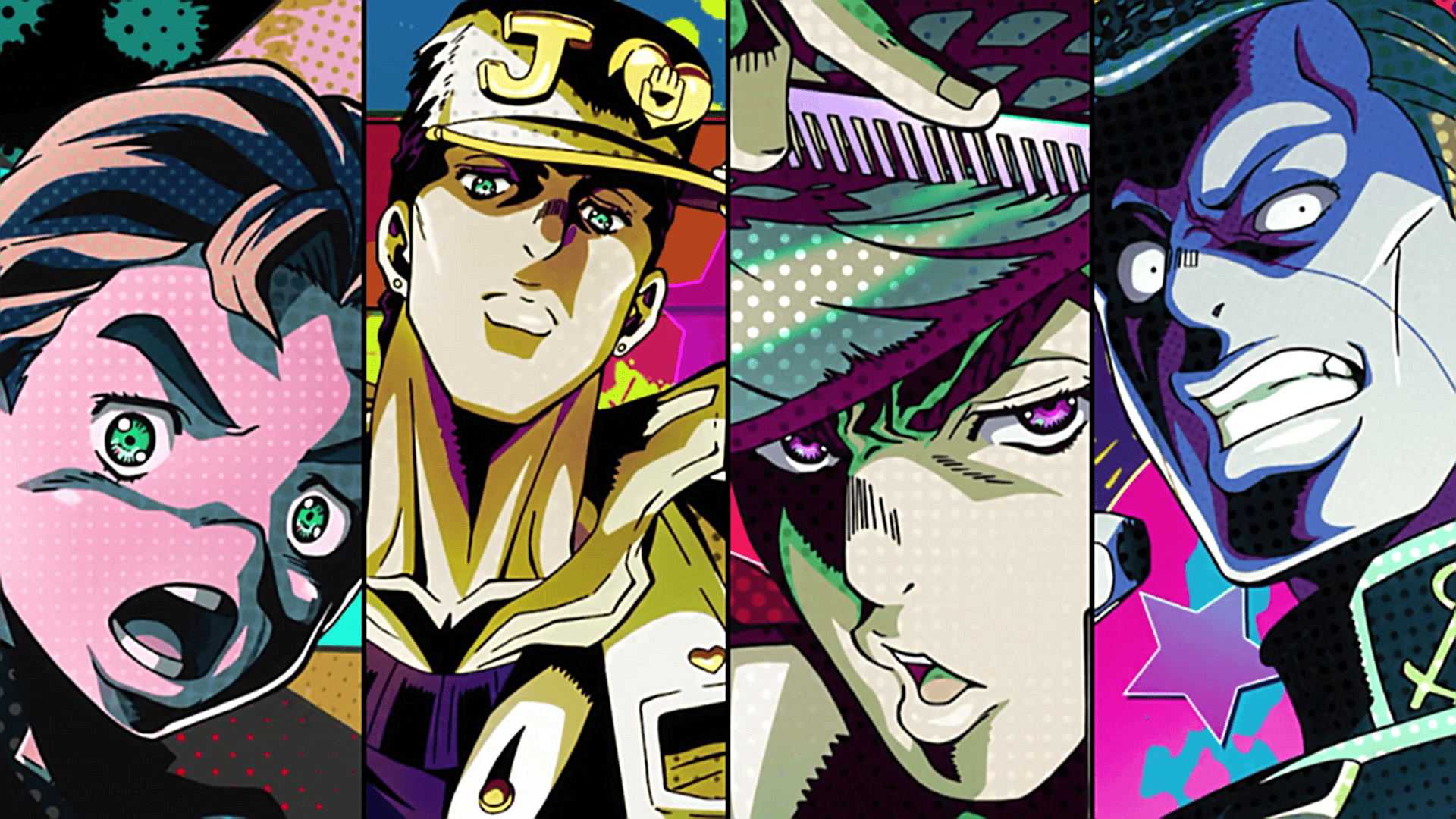
Five characters deserve consideration. Zeppli is unexpected yet nice. His sacrifice to rescue Jojo proves he’s not all about retribution. He wants justice and will die so his buddies may continue the quest. Robert E.O. Speed wagon followed him. He constantly commented while accomplishing nothing. He anchors the audience, indicating how crazy everything is. Erina seems like a basic love interest, yet she has depth. Initially opposing Dio and eventually becoming…well, that’s a spoiler. She has changed a lot throughout the years.
Jonathan and Dio, the heavyweights. True opposites. Jonathan had everything, Dio nothing. JoJo was gentle and chivalrous, whereas Brando was manipulative. JoJo was brutish, but Dio was wise. Their understanding made their struggle stand out. JoJo had to overcome his doubts to defeat Dio.
Brando, who was often seen as wicked, had moments of tenderness. Jonathan became his equal. It’s good, but I’ve seen better rivalry. When they fight, we know why. Their losses. That’s why Jonathan’s death aches. Yes, kids. The hero dies. I knew JoJo’s Bizarre Adventure had me when I was heartbroken at its finale.
19. Fullmetal Alchemist: Brotherhood
In 64 episodes, we get to know and follow the lives of a wide variety of people. Exciting moments coexist with heartbreaking ones, humorous ones, and interesting ones. The narrative drags us through a scenario that is first straightforward but gradually becomes more intricate as we go across the canonical universe of FMA: B. The stakes gradually increase, as does the level of intrigue, as more mystery aspects are gradually introduced.
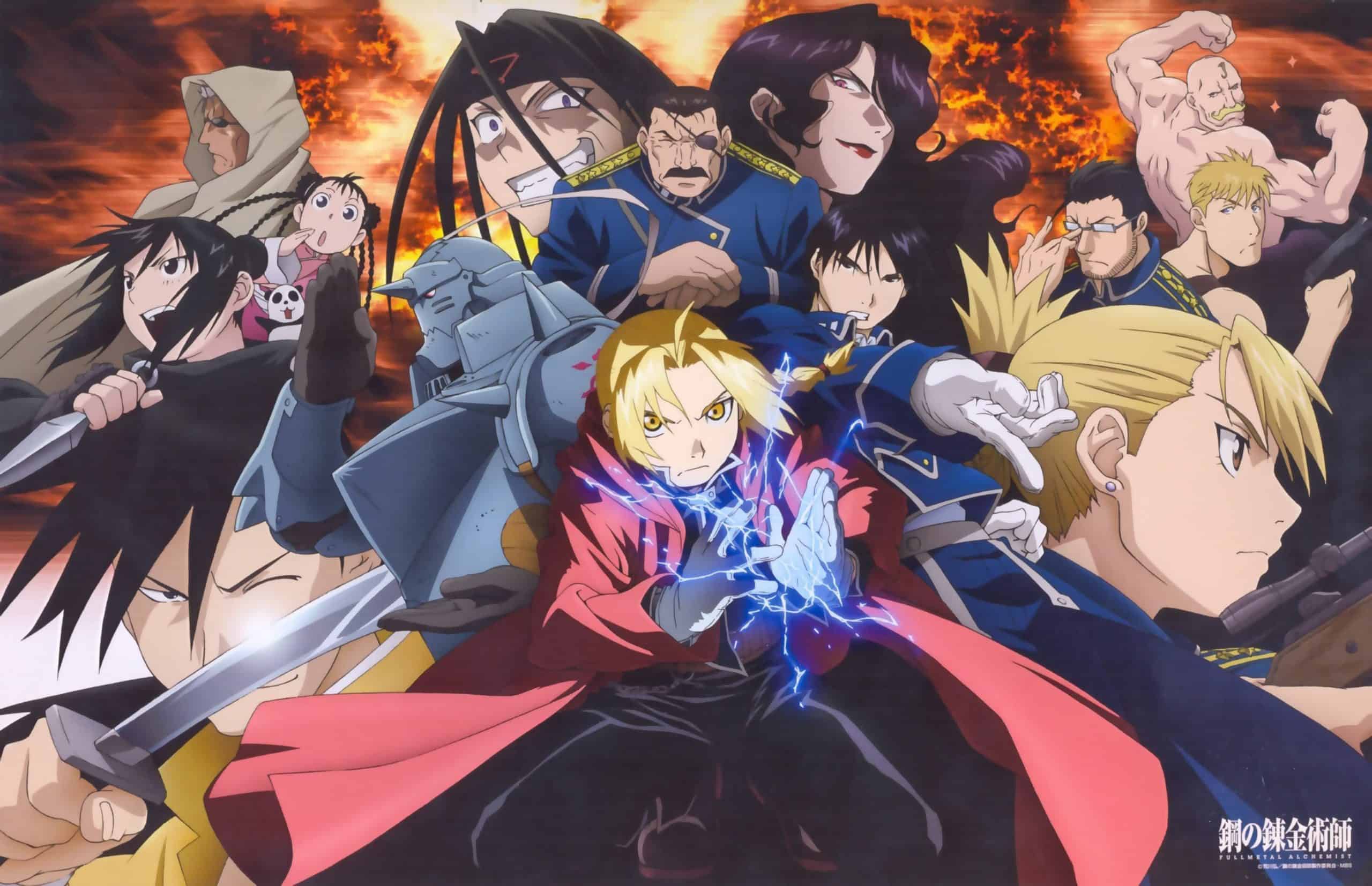
When the fourth season of Brotherhood concluded, the Homunculi and the dissident side led by Mustang and the Elric brothers were in the midst of a deadly fight over Amestris. Season 5 is the culmination of the battle, with the remaining episodes functioning as a coda. Melodrama and drawn-out battles involving many Homonculi and other characters’ deaths dominate this season.
The Elrics and Mustang’s main antagonist this season is “Father,” the leader of the Homunculi and the cause of many of the nightmares we’ve seen over the show’s first four seasons. Mustang and his companions occupy center stage in the first half of this season, even if Edward and Alphonse Elric are the show’s true protagonists.
Edward, Al, and Winry Rockbell all sit around and do nothing for many episodes. This is strange and disappointing. The denouement, although satisfying in its own right, fails to live up to the promise of the fourth season’s build-up.
Also Read: Fullmetal Alchemist: Brotherhood Review – Is The Anime Worth A Watch?
20. Weathering With You
One of the most important themes in Weathering with You is taking personal responsibility for one’s actions. Feeling hopeless, Hodaka abandons his family and moves to Tokyo. He is unable to do anything except respond in the best way he can. Hodaka first demurs from duty in Tokyo because of his persistent tardiness. When Hodaka first meets Hina, he is deeply moved by her kindness and charity. He approaches Keisuke in an effort to assist him.
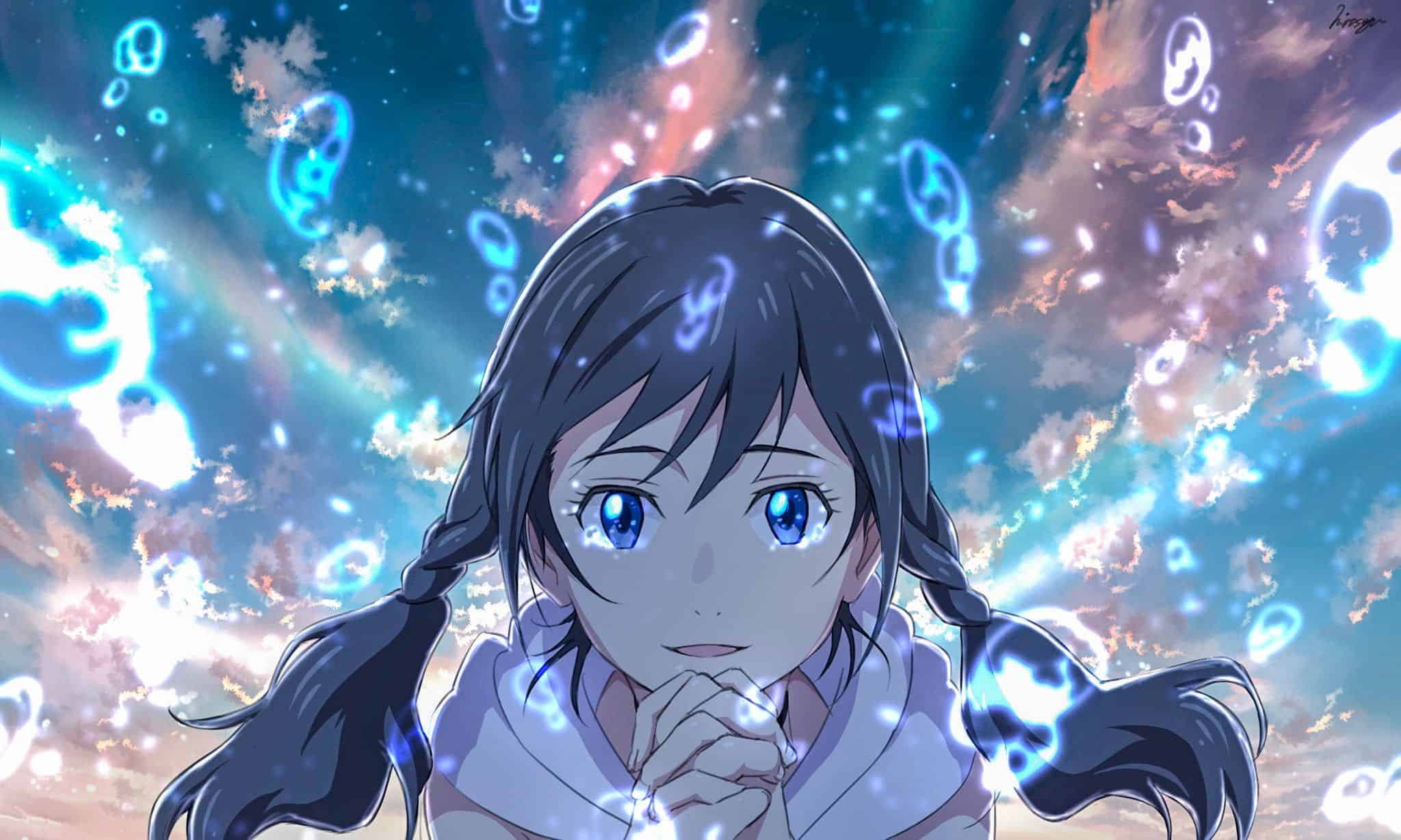
Hodaka meets Hina after taking on extra responsibilities. For Hodaka and Hina, their journey brings both joy and sorrow. After being arrested, Hodaka’s feelings for Hina blossom into love, and he starts looking out for her best interests even when it appears like he’s neglecting his obligations, as when he runs away from the police headquarters. After saving Hina from the sky, Hodaka decides to stop running; he is then kidnapped, tried, and brought back home, but not before making a vow he won’t violate.
Makoto Shinkai advises his audience in Weathering with You to always be true to their word. Hodaka benefits greatly from the lessons he learns about duty and love in Tokyo. Before he could find happiness with Hina, he had to quit trying to avoid facing his issues. Hodaka’s growth as a person, his comprehension of what it means to take responsibility for his actions, and his willingness to love and support Hina no matter what are all on show in his return to Tokyo, his chat with Keisuke, and his discovery of her.
Also Read: 20 Anime Movies like Weathering With You That You Should Watch!
21. I Want to Eat Your Pancreas
The film’s whole storyline is overcast by the presence of death. Because the protagonist is aware that Sakura will die before she and her companions, even the protagonist’s most joyful recollections of her time with Sakura are tinged with sadness, don’t assume the film is depressing just because the audience and I laughed a lot throughout it. The protagonist is quiet and introverted; thus, the comic relief comes from Sakura’s outgoing nature.
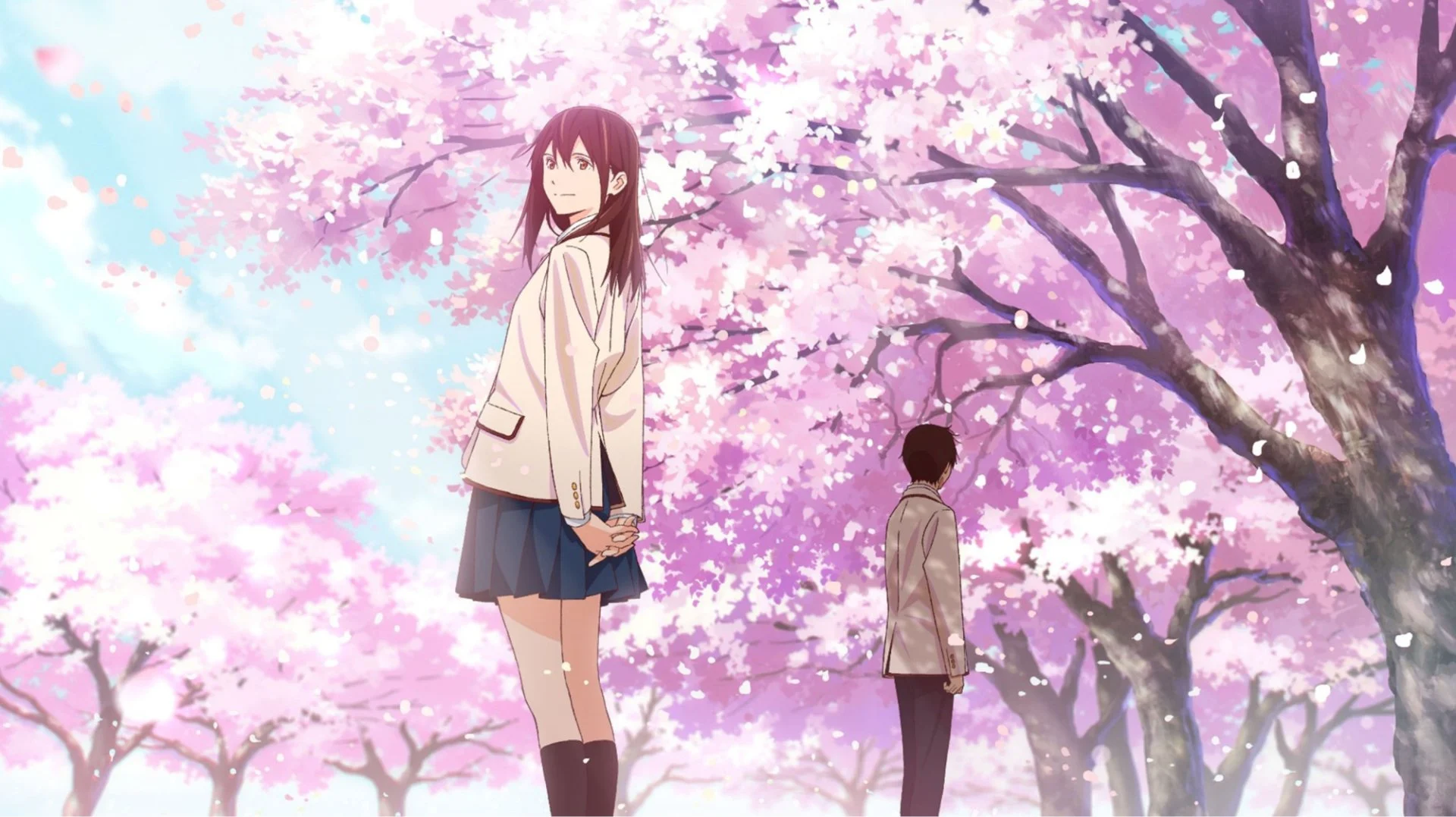
The suddenness of Sakura’s death does not make it any less tragic. When the news of her death was announced, there were audible gasps of shock and dismay from the audience. It’s a knockout blow that hints at the climax to come. I think most people, including myself, would agree that the story’s finale drags on for a little too long. The film might have had a far greater impression on me and others if its last 20 minutes were cut.
Despite her youthful look, 17-year-old Sakura Yamauchi is in the latter stages of a deadly pancreatic ailment. Our nameless narrator (whose identity is deliberately withheld until the film’s finale) discovers her illness and the existence of her journal, titled “Living with Dying,” during a routine hospital visit. They become closer in the months before Sakura’s death because of his pledge that he would never inform anybody about her illness.
Also Read: I Want To Eat Your Pancreas Review
22. A Whisker Away
In A Whisker Away, Miyo deals with the aftermath of her parent’s separation while also developing feelings for a classmate. But her bold nature is off-putting to him, so she needs to find other ways to get his attention. After meeting a mystery guy, Miyo is gifted a mask that permits her to assume the appearance of a fluffy cat. This is how she finds up befriending her crush, but it also leads to her questioning her humanity and identity.
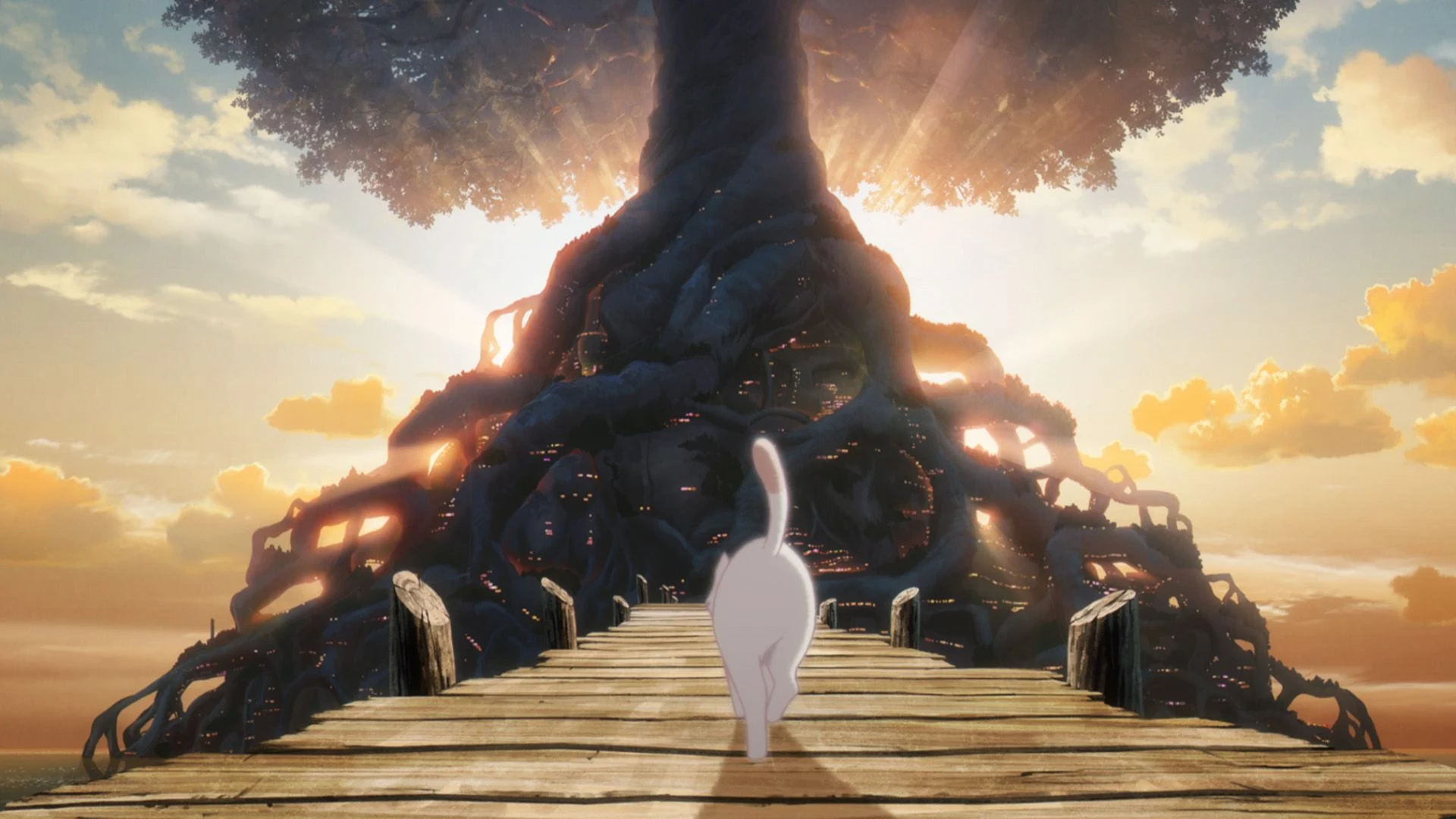
The stunning animation and charming supporting characters prevent A Whisker Away from becoming any creepier than it already is. Although there are no unexpected turns, and the tale is rather linear, it is nevertheless a lot of fun to watch, despite the predictability of the storyline. Both the original Japanese cast and the English dub have fantastic performances.
A Whisker Away, animated by Studio Colorado, is lovely yet flawed. Miyo is the film’s major problem. She’s cute and sympathetic as a kitten, wanting affection. Her human appearance is overly forced and promotes the quirky girl ideal rather than her unneeded behavior. It avoids the bashful girl cliché but was poorly handled. It is one of the most enjoyable animated films I’ve seen, despite this drawback.
Also Read: A Whisker Away Review
23. Kokoro Connect
Not belonging to any other cliques at school is a problem for five members of the Student Cultural Society. Without a social outlet, they create the “StuCS” organization. Yoshifumi Aoki, a jovial man with a crush on Yui Kiriyama; Taichi Yaegashi, a wrestling lover; Iori Nagase, a positive individual who is constantly sure of oneself; Himeko Inaba, a cool, smart girl with a tough demeanor; Yui Kiriyama, a little girl who loves karate; and so on.
Due to their unique qualities, Heart Seed is drawn to this gang of misfits, and they quickly form a tight-knit friendship. The phenomenon begins, putting stress on the bonds between the five kids.
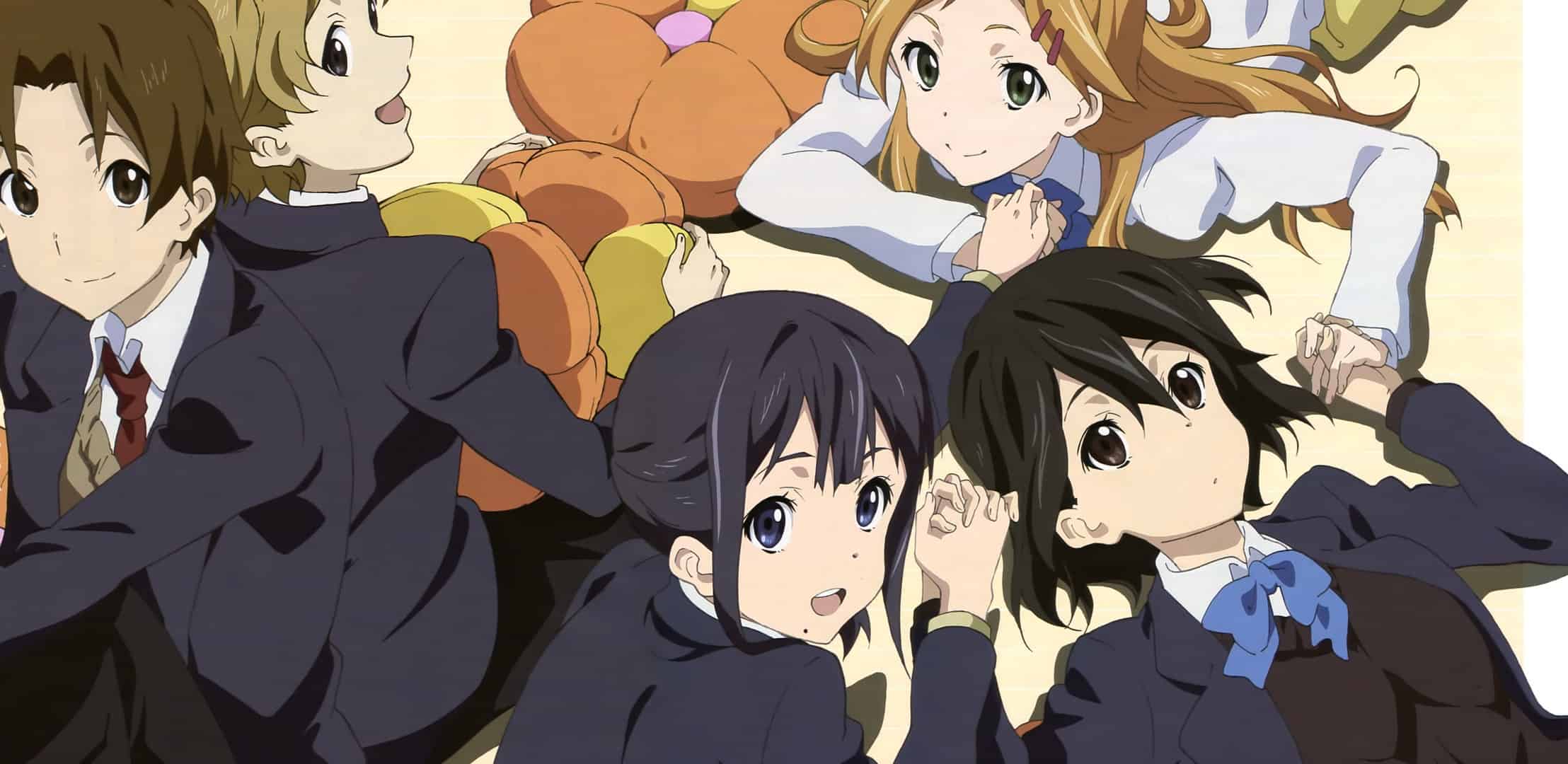
The first four phenomena in the program are completely ridiculous. Some examples include telepathy, shapeshifting, and the ability to express latent emotions. The early gags in the program are supported by a creative fervor, which is surprising given that this concept generally leads to awkward, ecchi situations. Despite having some funny moments, Kokoro Connect is not a comedy. All of the Heartseed occurrences are difficult for students.
What’s surprising is that the obstacles have nothing to do with random people discovering the phenomenon or with the phenomenon itself surviving inconsequential occurrences. The tension arises from the students learning about one another’s personal struggles and secrets. Same as Iori. She has spent her life developing a wide range of personas to suit the various temperaments of her fathers. When she is coerced into exchanging bodies with other gang members, her true identity is exposed.
Also Read: 43 Anime Like Boarding School Juliet That You Should Watch
24. Kids on the Slope
You may or may not be aware that there is no Boy’s Love tag (or similar) in the MAL entry for Sakamichi no Apollon. And yet, only male names appear in the synopsis. Despite the prominence of straight romance in the program, it is the friendship between the aforementioned characters that serve as the drama’s structural backbone.

It’s fascinating to see the dynamic between these two contrasting characters. There is some BL subtext, but it’s subtle enough that you won’t feel out of place if it’s not your thing while still being there for you to appreciate if it is. Several of the more blatant allusions made me chuckle repeatedly. Sakamichi no Apollon is well put together.
While it doesn’t break any new ground, viewers won’t be able to look away because of how well they feel the characters’ joy and the occasional friction between them. While love triangles and other relationship configurations are present, the general romantic struggle shown in the series is less sensationalized than most, making it far more realistic than what you may be accustomed to and maybe even appealing to viewers who don’t normally appreciate the genre.
Also Read: Kids On The Slope Anime Review
25. ReLIFE
Arata Kaizaki, age 27, is looked down upon as a failure by his peers since he often switches jobs. The strange medicine that might radically alter Arata’s life is offered to him by Ryou Yoake, a scientist at the ReLife Research Institute, whom he meets.

Arata takes it without much thought and wakes up the next day looking like a teenager. After being chosen to take part in a one-of-a-kind experiment, Arata swiftly finds that he will spend his junior year of high school as a transfer student.
Arata thinks his superior life experience will help him do well in school, but he ends up doing poorly on every exam, is overweight, and is uninformed of the new regulations imposed on students over the last decade. It’s bad enough that Ryou has to keep an eye on Arata, but that responsibility just adds salt to the wound. In ReLIFE, we follow Arata as he navigates his frantic new life, makes errors, and seeks to connect with others his age.
Also Read: ReLIFE Review: Is It the Worth the Watch?
26. Honey and Clover
The ability to perform well in a stifling atmosphere was a requirement of Yuta’s mission. His whole life’s worth and drive had come from other people. For a very long period, Yuta has centered his whole life on caring for his mother. His whole existence was predicated on providing for her until his stepfather returned. During his time as a college student, Yuta seemed to relax only when he was around his closest friends.

When they started to drift away to pursue their own passions, it sent him into an emotional tailspin and reminded him how meaningless his existence really was. The trip Yuta made went against his better judgment. He had never before experienced true isolation.
Suddenly, Yuta had to rely on his own resources to make decisions. To go against his instincts and seek something so different required a lot of bravery. What you accomplished is quite remarkable, especially coming from someone who, like Yuta, depends on other people to give their lives meaning.
The significance of Yuta’s legacy was also highlighted by his journey. Yuta learned this as the primary lesson from his experience. They think that being apart may really strengthen a relationship. After safely returning home, Yuta made sure to let Hagu, his inspiration, and Madonna know. He began to live with more fervor. Yuta matured into a more confident, forthright, and visionary individual. I believe that taking some distance from his problems allowed him to better appreciate the costs of doing nothing.
Also Read: Honey And Clover Review
27. March Comes in Like a Lion
The connection between Rei and the game of shogi, and his eventual coming to terms with his feelings, form the backbone of 3gatsu no Lion. Rei’s shogi lifestyle is a literal lifeline for him after his family is killed. He’s under a lot of scrutiny for his job, and he’s just 22 years old. Professional shogi players tend to be older guys, so Rei may see how they wrongly use their status while having worked hard to get it. For Rei, shogi was never an escape from his responsibilities.
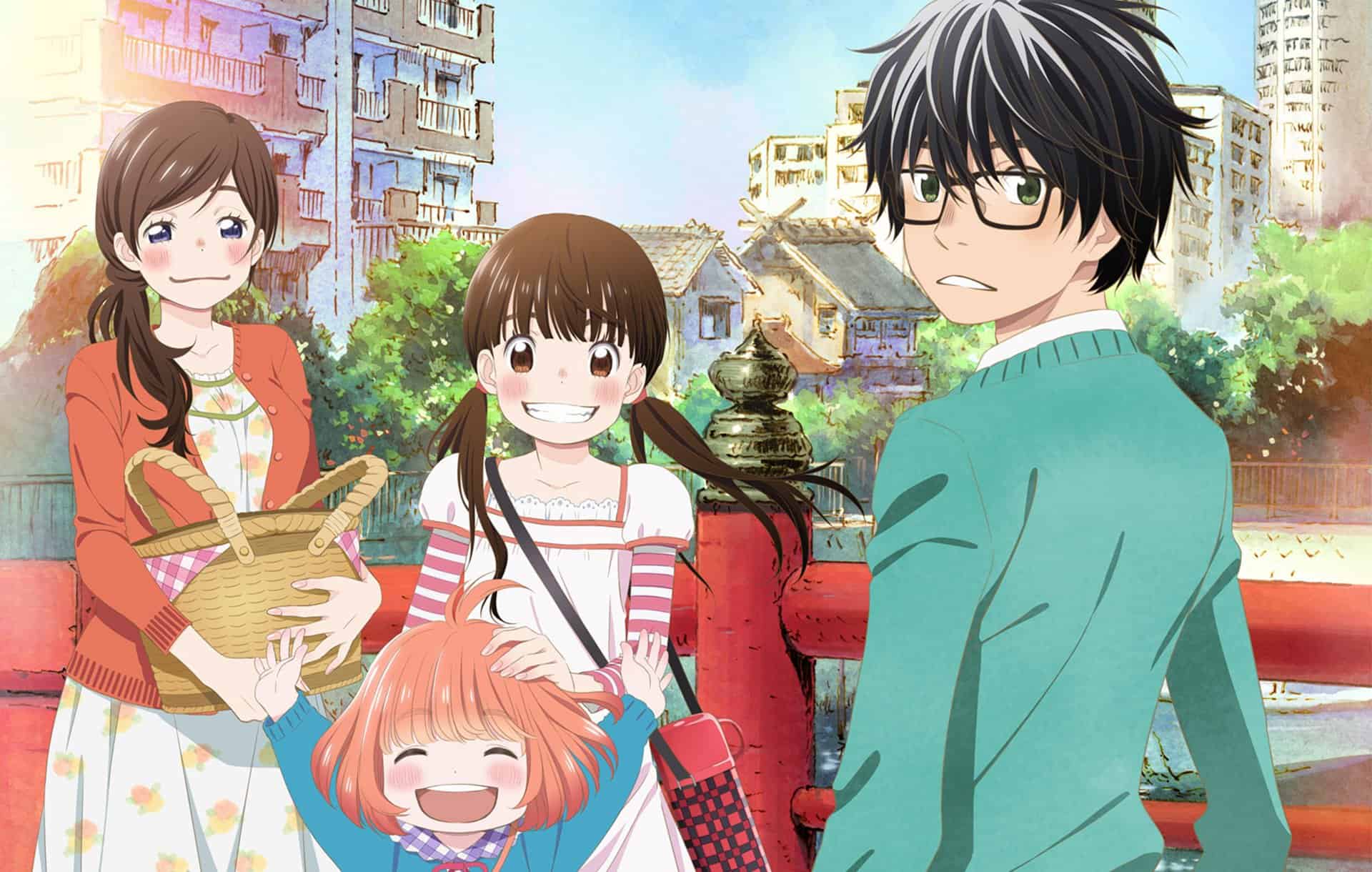
What’s worse is that Rei associates shogi with ugliness because of early influences like his biological and adoptive fathers, as well as his adopted sister and her affair with a married man many years her senior. Rei’s investment in people and willingness to face his own emotions have revealed his own frailties to him, and he’s having a hard time accepting them. Despite his initial apathy, he eventually comes to appreciate his burning ambition.
Although he is brutally introduced with a jest about his worthlessness (Rei means ‘zero’ in Japanese), Rei eventually finds meaning and purpose via his work and relationships. This plot element has been done many times before, but what makes this narrative special is how Rei comes to terms with his identity on his own terms. Rei’s growth relies heavily on the realization that he wants to be useful.
28. Nana
The tale, like Nana herself, is full of unexpected twists and turns and is based on true occurrences. We get to tag along with the Blackstones and Nana for a little time while they explore Tokyo. The tale relied heavily on the narrator’s recollections of their shared history. The narrative at the start and finish of each episode really helps build the mood and keeps me interested.
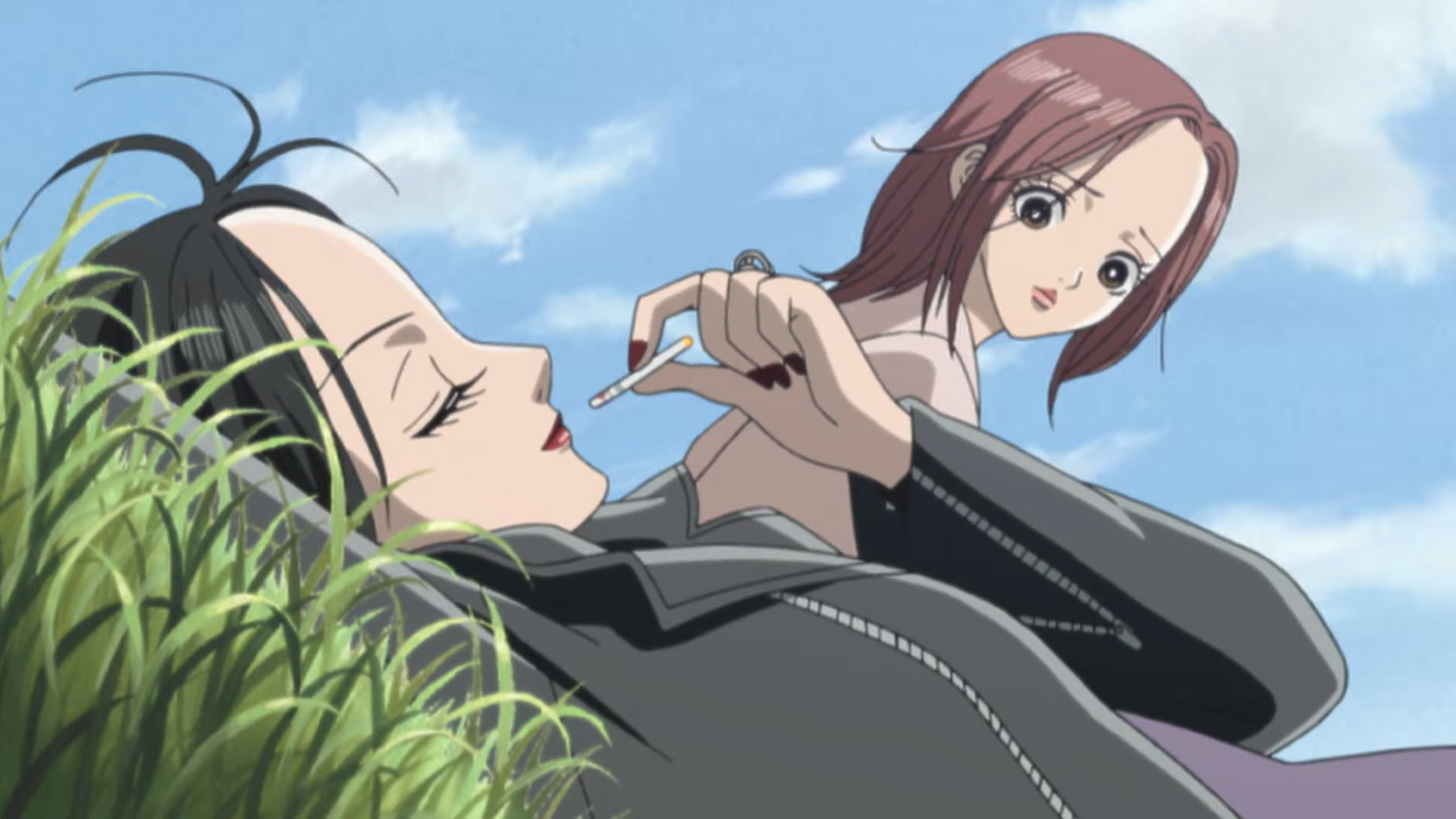
I was unable to find any information throughout my investigation into what happened between Fukushima Nana and Osaki Nana. Nana has a lot of comedic moments, but it also tackles some serious topics. The young characters of this tale all come from different, sometimes challenging, backgrounds. Abuse of drugs or alcohol, sexual exploitation, and the emotional fallout of being abandoned are all major contributors.
The two Nanas, Nana Osaki and Nana Komatsu (or Hachi) are at the heart of the story. Their friendship serves as the foundation for and influences every other aspect of the anime. Many of the story’s important characters congregate at the two girls’ apartment (707), making it a significant setting.
We care for the Nanas as people, for we see their development from total strangers on the train to close friends sharing a flat. As we watch the Blast girls practice for their debut and struggle with their romantic relationships, we are compelled to feel as if we’re right there without them.
Also Read: Space Dandy Anime Review
29. Nodame Cantabile
Nodame Cantabile is, without a doubt, the best musical animated film ever made. Considering the very different circumstances, I find it hard to believe that Shigatsu wa Kimi no Uso would ever reach that level of quality. The characters of Nodame Cantabile are in their early twenties, whereas those of Shigatsu are still in middle school.
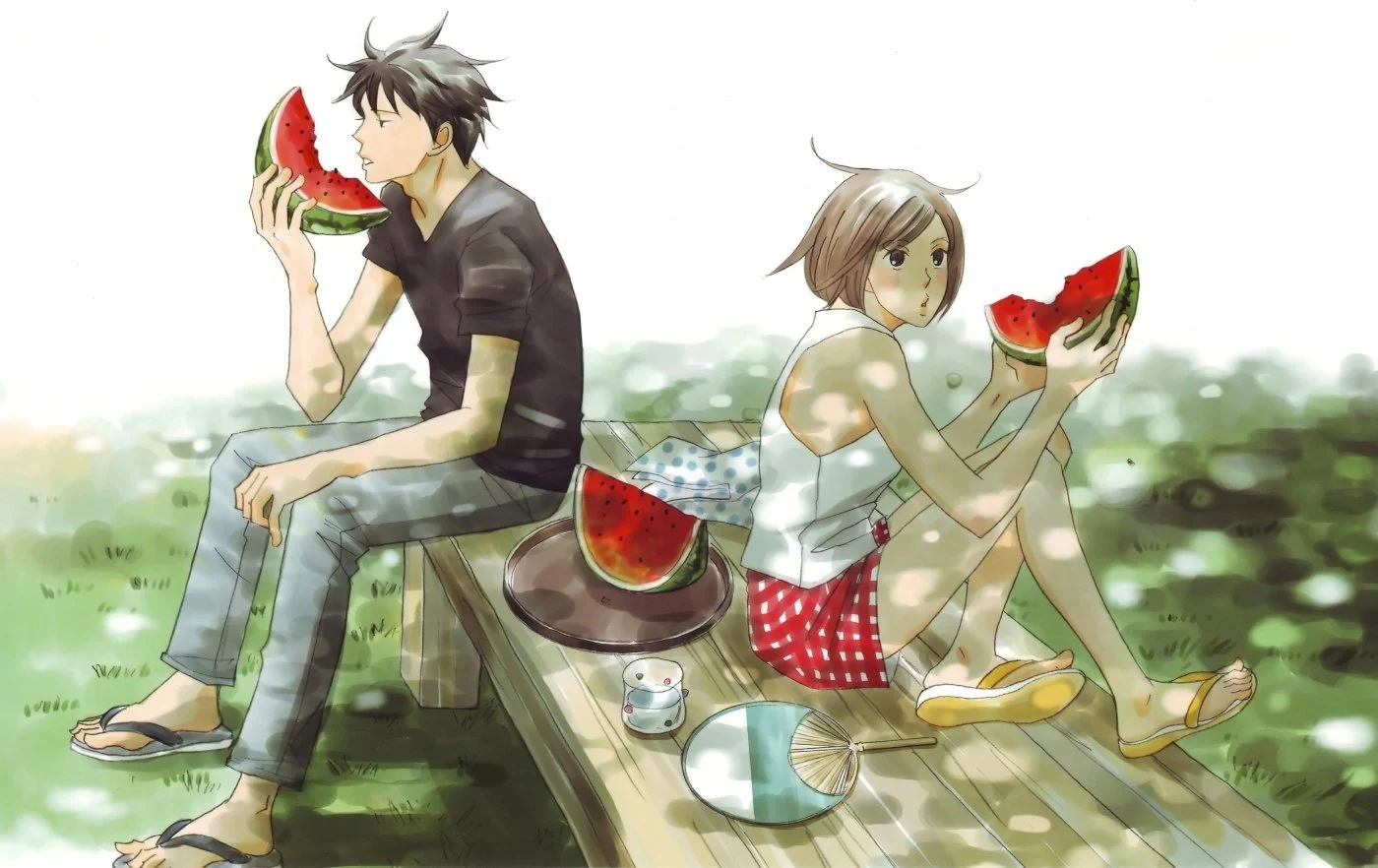
They have reached a level where they can compete in major international competitions, study at some of Europe’s finest music academies, and perform with or lead large orchestras. Compared to the middle school I went to, that’s a huge improvement. Moreover, Nodame Cantabile showcases a broad range of musical instruments, including those that aren’t often seen in media like anime and drama yet are integral to the story.
It’s incredible how many musical styles are represented in Nodame Cantabile. The director of Nodame Cantabile does an excellent job of matching the musical selections from the anime to the needs of the story, and the anime features the music of 34 composers from a wide range of historical eras, as detailed in Nodame Cantabile: The Essential Guide. Classical music lovers will be heartbroken by this animation, but newcomers will be won over.
Also Read: Kaguya-sama: Love Is War Anime Review
30. Golden Time
There is no shortage of pain in the Golden Age, but that’s not the purpose. When you’re feeling depressed, your friends will be there for you. Tada became distressed as his memories flooded back, and Linda hurried over to reassure him. No matter how many times Tada experiences a nervous breakdown, his friends like Mitsuo and 2D-kun will always be there for him. They have no problem with his dating Kaga and support their relationship fully. When Oka-chan visited in Episode 14, Kaga became quite close to her.
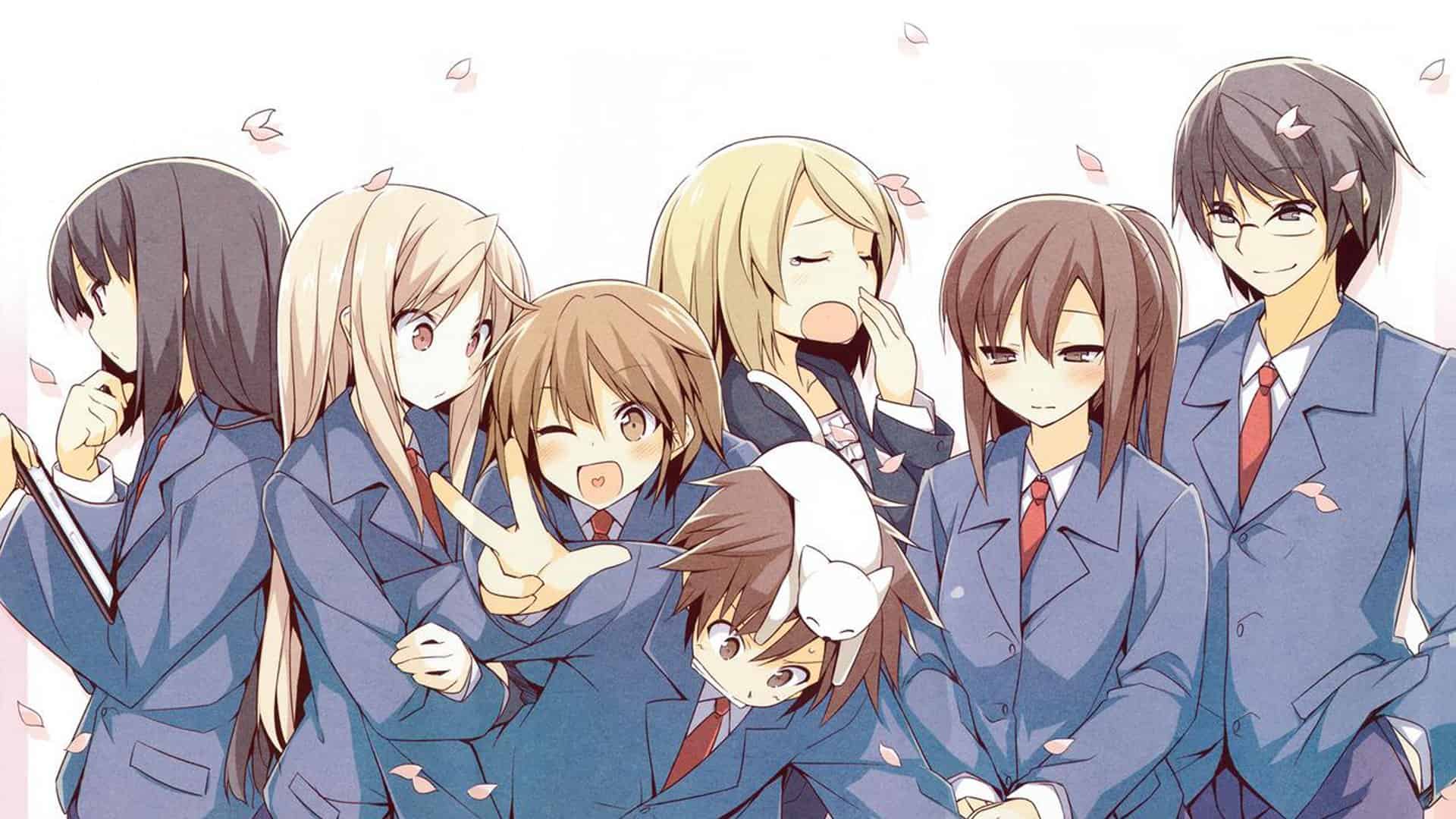
If you’re willing to give up something you like in order to protect the one you love, you’ll be able to weather any storm. Love can overcome any obstacle if both partners are prepared to put in the effort and accept one another for who they are. At the close of Golden Time, I have no doubt that Kaga and Tada had fully embraced one another and were prepared to do whatever it required to uphold their commitment to one another.
Kaga Kko and Tada Banri vowed to one another that their love and devotion would last for as long as their memories of each other did.
Also Read: Who Does Banri End Up With In Golden Time?
31. Sakurasou no Pet na Kanojo
Sakurasou is a funny romantic comedy that follows Sorata and the other students at Sakura Dorm as they get into all sorts of mischief. Sorata is on her way out of the dorm. He was kicked out of the dorm for having a stray cat, which is strictly forbidden. The Sakura hall is full of oddities and generalizations. It’s an awful location to raise a family. Misaki is the quintessential Genki girl, embodying all the conventional traits of the Genki female demographic.

Despite being a bishonen, Ryuunosuke has a crippling fear of women. Chihiro, the resident advisor, tells her students she is “29 years and 15 months” old and is always on the prowl for a wealthy spouse. Sorata gives up his search for seven cat owners and leaves the area since he can’t bear the inhabitants.
But then Mashiro Shiina appears to put a wrench into the works. I’ll fill you in on her background later, but for now, just know that she needs Sorata’s constant help to survive. The program follows the main characters through their highs and lows.
Ryuunosuke has shown his programming skills at several companies. Nanami, a new cast member who has fallen in love with Sorata, works many jobs to support herself and her academic pursuits, but she still struggles to fulfill her dream of becoming a voice actress. Sorata decides to get into game creation as a profession. Despite his difficulties with story creation, Mashiro aspires to be a manga artist because of his love for the genre.
Also Read: 33 Anime Like Erased That Are Thrilling To Watch
32. Angel Beats
The storyline is superb. The story may have a sluggish start, but it keeps moving at a good clip and never bores me. The tale advances swiftly, and the humorous elements are almost too successful. Watching a dramatic event could make you both laugh and cry. Minor holes in the plot are present. The notion is interesting because it prompts viewers to reflect on the choices and outcomes of their own life.

For others, this may convince them that death is preferable to living with regrets. Storytelling like this inspires sympathy and establishes the mood. The struggle, I assure you, will leave the most profound effect of all. The episode of this anime, when people are falling is fantastic. Talk about the characters! All of the main players in this show have interesting backstories and characterizations. In order to advance the plot and flesh out the characters, we learn a lot about their histories. As a viewer, you sympathize with them.
The growth of the main characters in Angel Beats guarantees the show’s success. The drawback of having a 13-episode series is that many characters who should be at the frontline do not receive enough screen time. I’m hoping subsequent seasons will have a wider variety of intriguing personalities. Since their stories aren’t shared with us, we can’t connect with them. It’s a letdown when characters are discarded after their purpose is served.
Also Read: Angel Beats Anime Review
33. Love, Chunibyo & Other Delusions
The night before his first day of high school, new freshman Yuta Togashi walks out on his family’s balcony to dispose of the “magical” toys and other objects he’s collected during his childhood but no longer has any need for. While Yuta is outside, a girl he doesn’t recognize drops a rope from the landing above, wearing a frilly dress and a patch of skin over one eye.
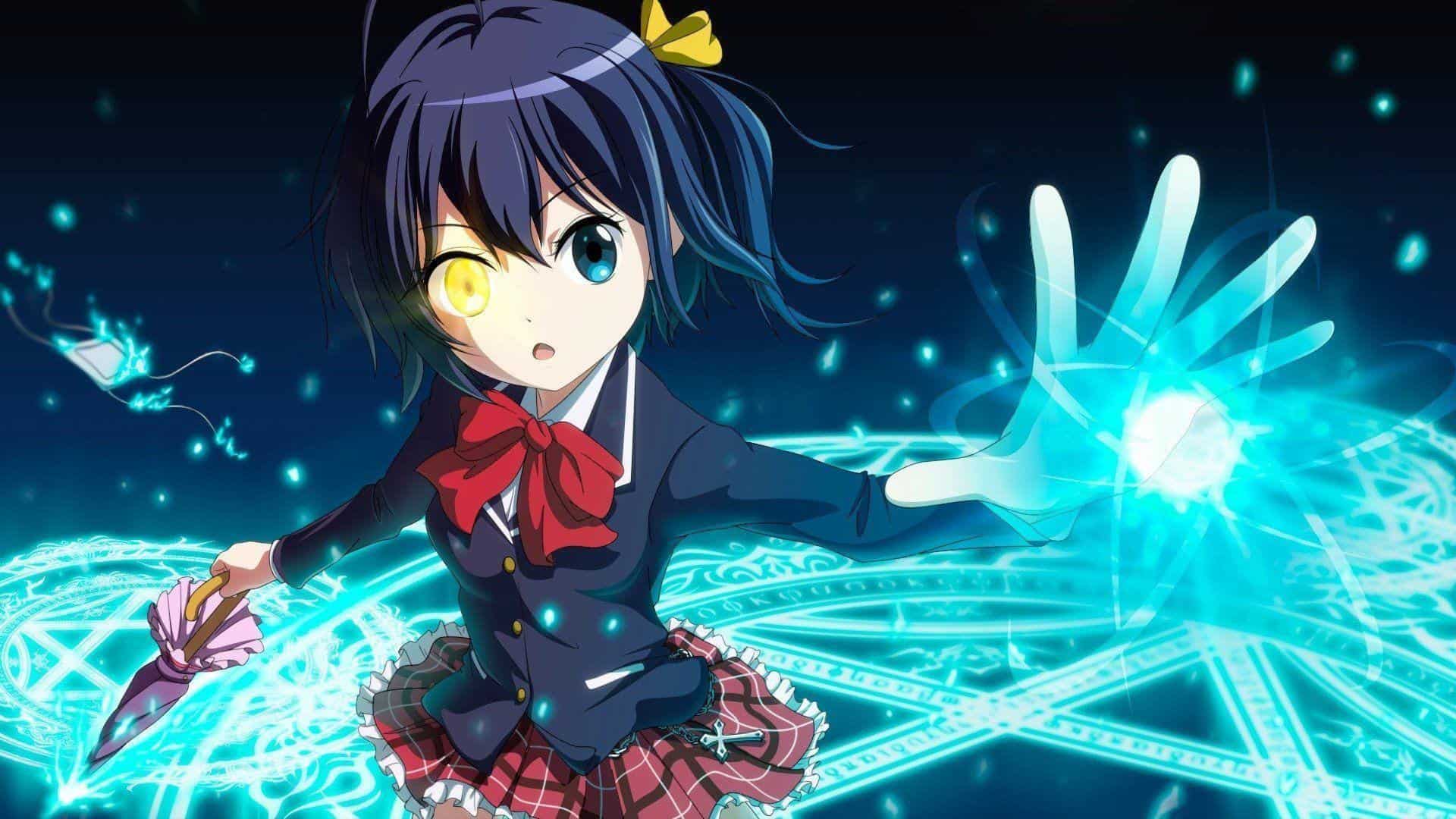
Yuta returns to school the next day, hoping to forget about the strange encounter that occurred the day before, but is shocked to see the same girl sitting in his homeroom. The girl in question, Rikka Takanashi, has changed to a more standard school uniform but still wears an eyepatch. She gives Yuta the theatrical treatment by uncovering her eye and saying that it is banging and fainting on the floor. Yuta finds out, to his utter dismay, that this young woman has chunibyo.
This is the opening sequence for Love, Chunibyo & Other Delusions, the first season of Kyoto Animation’s comedy/drama/slice-of-life/romance anime. KyoAni, as it is more often known, is widely praised and renowned for its superior effectiveness. The Chunibyo series is one of its most well-known offshoots, having generated many TV seasons, OVAs, and even a movie.
Also Read: Haikyuu Anime Review: Not Your Average Sports Anime
34. Fruits Basket
A story about meeting new people and saying goodbye to old ones, a cautionary tale about the crushing power of ties, and a wistful exploration of the vulnerability of human connections and the loneliness that may follow from solitude.
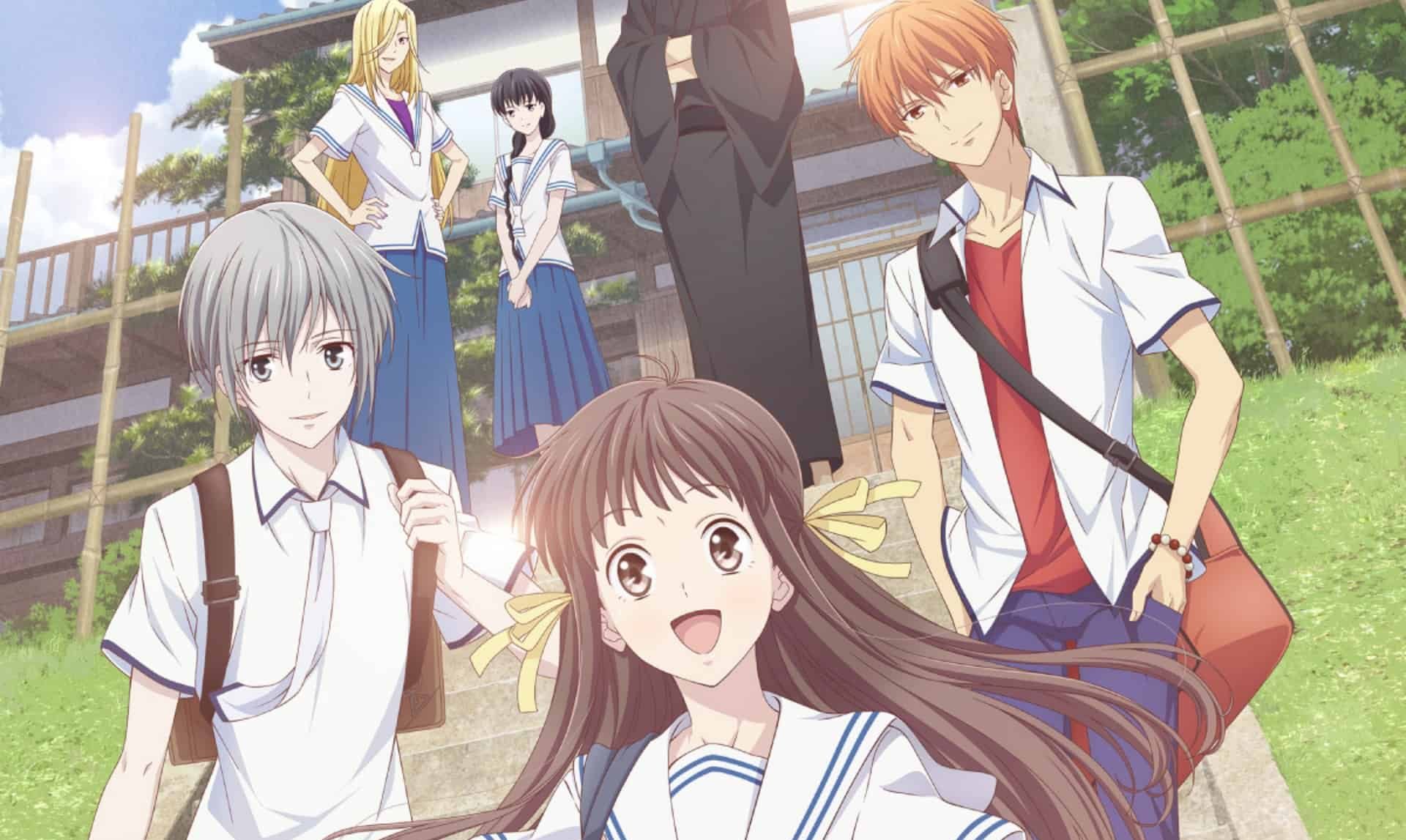
At the same time, when the stories of the Astrologers and their God are winding down, the story of a melancholy but ultimately optimistic high school senior is drawing to an end. When the final course has been eaten, what fate awaits these weary travelers? The Final concludes the three-part storyline that constitutes Fruits Basket. From the moment Tohru stepped foot inside the house where the critters lived, tensions were bound to explode.
Now, the major threads of the story come together, and the characters must struggle to keep their heads above water as all their prior pain and suffering come flooding back. As her history is central to explaining the vicious cycle of physical and psychological abuse she had carried out on all of the zodiac participants ‘under’ her as she is their ‘God,’ Akito receives the lion’s share of the focus this time around.
Also Read: Fruits Basket Launches Official Animal Crossing Island
Honorable Mentions
JJK AV Live Action – CSCT-012

35. Violet Evergarden
When Violet Evergarden recovers from her illness, the fighting will stop. Gilbert Bougainvillea, their manager, is now occupied. Violet is cared for by Colonel Claudia Hodgins, who assures her that she will be welcomed by the Ever Garden family. In order to help Violet transition to civilian life, Hodgins puts her to work for his postal service, CH. She is a Memorization Doll because she enjoys writing letters.
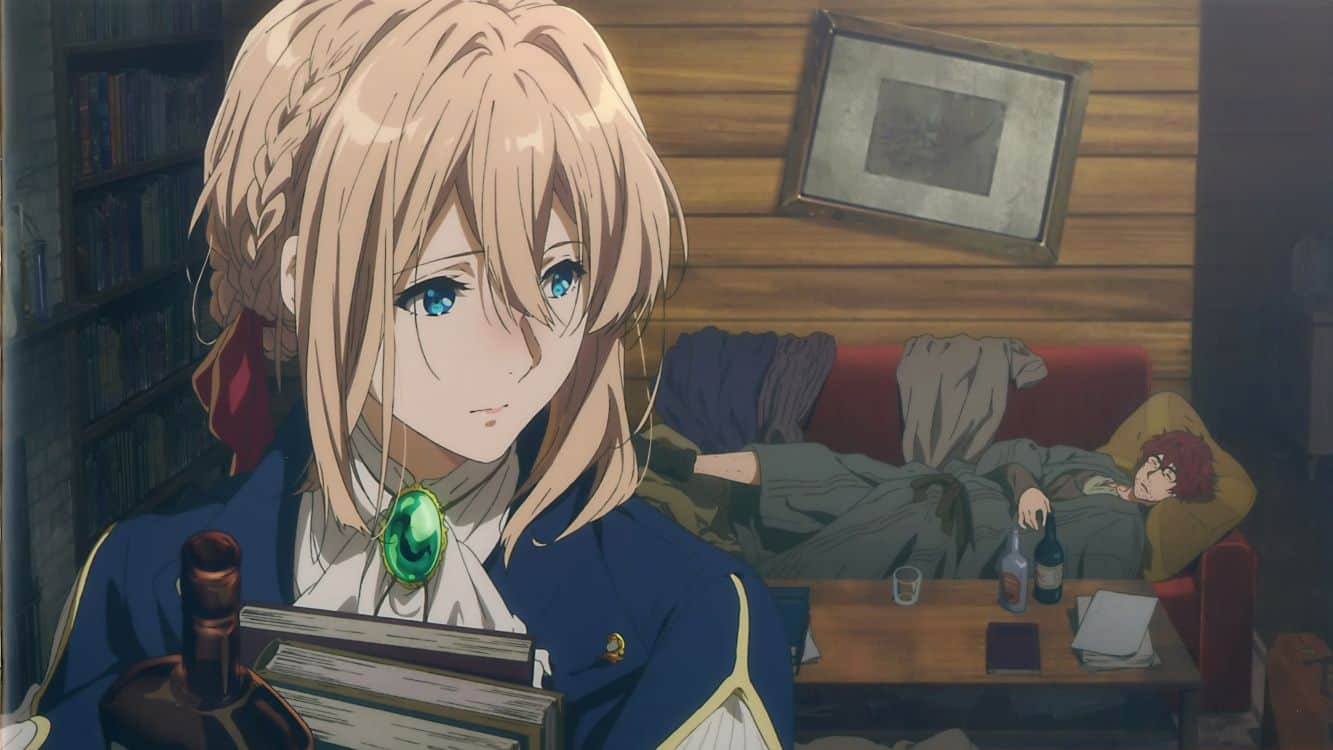
Violet’s writing was formal and direct at first, but she eventually learned to understand love with the aid of CH’s other authors, including a princess, a young scholar, a playwright, a tiny child caring for her dying mother, and a soldier. As she writes, she allows herself to experience sadness. In an effort to restart the conflict, Violet sabotages the peace negotiations. Violet meets Gilbert’s older brother, Dietfried. Dietfried dislikes her, although he does recognize Gilbert’s change.
If Violet feels guilty about Gilbert’s death, he says she should talk to their mother about it. Their mother will reassure her that Gilbert’s legacy will go on and that no one will blame her. Violet wants guidance on love and wants to know if she can find Gilbert, so she writes to him. And here, the stories continue.
Also Read: He’s All That Netflix: What is The Show All About?
36. The Quintessential Quintuplets
Futaro and the Nakano quintuplets are seniors in high school, so they’re planning a graduation bash. During the celebrations, Futaro will come clean about which Ichika he loves and why. Miku is jealous of Futaro’s relationship with another girl, Yotsuba collapses from exhaustion, and Nino wants their father to attend the school celebration, causing mayhem. After the festival, the Nakanos split up into five groups, each of which visits a different university to propose to Futaro.
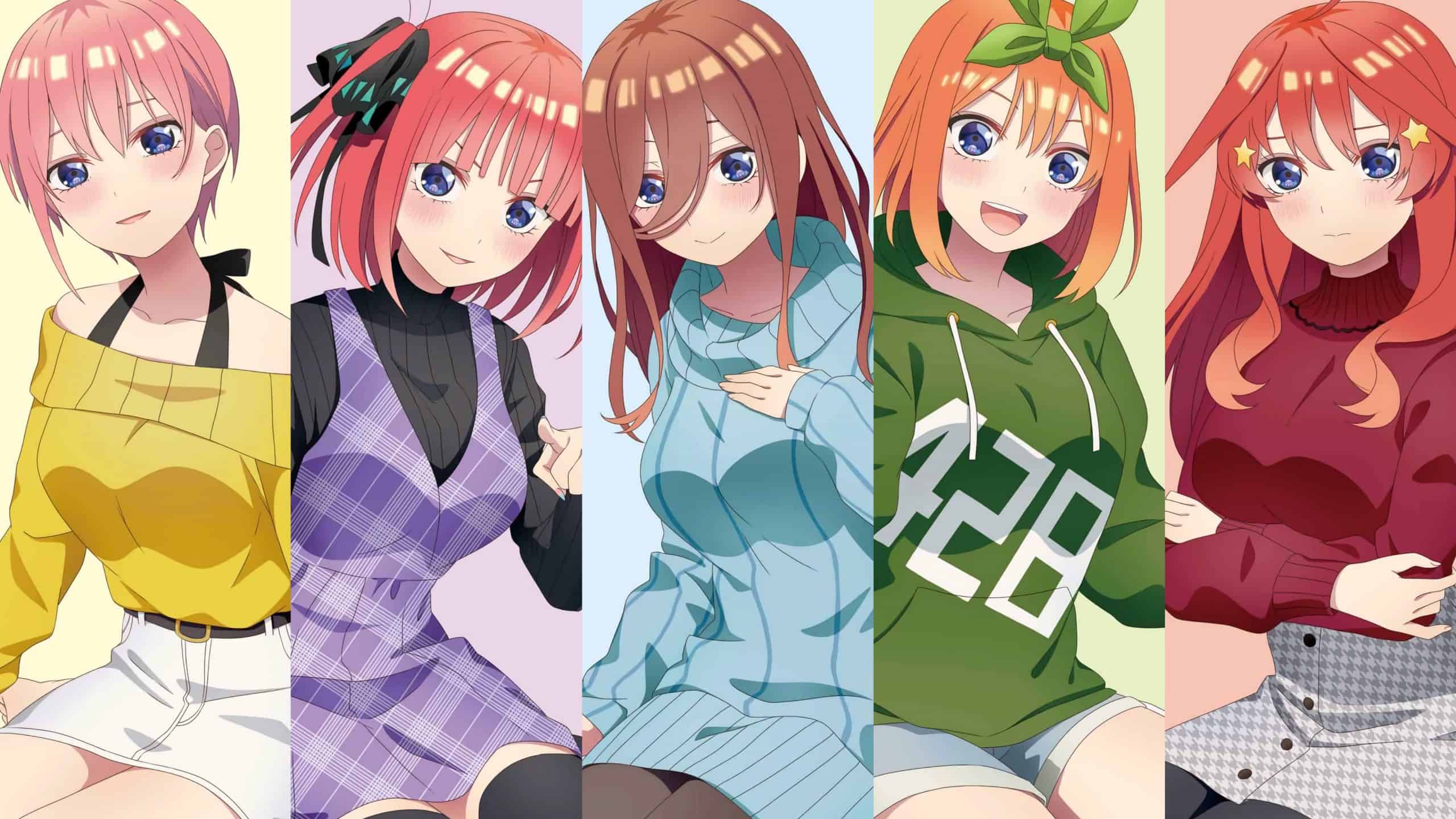
Futaro has a crush on Yotsuba, but she rejects him since she has no siblings and hence no one to look up to. When she was younger, she was sure of her promise to Futaro, but as her sisters grew up, she began to have second thoughts. Yotsuba says she feels bad about it, but she is concerned for the others even though she liked Futaro. After telling his friends Nino and Ichika how he felt about Yotsuba, Futaro proposed to her at the playground they had all attended. Five years have passed since then, and now Itsuki is a teacher, and Ichika is an actress.
Yotsuba has her ears pierced at Miku and Nino’s café so she may wear their mother’s jewelry. The five quintuplets play a memory game with Futaro on the wedding day of their parents, Yotsuba and Futaro. He does so deftly and shows how he learned to prioritize life experiences above formal education.
After thanking his five sisters, he presents Yotsuba with a ring and proposes to her. Futaro smiles fondly as he remembers his sisters and the impact they had on his life. This concludes The Quintessential Quintuplets Movie. The film manages to conclude the narrative of The Quintessential Quintuplets in its allotted 136 minutes.
Also Read: He’s All That Netflix: What is The Show All About?
37. Blue Spring Ride
Futaba Yoshioka and Kou Tanaka, two middle school buddies, had arranged to go to a festival during their vacation from school. When Futaba reveals that she doesn’t like guys because of their annoying behavior, the mood takes a turn for the worse. Hearing her comment, Kou cancels his appointment with Futaba for that day. After hearing her rage, Futaba is certain he has abandoned her, but he had to postpone the date due to a family issue.

As a result, she plans to amend the file the next time they meet. But Futaba finds out on the first day of school that Kou has transferred to a different school in a different city. Even if they’re physically far apart, they’ll never forget each other, thanks to their lingering feelings for one other and their unsolved concerns. Both of them would eventually enroll in the same high school many years later. They haven’t spoken in what seems like forever; can they still be friends? How likely is it that they’ll reconcile?
Blue Spring Ride isn’t as good as some other Shoujo manga, but it’s not bad, either. The plot is unoriginal, the protagonist is a caricature, and the love interest is a polygon. Despite its many shortcomings, I couldn’t give it a worse score since I cared about the characters and appreciated the plot so much.
Also Read: He’s All That Netflix: What is The Show All About?
38. Girls’ Nozaki-kun
GSNK is a parody of shoujo or high school romance. Nozaki creates comics based on each high school. This alone should make for an entertaining program. With the exception of its parody of shoujo tropes, I didn’t find GSNK to be as stunning as other works in the genre, such as Ouran High School Host Club or The Melancholy of Haruhi Suzumiya. In its own way, GSNK is spectacular. Nozaki/Sakura, Hori/Kashima, and Wakamatsu/Seo are the three primary couples who are tossed about during the program.
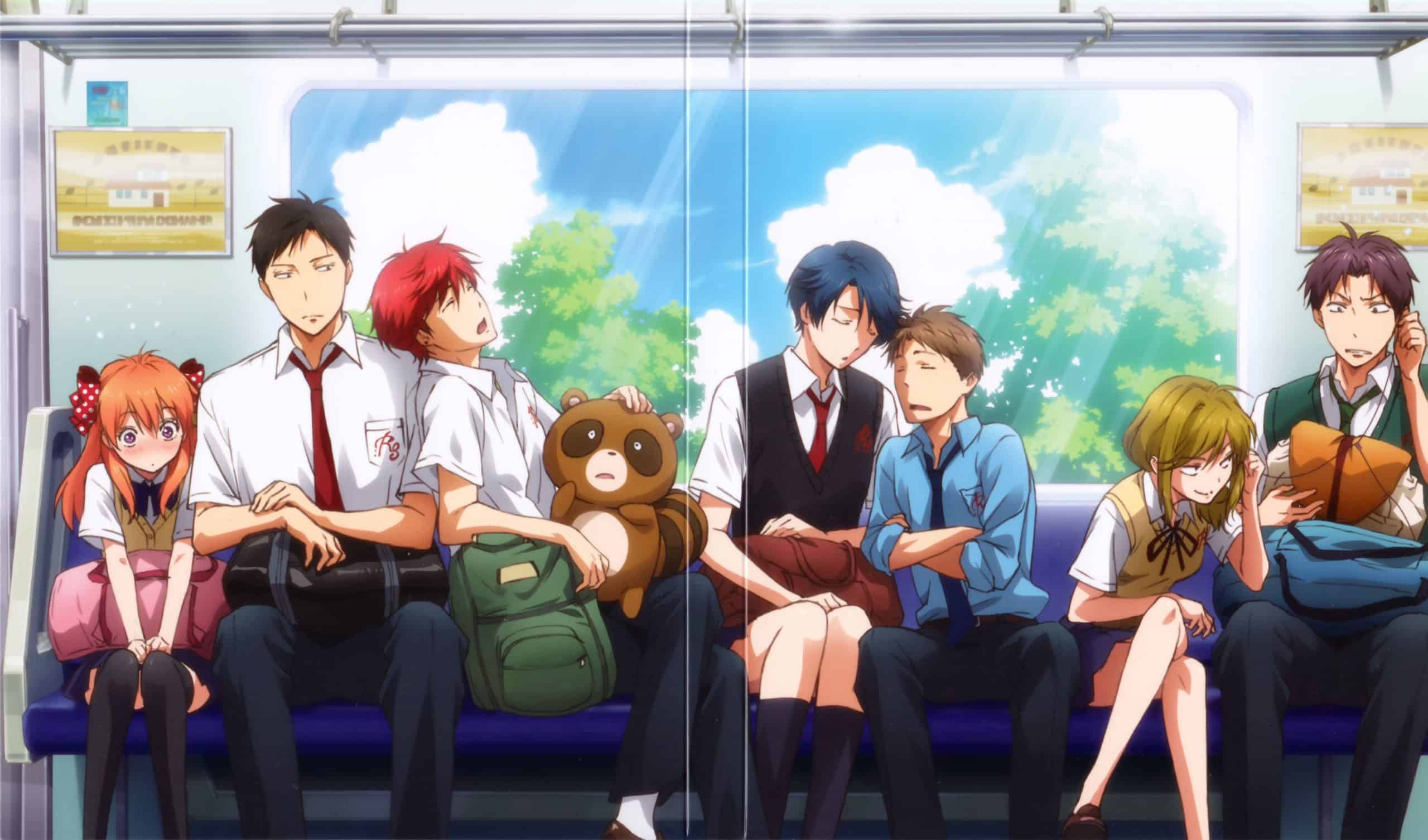
Each set of connections is investigated, but nothing concrete ever comes of it. There is only ever one side of the argument, and it never gets settled. This would normally be viewed as a failure since GSNK fails to achieve its romantic comedy goals and instead becomes a more traditional comedy.
This is where I have the biggest problem with the show because a show should always aim to achieve its goals. In eliminating half of its category, GSNK fails to achieve its goals. This affects my view that a show’s concept should resolve itself at the conclusion of its run because of the resulting straight humor. When GSNK gives up its name, what does it hope to become? Length is another factor in GSNK’s drive.
The show’s 12 episodes and a few extras at the end are episodic, rely on tired shoujo tropes for laughs, and do little to strengthen the characters’ relationships. The arcs of the characters are too quick! Minimal episode numbers suggest seriousness. There are 12 episodes chronicling Nozaki’s manga antics and the ways in which his friends provide inspiration. When it comes to character development, romance is a failure. The software would have matched people together, eased any romantic tension, and hallowed out any committed partnerships. All of the parts were all set to go. Not at all!
Also Read: He’s All That Netflix: What is The Show All About?
39. My Teen Romantic Comedy SNAFU
A Romantic Tale for Young Audiences High school club room comedy animation SNAFU. The narrative is about a love triangle between the main character and two supporting ones, despite the deceptive title. After the first season, the show seemed like a rip-off of Monogatari (man helps women with difficulties, but less intriguing here since there are no supernatural components), but the second season gave it its own identity. It grew into something more substantial than just a stand-up routine in a dive bar.

The story of SNAFU may be summarized easily. Our protagonist, Hachiman Hikigaya, is dragged kicking and screaming into the school’s service club. They begin with simply Yukino Yukinoshita but subsequently welcome Yui Yuigahama (whose name also sounds like a sign for NISIOISIN). The episodes will be self-contained from here on out (so there won’t be much to discuss in terms of narrative), and the season’s longest arc will wrap up in the last two episodes.
Due to the show’s weekly release schedule, episode quality may vary. Some of them are designed to make you laugh, while others have a more serious tone. The program never fully commits to either comedy or drama, despite the fact that the former is more prominent in the first season and the latter in the second. Season 2 is the best representation of the show’s ideas since the stories develop deeper and longer for each character.
Also Read: He’s All That Netflix: What is The Show All About?
40. Anohana: The Flower We Saw That Day
In terms of plot coherence and accuracy to current events, Anohana is among the best anime I’ve ever watched. Even though I was familiar with the events I described in the previous paragraph from having read a summary, I still found the pilot episode to be rather engaging. Anime programs often only require 11 or 12 episodes to convey their story since there is no filler. The story’s middle portions went in a different direction, but they paid off in the end.

Individuals’ responses to a shared set of characteristics need not be uniform, and that’s OK. Each of the five friends has their own unique personality and quirks without falling into the trap of becoming a stock anime cliché (ok, maybe Menma is more in a charming way). Anohana encompasses a wide variety of teenage concerns, from insecurity about academic achievement and consistency to self-consciousness about physical attractiveness and shallowness.
The characters weren’t always likable due to their unique flaws and complexities, but they were always credible. Even now, I have no idea what the purpose of that messed-up bishounen was, and I still can’t bring myself to like Yukiatsu for reasons that will become painfully obvious as the story progresses. I found these qualities to be most prominent in Anaru, the most endearing character in the show.
Also Read: Anime With The Best Visuals That You Should Watch
41. Clannad
Jun Maeda, whose name has become associated with visual novels because of his work on Must-Watch Crime TV Series Like FBI, is the author whose book served as the basis for the anime. In all, the English translation of the game’s six main plotlines is equivalent in length to that of some of literature’s biggest epics; the first of these arcs is covered in this season. The season focuses on a few character arcs rather than trying to cover too many stories in the limited time allotted.

I’m hoping you can appreciate my thoughts on this layout. A younger actor or actress playing an older role doesn’t bother me. I think there may be moments in history when bad things happened because of something nobody could have seen coming. When both of these issues persist, I am concerned.
When this occurs, the story’s presenting choices no longer serve to invent fictitious characters but rather to communicate very real (though distorted) points of view. The author may have a universalist worldview in which the characteristics of these people are seen as typical. Already, I have my doubts.
This tragedy has rendered these high school pupils emotionally vulnerable and infantile, so you’re meant to take the show’s word for it. I will get to the more important matter in a minute, but Nagisa is the only character whose history and outlook are even somewhat plausible.
As a consequence, the supposed “tearjerker” passages in Clannad don’t affect me emotionally at all. I think I’m attempting to make the case that Jun Maeda is a terrible character-builder and writer in general by pointing out that even young toddlers have problems empathizing with the misery of a hand puppet when the hand controlling it is evident.
Also Read: Tamako Love Story: A Perfect Romance
42. The Promised Neverland
Our story starts at Grace Field House, a remote yet happy and compassionate home for children. There, Isabella is the loving caretaker of 38 children, who all call her “Mom.” They’ve built a beautiful existence and strong relationships with one another as a unit.
It’s puzzling that none of the adopted children have stayed in contact with each other after being placed with new families, given that they don’t have a blood connection yet regard each other like brothers and care deeply for each other. This is only one of the many hidden aspects of the kids’ otherwise picture-perfect existence.
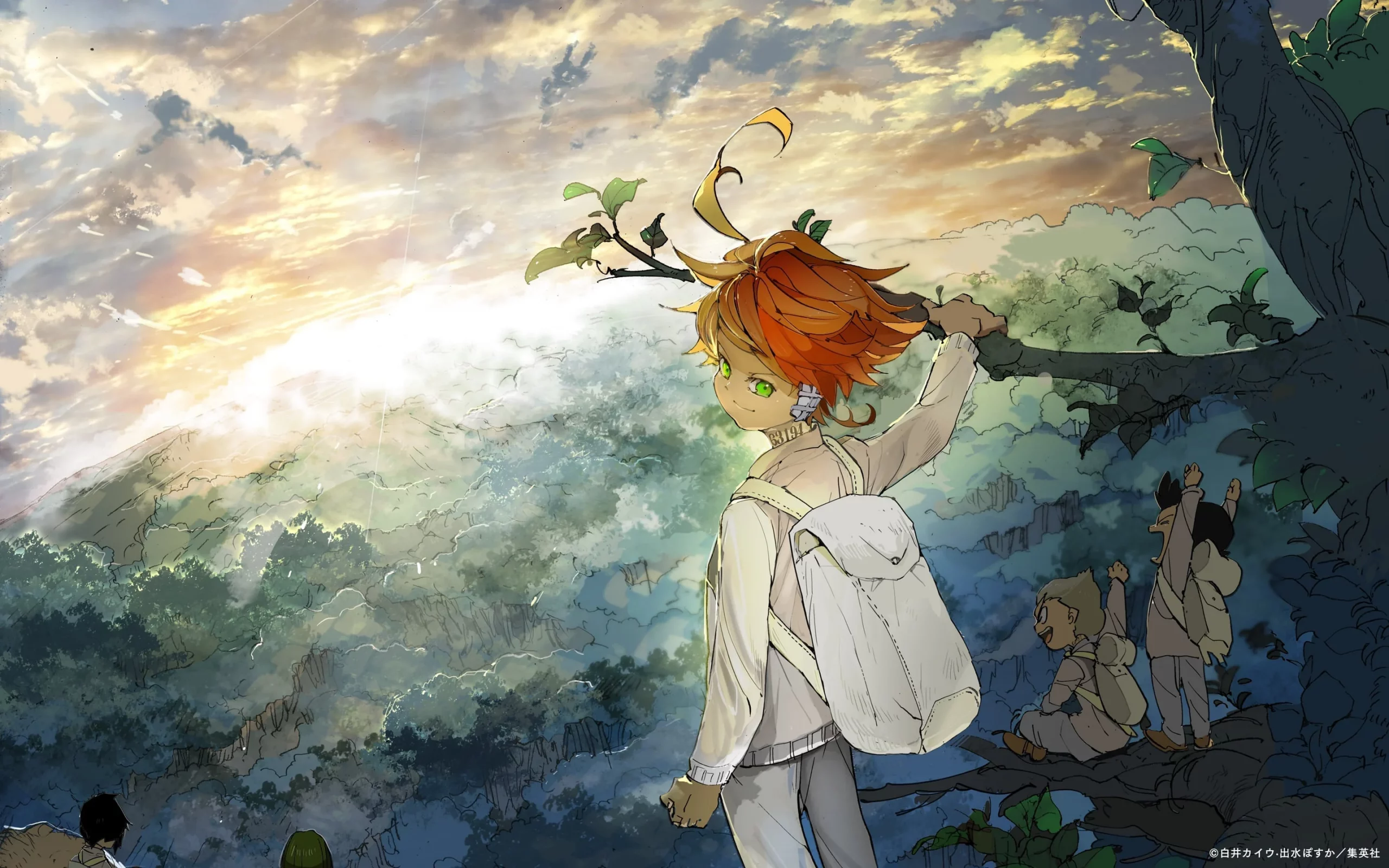
The three oldest and brightest kids are named Emma, Norman, and Ray. They’ve been close throughout their lives, so they eat together, and play outside all the time without fear of reprimand, provided they stay within the property lines and get a top-notch education that sets them up for success in the real world.
Until Emma and Norman disobey their mother and sneak past the forbidden gate one night, Grace Field House seems too good to be true. After making that choice, they know there’s no turning back. I won’t give too much away since it’s more exciting to discover things on your own, but the twists and turns, the children’s battle of wits to figure out what’s going on, and their will to do something about it all make this program binge-worthy.
Also Read: The Promised Neverland Manga Review
43. Attack on Titan
The manga by Hajime Isayama served as the inspiration for the anime. Titans, gigantic animals ranging in height from 3 to 15 meters and superficially resembling humans, first appeared in the Attack on Titan timeline in the year 743. The survivors fortified the capital by constructing three sets of huge walls to keep the giants out.
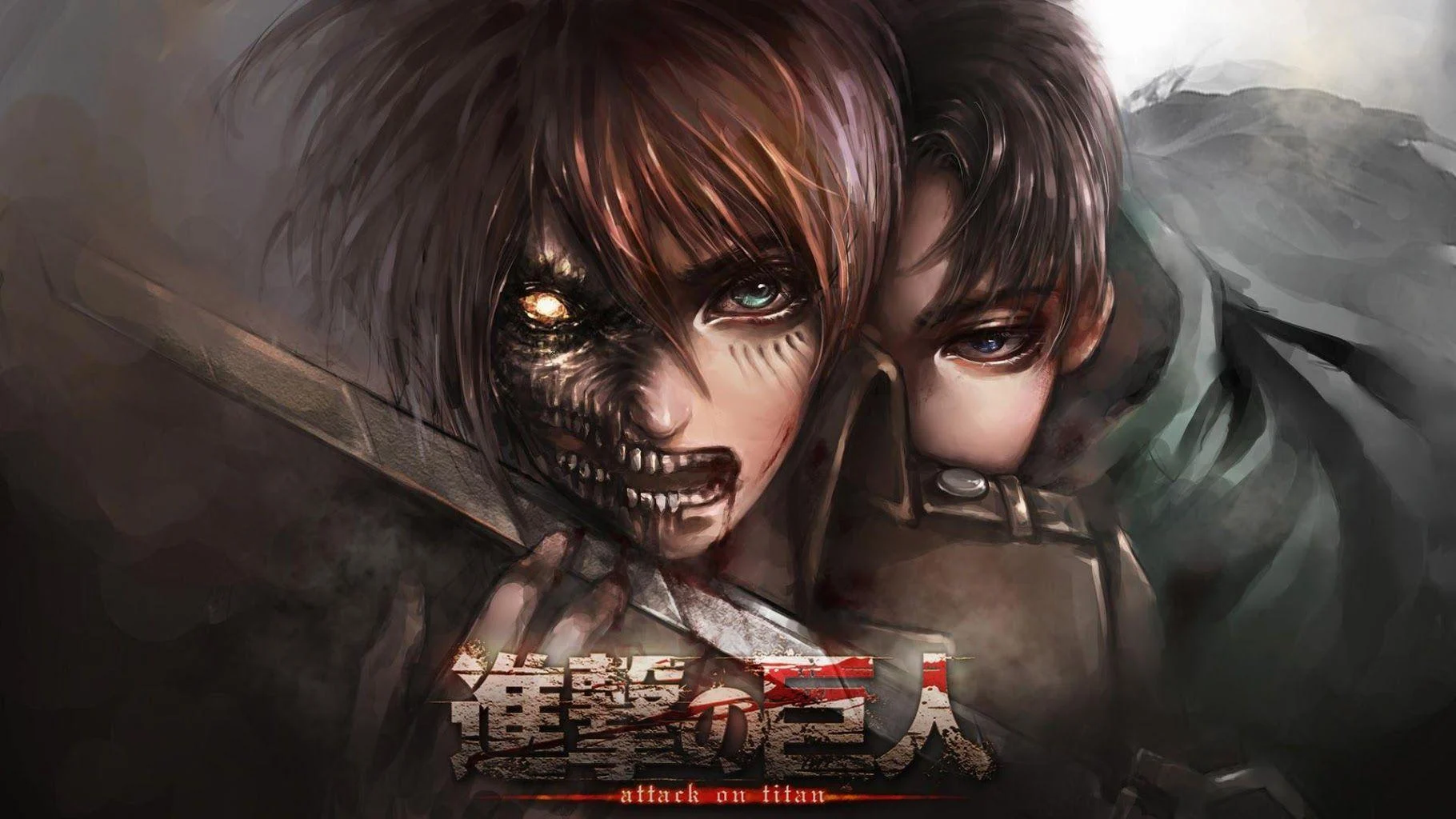
After 102 years of peace, a titan 60 meters in height attacked the outer wall. As soon as the wall gave way, more titans began slaughtering and feasting on city residents. Eren Jaeger, then ten years old, saw the titan consume his mother and swore vengeance, embarking on a mission to rid the planet of all giants. After joining the Titan Training Corps, he waited five years before facing his first titan.
The plot of Attack on Titan is typical of Shonen stories, with the protagonist sworn to revenge his mother’s death and facing off against powerful foes. He had experienced setbacks throughout training, but his great will to kill all giants propelled him forward, and he eventually became a formidable soldier.
Whenever he encountered trouble, he thought of his late mother and did anything he could, no matter how dangerous, to destroy the giants. He considered that everyone should take up arms against the giants and looked down on those who simply sought comfort. He was the usual shounen hero: enthusiastic, brave, and quick to act before considering the consequences.
Also Read: Attack on Titan Review
44. One Punch Man
Two distinct styles of anime may be considered “typical” superhero fare. At one end of the spectrum is the classic “hero-defeats-villain” program, like those from Marvel or DC, in which a band of exceptional individuals unites to vanquish evil and rescue the day. Boku No Hero Academia, Astro Boy, Sailor Moon, and a plethora of other popular series with heroic protagonists all belong here. Characters that are a good fit include the Power Rangers, Ultraman, and the Japanese version of Spider-Man. I offer One Punch Man as a rebuttal.
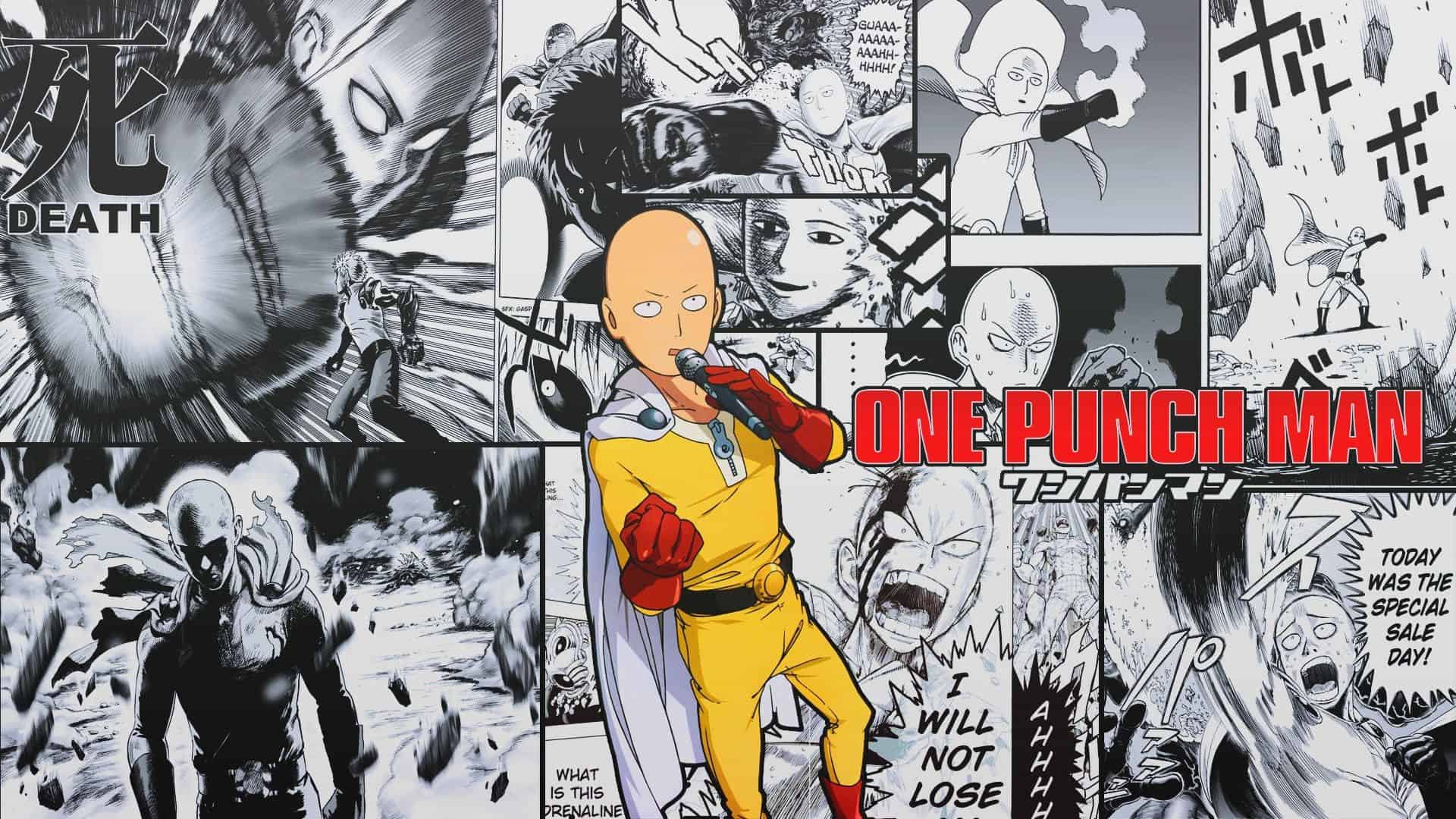
Saitama, the protagonist of One Punch Man, used to be a salesperson but became a superhero “just for fun.” Despite having a superpower that many heroes would kill for—the ability to knock out his opponents with a single punch thanks to his daily training regimen of “100 push-ups, 100 sit-ups, 100 squats, and a 10km run,” he is bored and unfulfilled in his life and is always on the lookout for a villain who will give him a worthy fight. To satisfy the demanding cyborg Genos, he decides to start training him.
After teaming up to take down several villains (including a mad scientist named Professor Genus and his army of robotic mammals, Kombu Infinity, who is composed entirely of kombu leaves, and Mosquito Girl), our heroes find themselves drawn to join an alliance of superheroes, the Hero Association, where they must take on heroes of varying strengths in order to form a united front against evil. The situation escalates into a showdown between the Deep-Sea King’s army and Boros’ elf forces. Saitama is able to recover his heroism with the help of the challenges he faces in each battle.
Also Read: 35 Cool One Punch Man Facts You Need To Know
45. Haikyuu!!
When I read, write, or watch a story, it’s the characters I care about the most, not the plot or the tension. I keep going back to sports anime because of the clever banter, the potential for collaboration and personal growth, and the high-quality animation and energy.

The opening theme song by Spyair is what got me into “Haikyuu,” not a personal recommendation or even a casual interest in volleyball. During my lunch break at work, I was browsing YouTube for entertainment and came across a recommendation for Spyair while watching clips about Girugamesh and giggling pitifully at Satoshi.
After half an hour of research, I discovered that the song was included in the opening credits of an anime I had never watched before but was drawn to because of the music. Google is a great tool for research. Teasers, screencaps, and a whole Tumblr page devoted to the adorable little girl known as Shouyou (or Shyu Hinata) appeared when I searched for the appropriate anime on Google.
The youthful hero of Haikyuu, Hinata, is a man of little stature who achieves great success because of his innate agility and persistent perseverance. Hinata develops an interest in the sport after seeing a high school game broadcast on television in his hometown. He calls one of the finest volleyball players at Karasuno High School “The Little Giant.”
Hinata joined the school’s boy’s volleyball team as a sophomore after hearing about it from a friend. But that hasn’t stopped Hinata from doing what he loves. Both individually and with the rest of the girls on the team, Hinata trains every day.
Also Read: 13 Haikyuu!! Facts You Should Know
46. Assassination Classroom
In the first few episodes of Assassination Classroom, it seems that each character will get a chance to kill Korosensei in a weekly murder stunt. Like March Comes in Like a Lion, Kodocha, Marmalade Boy, Nana, and Yu Yu Hakusho, Assassination Classroom is a fantastic coming-of-age story.
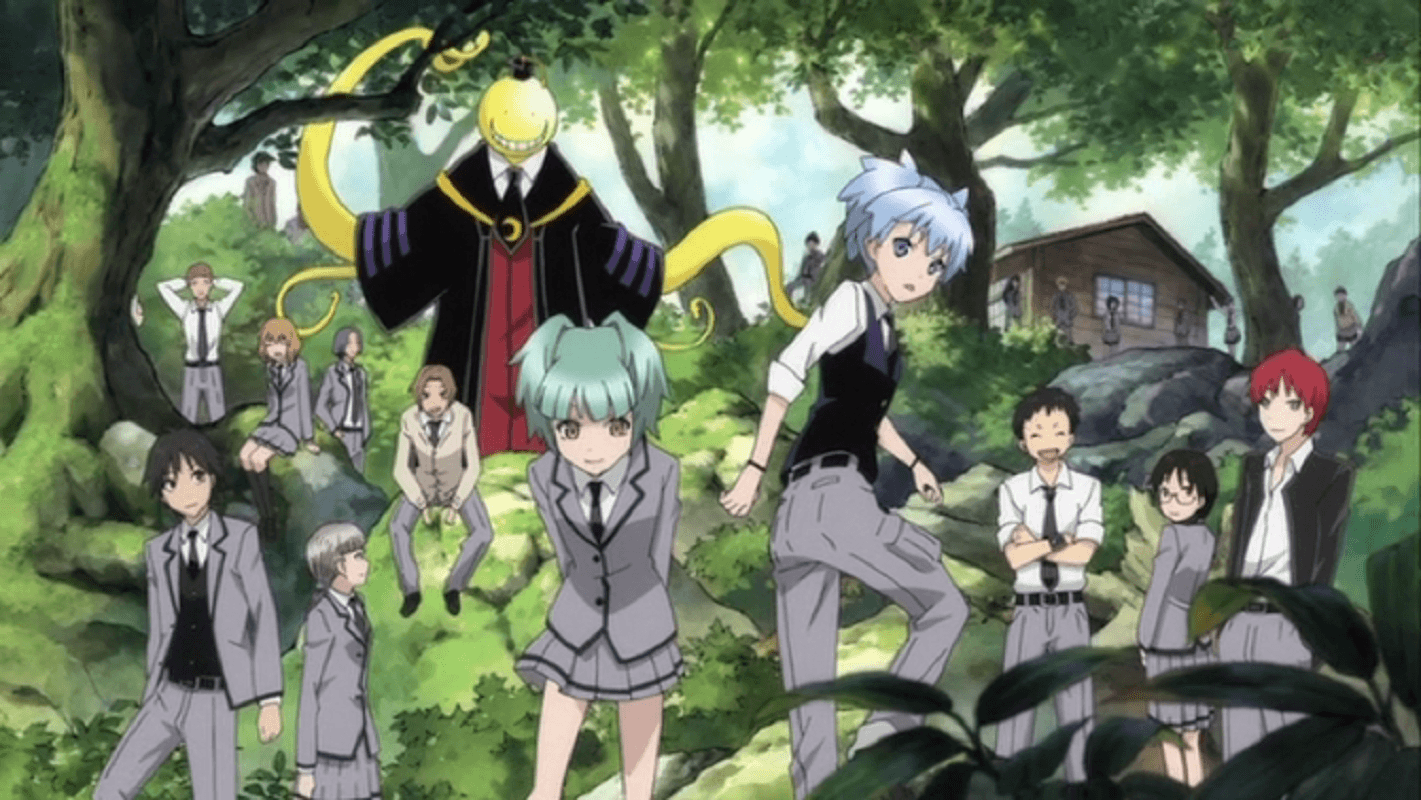
It’s no surprise that the Class 3E kids didn’t do well in school since they all came from broken households. Being bullied or discriminated against, having trouble in school, or acquiring anxiety are all examples. Class 3E has lost its once-vibrant source of hope because of these folks. The primary focus of Assassination Classroom is on assisting the performers in developing stage presence. The ideas of the Assassination Classroom were also very well done.
Poverty, alienation, bullying, sexism, pride, trust, retribution, redemption, and even the meaning of life itself are all explored in length. Assassination Classroom, as always, does a fantastic job with these subjects because of the high caliber of its writing and the trust its audience has in the program.
These taboo topics weren’t included for the sake of shock effect; they play a significant role in the story’s background and development. Assassination Classroom does a great job of humanizing its characters’ struggles, whether it is Karma’s mistrust of adults or Nagisa’s experience with his mother’s sexism. Assassination Classroom is one of the most terrifying TV series I’ve ever seen.
Also Read: Assassination Classroom Watch Order: From Specials to Movie
47. Naruto
Naruto Uzumaki is introduced in the first volume; he is an outcast in the community of Hidden Leaf because a terrible demon spirit called the Nine-Tailed Fox was held captive inside him at a young age. The villagers avoided the youngster at all costs, believing he was possessed by the evil spirit that had almost wiped them off. What more would you anticipate from Naruto than his typical antics?
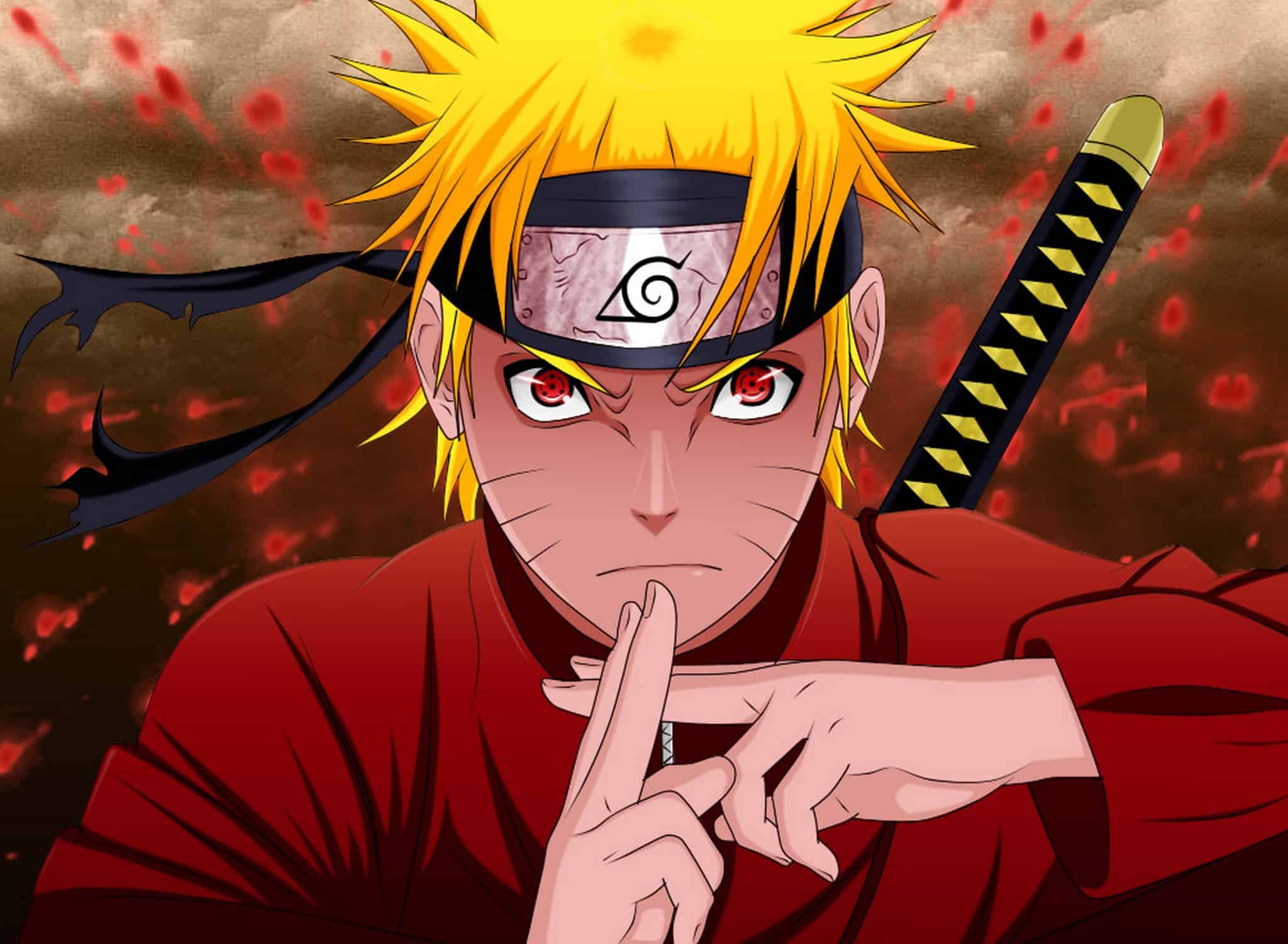
In the opening chapter, we see Naruto vandalizing a monument commemorating the hometown’s leaders, or Hokage. This behavior not only upsets Naruto’s instructor, Iruka-sensei but also the Third Hokage, who happens to be the lone individual in the village who really cares about him. Furthermore, Naruto is unable to make an impression at school since he cannot successfully replicate himself. Naruto has left aside when his other students go to the Ninja Academy, the next level of Shinobi training.
The events of the day the Nine-Tailed Fox was destroyed by the Fourth Hokage and the motivations of each of the key characters, including Sasuke, who has his own motivations for wanting to flourish as a ninja, are revealed in detail in the first volume of Naruto. Kishimoto is a skilled storyteller who can provide both thrilling and humorous narratives. There are a lot of funny moments in the series, such as when Naruto and Sasuke accidently kiss and ruin Sakura’s hopes of becoming Sasuke’s first kiss. Seeing how far the story has progressed visually is fascinating as well. Although I had issues with the first few volumes, the illustrations in Naruto have really improved with each new installment.
Also Read: Naruto Vs. Boruto: Who Is The Strongest Between The Two?
48. Kamisama Kiss
The comedy “Kamisama Hajimemashita” has the potential to be enjoyable for both anime and non-anime fans. Because I didn’t find the title particularly alluring (Kamisama Kiss? (Kiss me, God?), I delayed watching this shoujo anime for a while. After seeing several make-out scenes on YouTube, I was convinced.
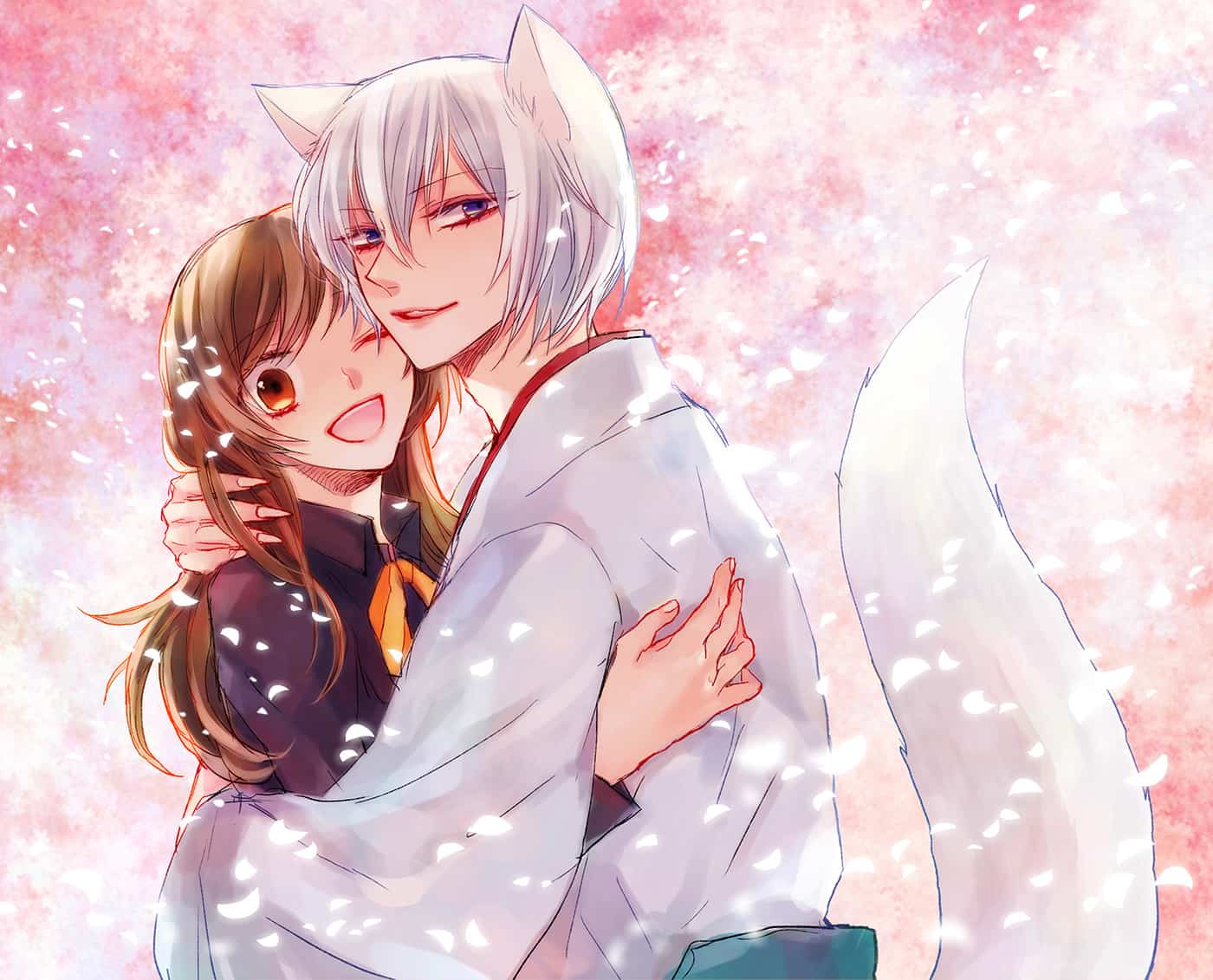
Nanami is the main character. She exudes serenity, optimism, and modesty. She was left homeless and penniless when her parents uprooted and left. As she sits in the park and helps a man who is afraid of dogs get rid of a noisy dog, she sits there feeling sad and confused.
Mikage, a night-time parkgoer, approached her and asked what she was up to. A series of circumstances lead to Mikage learning of her need, at which point he generously gives her the use of his house. He kisses her on the forehead and offers to take her on a tour of his shrine-like home.
A deity called Mikage bestowed upon her a seal that transformed her into a goddess of the earth and granted her control of the shrine. Nanami was thrown for a loop when she first encountered Tomoe, Mikage’s familiar; the fox demon had been eagerly awaiting his arrival. Despite having the potential to become a familiar female, Tomoe will not become one. Like many Shoujo stories, this one had a main character who couldn’t function without her love affair. Things don’t go as planned when Tomoe becomes her familiar, but that’s to be expected in a supernatural comedy anime.
Also Read: 42 Anime Like Akatsuki no Yona (Yona of the Dawn)
49. Maid-Sama!
The Class President is a Maid, or Kaichou wa Maid-Sama is a Sentai Filmworks anime series consisting of 26 episodes. After the original run of Maid-sama concluded in September 2010, two additional episodes were released, bringing the total number of episodes to 28. This film was adapted from Hiro Fujiwara’s manga of the same name.
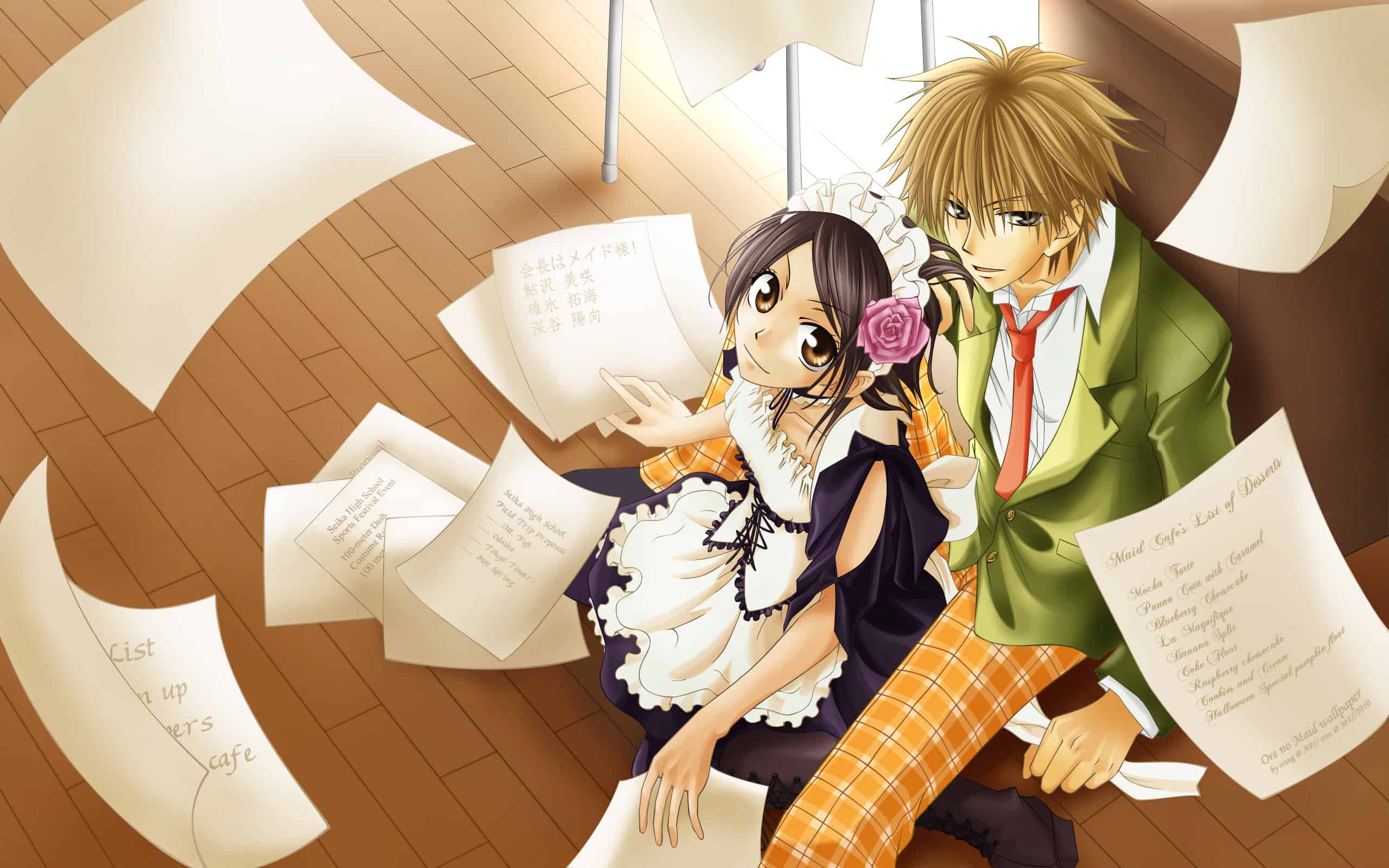
There were 18 novels released between December 2005 and September 2013 in this series. The cartoon was also made available with an English dub by Sentai. The “Demon President” is so called because she never breaks the rules and will put up a battle against anybody who challenges her authority. She takes a hard line against the disruptive guys so that the girls of Seika may have a positive educational experience.
However, Misaki’s complexity lies beneath the surface. Misaki works part-time at a maid café to help support her younger sister and support her single mother. Something that would make her feel horrible if her friends knew about it.
The most popular child at school, Takumi Usui, chooses to visit the maid café one day. The plot then shifts to Misaki’s antics as a high school student, where she tries to conceal her true identity from “perverted alien” Usui and the other pupils. There were a few touching moments throughout the performance, but the comedy was the main attraction.
Also Read: Maid-sama Anime Review
50. Soul Eater
This Soul Eater man really lost it. This is ridiculous, even for Full Metal Alchemist, and extremely out of the realm of possibility in Bleach. It is with this idea that I struggle the most to provide an adequate explanation.
A vat of syrup was filled with all the concepts that might possibly occur to someone watching an anime about swords and magic, and it was decorated with sunflowers and spikes. There’s no mistaking its silliness; its goals are usually easy to understand, and it seems to be having a wonderful time as it seeks its next illogical goal.
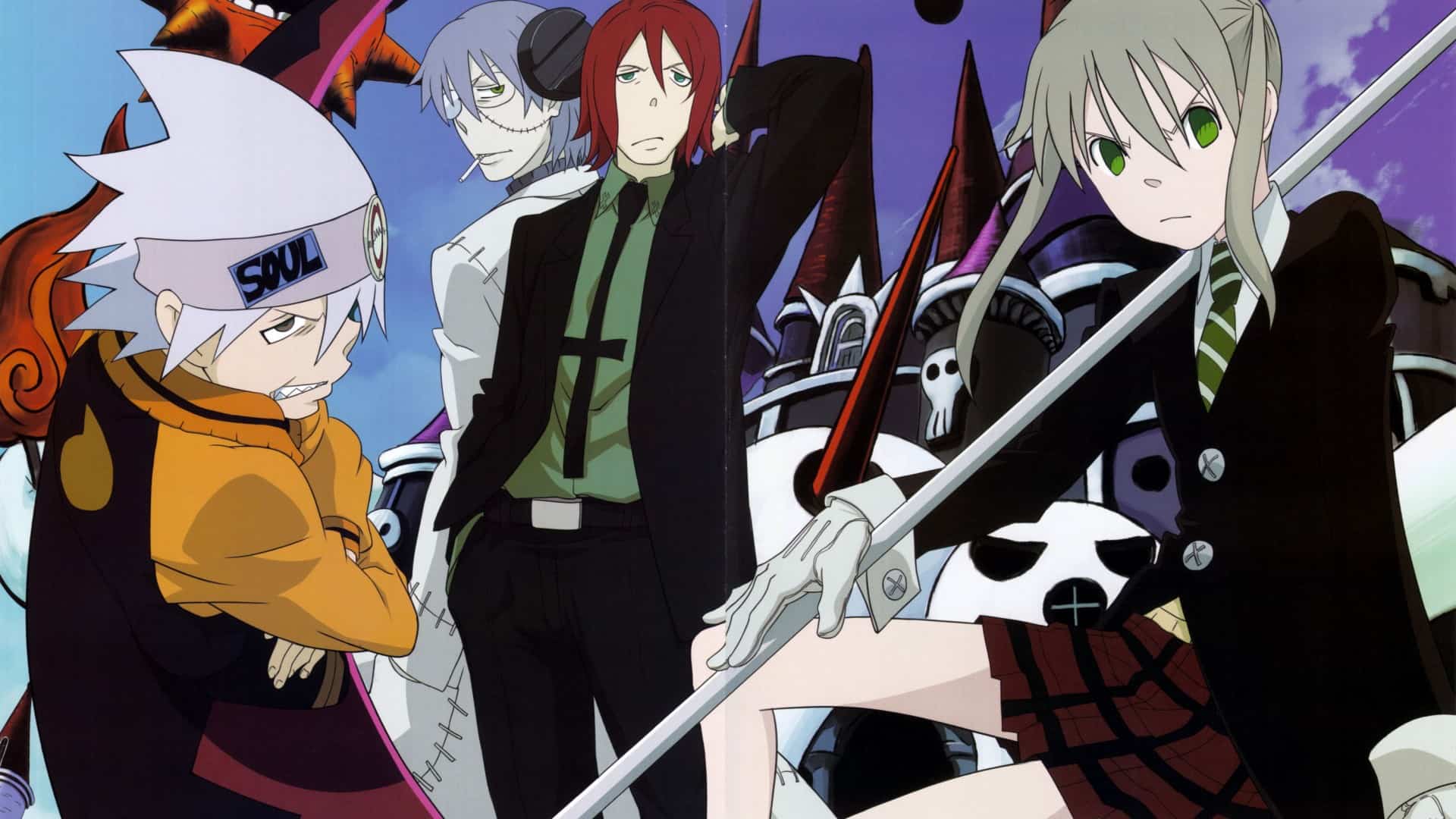
The concept is that the Grim Reaper, sometimes known as Lord Death, runs an academy where aspiring warriors learn the finer points of cooperation and weapons by murdering one other. The school has always placed a premium on preparing future Blade and Wiseman pairs to track down and eat the souls of villains and witches.
Due to the overwhelming amount of information available on Soul Eater, having an item’s function and use spelled out for me is quite beneficial. To hear them go on about how it’s connected to other magic or how it’s vulnerable to whatever the fuck is but can be overcome with the determination of a small to medium-sized Gerbil or some other nonsense like that. Not only do you not have a compelling protagonist, but when Death appears in a hockey mask and huge, comical foam hands, you have no idea how to explain anything.
Also Read: Mob Psycho 100 Anime Review
51. Kill La Kill
To begin, the Kill la Kill writers aren’t solely responsible for the show’s arcs. The tale abruptly switches its emphasis from one aspect or topic to another. Without giving away any surprises, I would say that a few of the stories that were removed were more interesting than the ones that were included in the show. The show tries to do too much, especially in the middle, but unlike Darling in the Franxx, The Rising of the Shield Hero, and the vast majority of Yu-Gi-Oh! Episodes, it never quite succeeds.
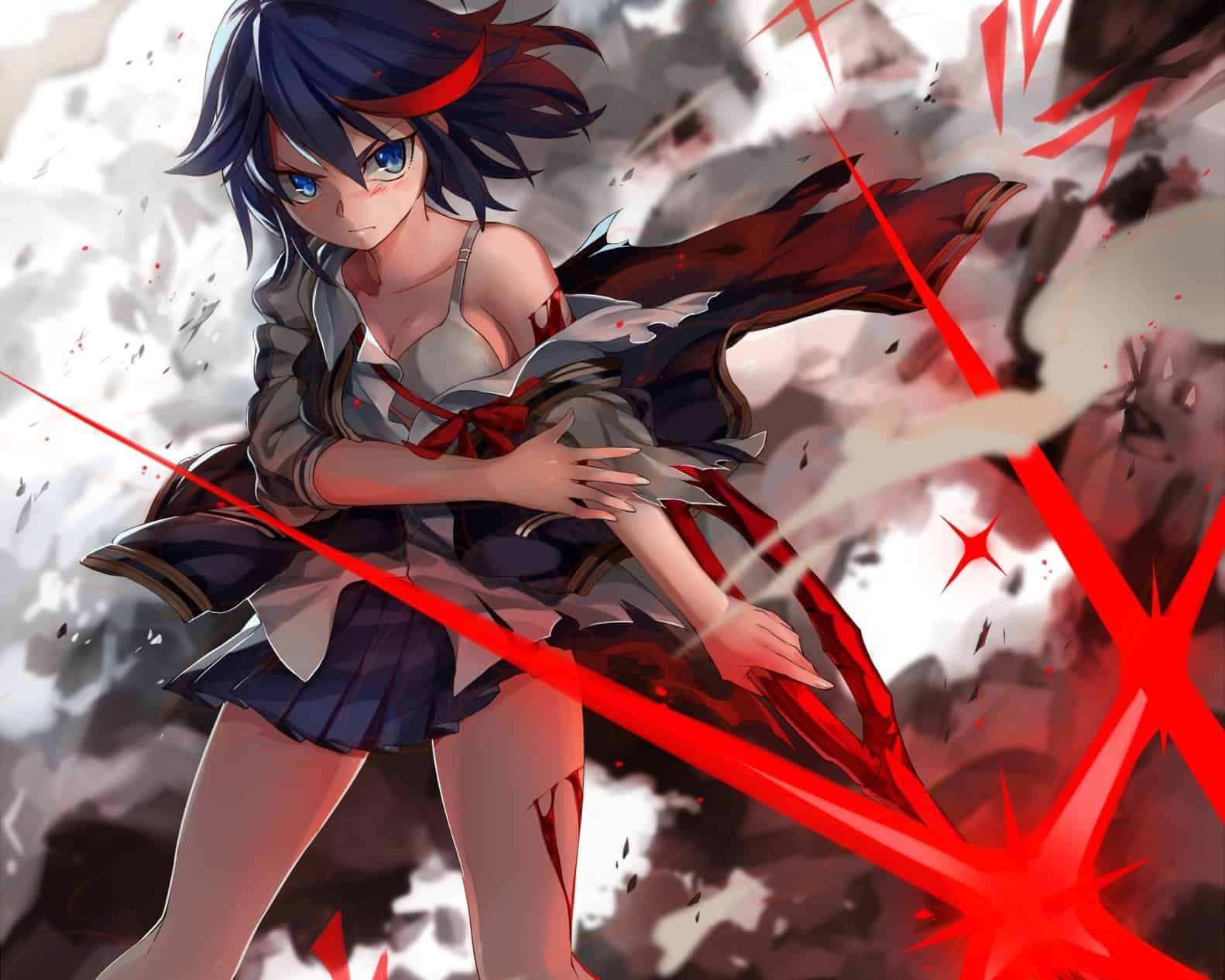
This problem is connected to my main gripe with Kill La Kill, which is its plodding pace. The tempo is terrible. Some episodes flew by, while others dragged on interminably. Kill la Kill might have been much shorter; several of the episodes seemed to go on indefinitely and contributed nothing to the plot. The author’s works are notoriously slow, with the exception of Little Witch Academia TV, which mainly escaped Trigger’s pacing troubles.
Kill La Kill, although taking place in a top-notch production studio, provides a hearty dose of self-awareness. I appreciate that the software is conscious of its own idiocy. There isn’t much of a plot in episodes 4-7, but they’re still entertaining. The level of the writing is generally quite excellent, with just a few rare cases of lower quality.
Also Read: 20 Best Kill La Kill Facts You Need To Know
52. Neon Genesis Evangelion
Hideaki Anno’s Neon Genesis Evangelion follows the story of 14-year-old Shinji Ikari, who is informed that he must pilot an Evangelion (a kind of mech robot) or else the Earth will be destroyed. He’s confident he can’t pull it off since he’s never even come close to doing anything like it before. But as the stakes get higher, he jumps in the robot and saves the day, at least within the foreseeable future.
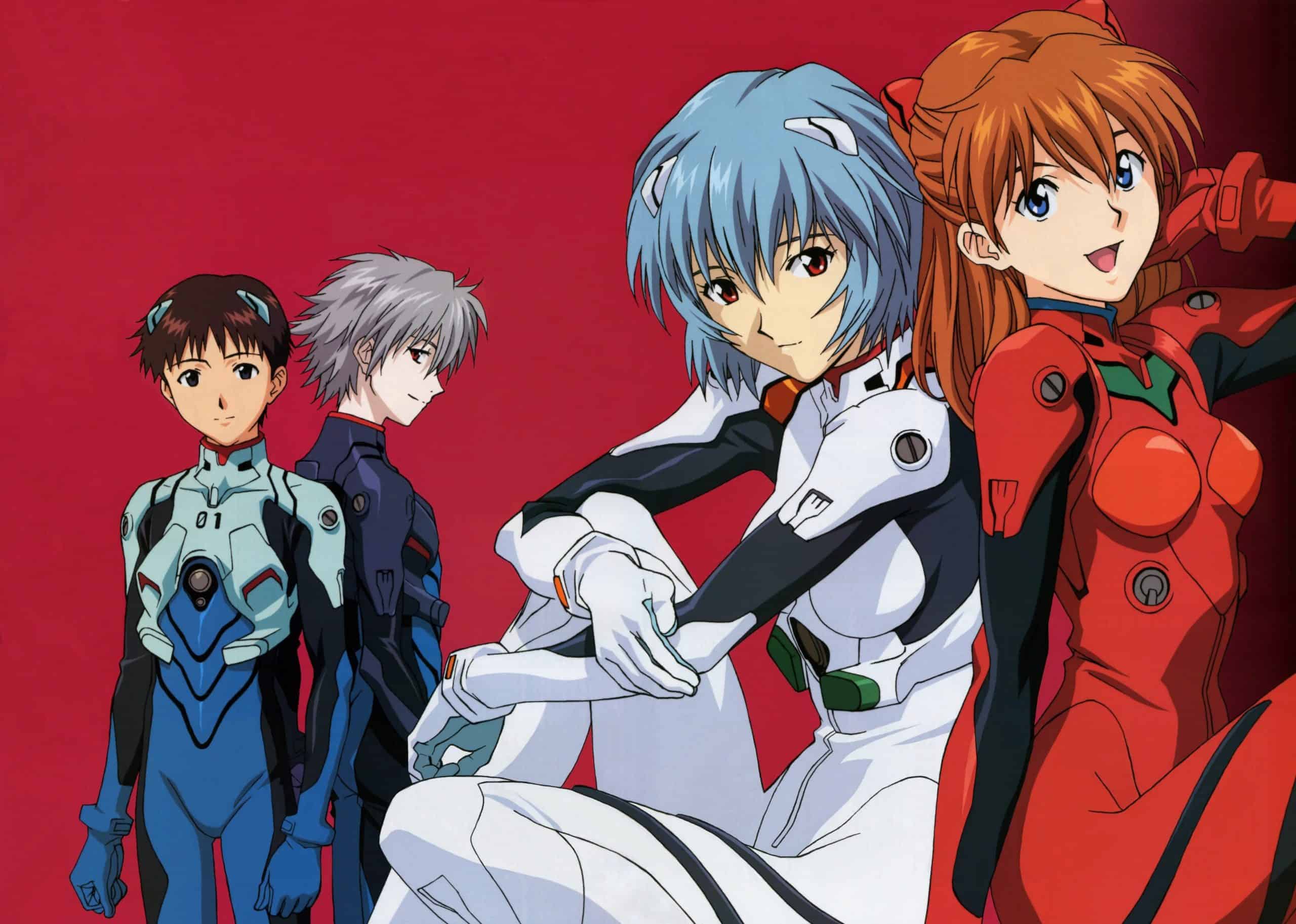
You may think this is simply another mecha show at first, but it ends up being a character drama about the human mind and its transformational potential. That right there is the most interesting part of the program. With the possible exception of A Silent Voice and Your Name, I don’t think many of these programs take the matter seriously enough.
Though I haven’t seen any anime that specifically mocks people with mental illness, many of them are insensitively funny. It made me happy to see that the show acknowledged the validity of sad and anxious emotions. Knowing that Hideaki had previously struggled with depression made it easier to understand why he was feeling down at the time.
Asuka’s status as a fantastic heroine, in my eyes, has been cemented by this. Even though Tsundere tropes usually annoy me, I found her charming and funny in the first few episodes. Her past, though, was what set her apart. Asuka has shown her supremacy and maturity from the very beginning of the series. That’s why I’m certain she’ll be OK. The situation seemed normal at first, but then I realized something was wrong. Her growth will be profoundly affected by her parent’s relationship.
Also Read: Neon Genesis Evangelion Review: A Classic Everyone Should Watch
53. K-On!
K-on! follows Yui Hirasawa, a high school freshman who is both an enthusiastic and eager student and a total and utter newcomer to her new school. The Light Music Club, of whom Ritsu (The Drummer) and Mio (The Bassist) are the only members, piques her attention. With merely an interest in learning guitar and a need for more gourmet treats, Yui and her new Club (Keionbu) are motivated to perform in the Budokan and have a fantastic time doing it.

One of K-on!’s strongest points is the dynamic between its main characters. Different people have different personalities and interests. They provide good creative stimulation for one another, resulting in a never-ending supply of entertaining escapades. The sketches for the characters are quite cute and innocent, and there are no insults to fans at all in the whole episode.
K-on! is essentially a comedy, although I’ll be the first to admit that the humor isn’t its strong point. K-on! also has some light drama. Disagreements arise from time to time but are seldom explored at length. Even after a fierce dispute, I never held any grudges against my best high school friends, so this aspect of the tale resonated with me. K-on! Highlights the best days spent with friends throughout high school.
Also Read: Anime Similar To K-On! To Watch Right Now
54. Little Witch Academia
Little Witch Academia is a breath of new air as an anime take on the bildungsroman genre popularized by Harry Potter and set in a wizarding school. Kagari Atsuko, or Akko as she is known to most of the people she encounters, is a Japanese girl who was brought up by non-magical parents but was inspired to become a witch after attending a performance by the renowned witch Shiny Chariot.
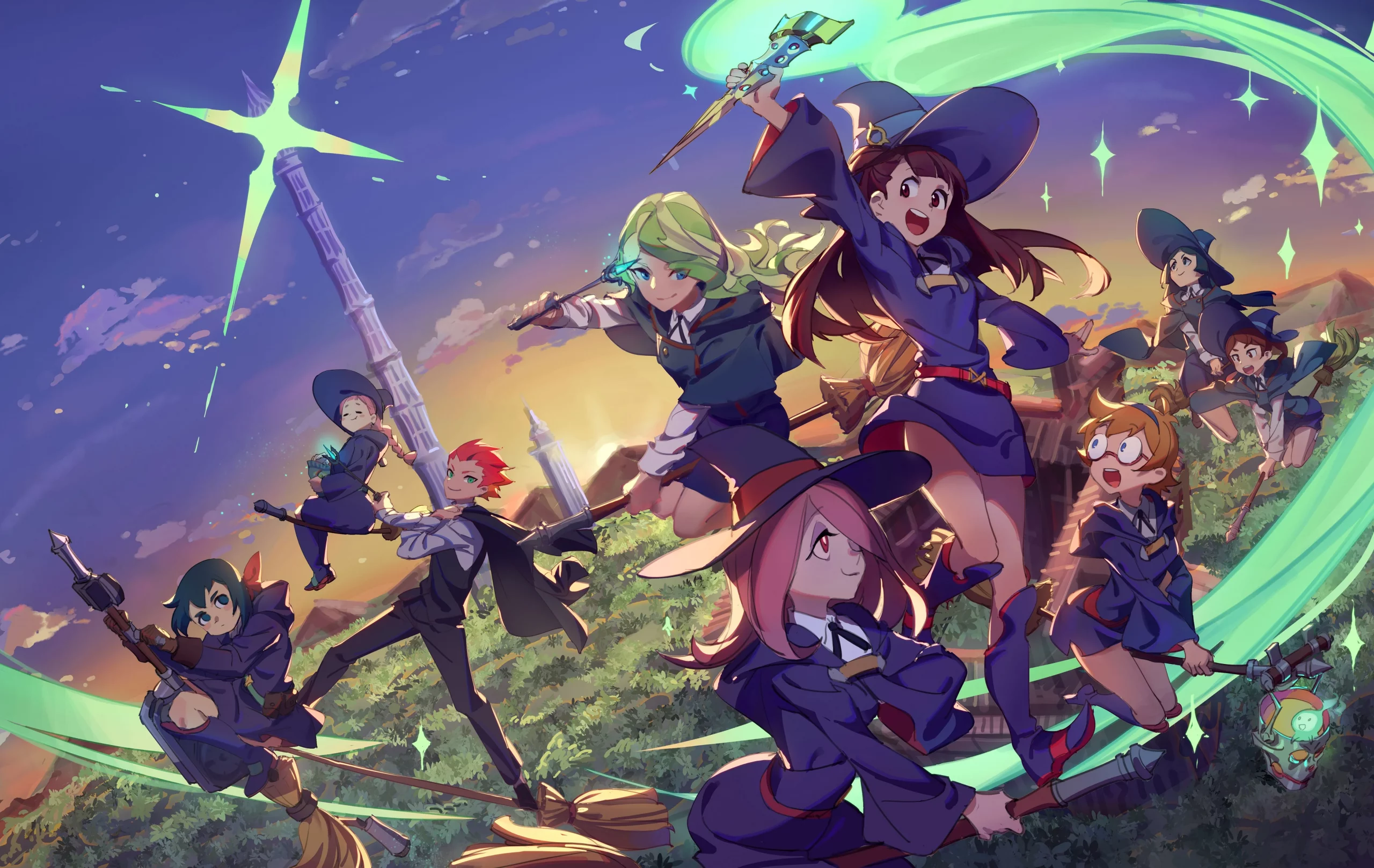
Even though Akko’s brashness and naiveté at the beginning of the series get her into trouble, the Power of The bond and her noticeable connection to an occult magical distortion recognized as the Shiny Rod give her the confidence and assurance she needs to succeed. The Little Witch Academia series received fan funding for its second feature film through the crowdsourcing website Kickstarter. The series began with a short film financed by the Japanese nation’s Anime Mirai 2013 program.
Thus, the anime develops the ideas and themes introduced in the source material. The fact that it does not originate in a Japanese high school allows it to avoid many of the cliches that tend to accompany programs of this sort. Studio Trigger and Gainax’s distinctive style of exaggerated stretchy animation (especially in the Gurren Lagann-inspired mecha portion) lends the picture a comic feels reminiscent of Western animation.
Also Read: What Is Overhaul Quirk of Kai Chisaki In My Hero Academia
55. Demon Slayer: Kimetsu no Yaiba
When the mechanical doll is defeated, a mysterious sword dating back 300 years emerges, and Kotetsu thinks Tanjirou should have it. The Demon Slayer himself vanquished the doll, and now he needs a weapon. Haganezuka Hotaru, who is incredibly ticklish, appears from the bushes, promises to fix the rusted blade, and hands Tanjirou a Nichirin sword as a substitute.

Tanjirou, the Best Boy, is desperately trying to make friends with Shinazugawa Genya, but Genya has absolutely no desire to socialize with him. He harbors resentment at Tanjirou since he fractured his arm, but Tanjirou justifiably reminds Genya that the accident was his own doing because he struck a female.
Upper Five Gyokko, who had been hidden in a vase all day, attacked and devoured a swordsmith that night. While Tanjirou is doing one of the cutest things, I’ve ever seen him do—braiding Nezuko’s hair to look like Mitsuri’s he falls asleep and is woken up by Tokitou Muichirou, who is searching for his swordsmith Kanamori.
Also Read: 44 Anime Like Demon Slayer: Kimetsu no Yaiba
56. The Seven Deadly Sins
Christian theology is the source for the characteristics known as the “seven deadly sins” (not the anime). Included are the vices of rage, greed, avarice, sloth, envy, and resentment. Although all of these feelings can play a role in sin, they are not sinning in and of themselves. A writer may utilize these characteristics to make their characters more realistic by giving them a wide range of feelings. This introduces a flaw in character that, if dealt with, might spur development. Those who have written in this genre before will understand the significance.

Holy Knights, known as the Seven Deadly Sins, allegedly rose up against their ruler, murdered him, and then embarked on hiding. After ten years, the Sins get back together to clear their records, all because of a random lady with absurdly large busts who falls over in a pub, and they unearth the typical dark conspiracy among the top hierarchy to accomplish a thing that is never really evident at any time, in all honesty. To begin, there is no clear strategy for developing the characters.
Crying Girl, like Edward Elric the Hobbit, is attractive while being penniless. An orange mech pilot outfit with the legs ripped off is what Giant Pigtail Lady wears; Whiny Floating Child looks like South Park combined with Naruto; and Abs Man dances like Michael Jackson.
Tumblr Bait Skinny Boy is basically a pink-haired impersonator of Uryu Ishida who shoots bolts of light with an energy bow. The knights had wider cleavage openings, six-packs, and thigh gaps than you’d see in a typical swords-and-sorcery presentation. They give up as the Boar Sin of Gluttony, dressed like Victoria’s Secret model in a G-string and dinner jacket, strides in. Her knee-high boots will protect her from the censor bars.
Also Read: 20 Facts About “The Seven Deadly Sins” You Should Know
57. Puella Magi Madoka Magica
Baby Wizards Madoka Magica is the closest I’ve come to experiencing art in animation in terms of visual style, music, and story. The arrangement of the parts may seem chaotic at first, but it will eventually come together to make a complete. Although there are only 12 episodes, they are all packed with action.
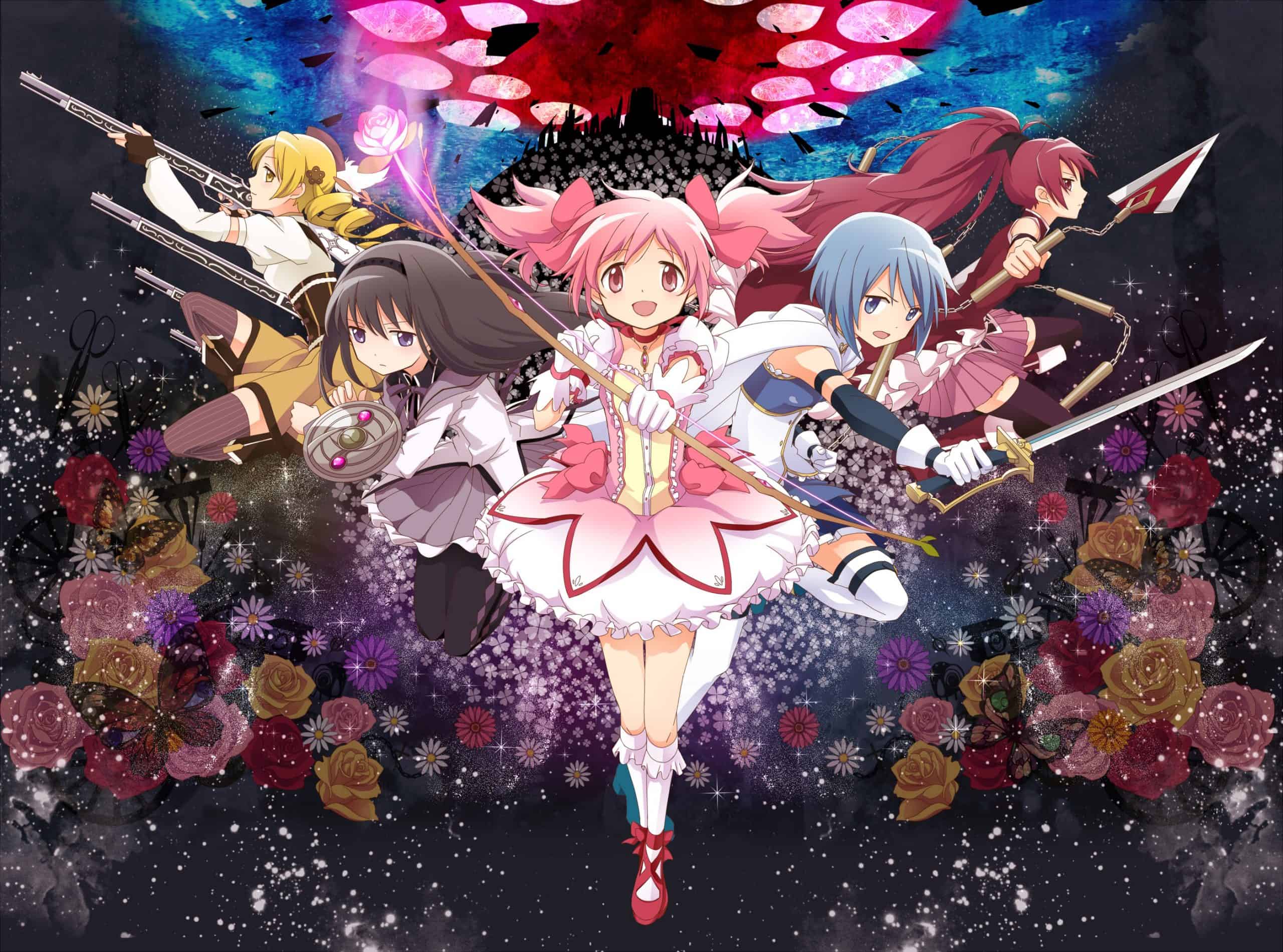
In ‘Puella Magi,’ a gang of sorcerers learns that an alien being that looks like a cat is the source of their powers. There’s a catch, as there always is with these kinds of deals: the offeree may have their one desire granted, provided they agree to train as a magician. The show follows Madoka and her friends, all magicians, as they go on their many adventures.
The story’s premise isn’t very interesting at first glance: to stop the evil doings of witches, the magi must fight them. This review may seem to be getting away from the actual anime, but that’s because the narrative isn’t what makes this show worth watching; it’s the world that the show builds for you to explore.
However, and this is where things get interesting, what truly distinguishes this program is its portrayal of their lives and the struggles they face. The show is more of a metaphor for life, exploring universal themes via equally nebulous ways of communication. The show’s zaniness may turn off some viewers, but if you can get beyond that and comprehend its symbolism, you’ll get it.
Also Read: Puella Magi Madoka Magica Watch Order: Movies & Anime
58. Durarara!!
The show’s novel narrative structure is one of its best features. It switches between various characters’ points of view so that the audience may get a sense of how things are from their point of view rather than just one. This may be seen in the form of a rehash of the whole plot or a seamless transition within the same scene. The former is the norm, and the switch seldom seems sudden or loses your interest.
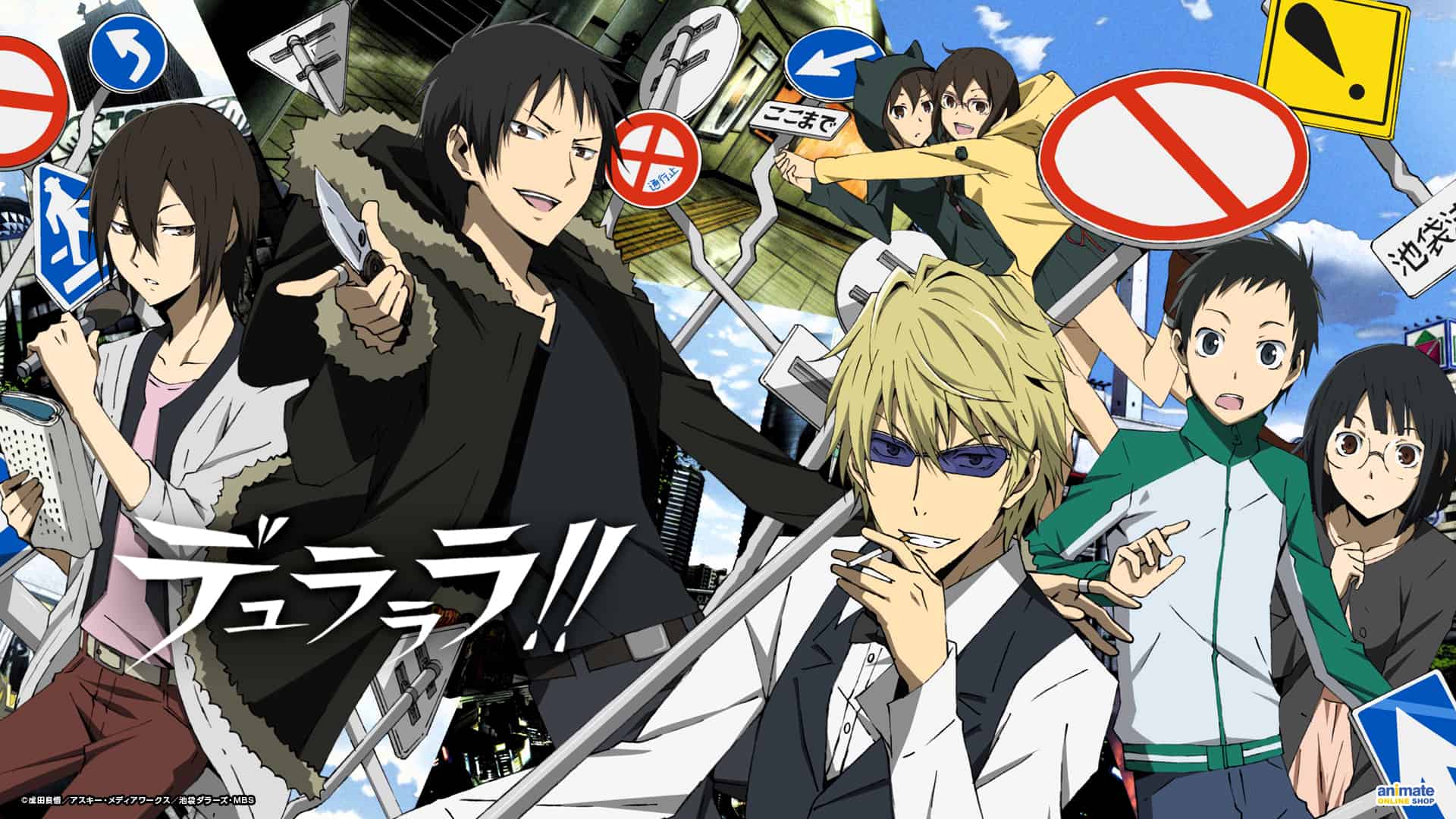
The large and varied cast keeps things fresh since you never know who will run into whom next or how deeply they will become entwined. The episode manages, almost amazingly, to wrap up most of the subplots involving the main characters. Everything works out in the end, as the many storyline threads complement one another.
There are three distinct story arcs in the first season, with subsequent episodes building on earlier ones and receiving clues from them. The program takes its time getting going and does not rush into anything. The plot moves at a great clip, although there are several characters who seem to linger unnecessarily and for no good reason.
In addition, the show’s initial few episodes serve as an introduction to the main characters and supporting cast while also setting the stage for further developments. The tale moves slowly at first, but it makes up for it by increasing the mystery and adding new subplots. Despite a sluggish start, the show’s premise is compelling, and the diverse ensemble does a good job of keeping things fresh.
Also Read: 30 Strongest Female Anime Characters of All Time
59. Fate/Zero
All of Fate/Zero’s masters and slaves are presented in a circle, along with their goals and potential enemies. The initial mystery isn’t as powerful as it was in Fate/Stay Night’s weaker sequel, Unlimited Blade Works, which focused on just a few characters, but the cast’s richness, variety, and realism more than makeup for this. There isn’t even a major character at first, and others wind up getting more time in the spotlight. The first two episodes set a tense tone, and each character has compelling motivations to fight for their own existence.

The first several episodes set the stage by introducing the strengths, weaknesses, history, and objectives of the opposing teams. This creates some intriguing dynamics, but in episode 5, everything comes together. Although casualties are low in the opening act, the frequency and focus of the fighting give the impression that it is significant.
The second part of Fate/Zero immediately increases the tension by a large margin as fully realized characters have their principles severely challenged and, in most instances, shattered. Ten of the second half’s thirteen episodes are particularly good, wrapping off the characters’ arcs in a brutally cruel and satirical fashion.
As the story’s most pivotal figures use their remaining resources to try to seize control of the grail, the finale itself consists of a never-ending stream of memorable moments and set pieces. The last act is both disappointing and satisfying since it fails to fully resolve the story yet still seems right.
Also Read: How To Watch Burden Of Proof Episodes? Streaming Guide
60. The Irregular at Magic High School
The narrative of an exceptionally talented brother and sister (a la No Game No Life) who decide to attend First High School, a prestigious institution for magicians, is told in The Irregular at Magic High School, also known as Mahouka Koukou no Rettousei. All new pupils are given a test of their magical prowess and then placed in classes according to their results.
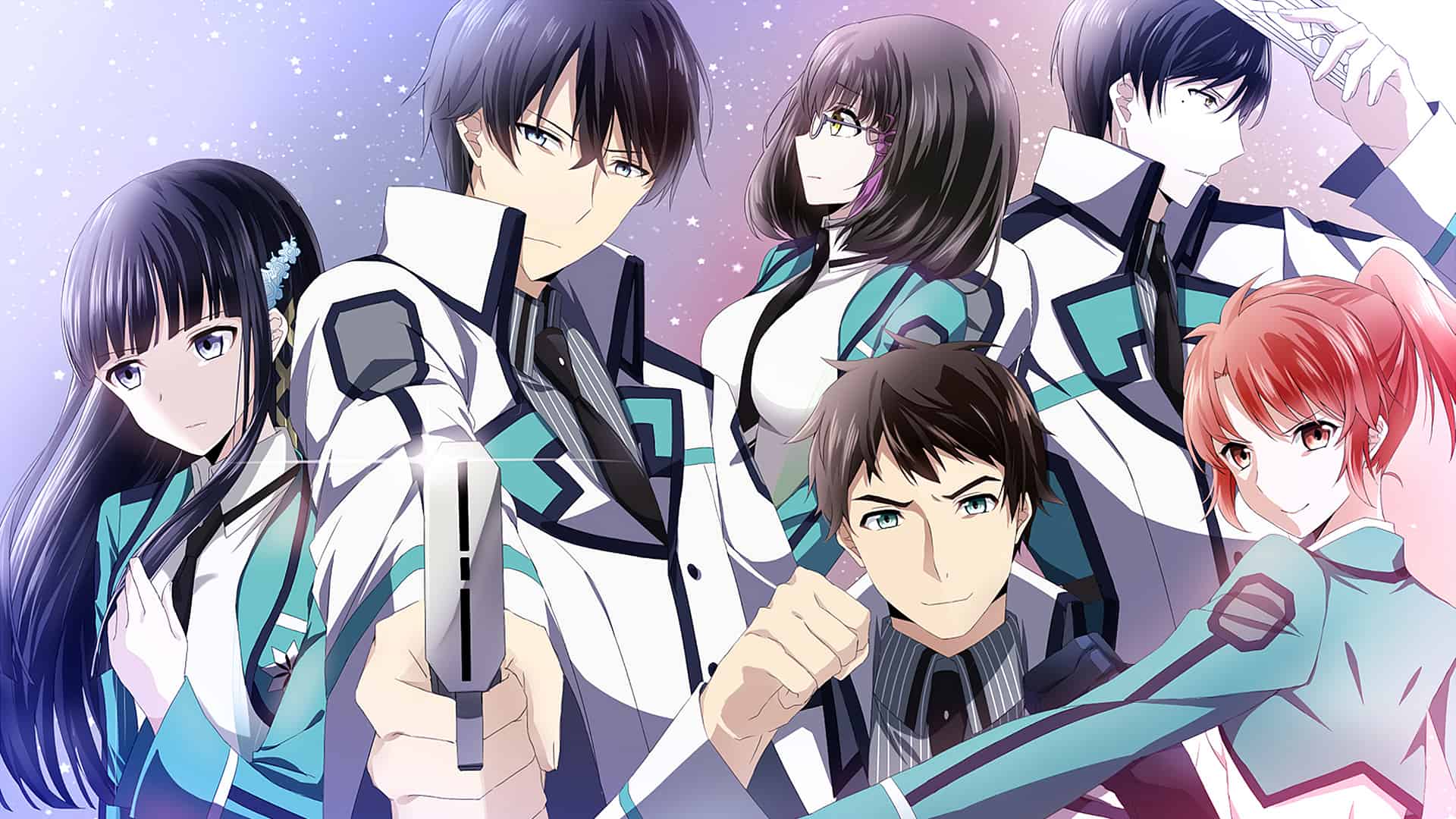
Promising students in the field of magic are identified as “Blooms” and placed in Course 1. The “Weeds” are the members of Course 2 who did poorly on the practical magic test. There is an unspoken social hierarchy at this school, and the Weeds are at the bottom. Miyuki, the younger sister, is declared a Bloom due to her enormous magical potential, whereas Tatsuya, who fared well on the written but badly on the practical test, is classified as a Weed.
You might anticipate an underdog tale based on this premise. You might assume that, like Mx0, this anime will follow Tatsuya as he works his way up the magically-based social ranks of his school. Maybe it’s about how hard it is for the two of them to engage with each other at school, where that’s frowned upon.
Also Read: 35 Top Tiktok Stars of All Time – Ranked
61. Kabaneri of the Iron Fortress
Attack on Titan’s animation studio made Kabaneri. Kabaneri’s animation and music by Hiroyuki Sawano (who wrote Kill La Kill and Xenoblade Chronicles X) match Wit’s previous popular games. Kabaneri was better, despite Attack on Titan’s more awards. Unlike Attack on Titan, it doesn’t drag.

Kabaneri of the Iron Fortress is an original manga set in an alternative Japan where the “Kabane” have destroyed civilization. Due to their steel-caged hearts, Kabane is hard to kill. Humanity’s survivors regrouped in a few walled towns, sharing information through gigantic, massively protected trains after the Kabane overran Japan. It’s new and suits Kabaneri’s steampunk flair, helping define the show’s visual identity. Since digital technology is rare, mechanical engineering and physical ingenuity solve problems.
Ikoma, a young engineer, creates a weapon that kills Kabane. Ikoma wants to stop the Kabane and reestablish civilization, unlike other people. Ikoma is a hero who fights for social reform in his culture and a better world. Like many heroes, Ikoma risked his life and endured humiliation for the greater good. Ikoma is a Kabaneri, a Human-Kabane hybrid, after being bitten by one early in the series and stopping the infection from spreading. Ikoma has been fortified by evil and is ready to lead his people. He hasn’t faced his hardest challenges yet.
Also Read: Kabaneri Of The Iron Fortress Review
62. Re:Zero – Starting Life in Another World
Subaru Natsuki, a high school student, and anime aficionado, visits the Kingdom of Lugnica, a fantasy world quite different from others we’ve seen in the last decade. Subaru is brought to tears as Emilia sacrifices her life to rescue him from many thugs in the city.
Any time Subaru loses her “insignia,” an amulet, she runs the risk of being “returned by death” or sent back in time to a point before a specific event. Subaru’s new power is shown to be excruciatingly painful as the plot progresses, sealing his eternal damnation at Lugnica’s hands.

A smattering of insults directed against members of the “otaku” subculture and those who watch anime. Subverting the audience’s expectations increases the drama. The story’s in-depth exploration of the problem ends here, which is a pity. The episode’s first half hour is spent painfully establishing this recurrent plot point. I like how quickly the episode turned its focus away from Subaru. Others continually shoot down his hopes that he can utilize magic to rapidly rescue everyone.
But after being prodded with inquiries like “Is this how it’s supposed to be? When are we leaving?! Your once-impressive hero status has vanished, leaving you to question, “Where did it go?” or, “And besides, if I was summoned, where’s my cute girl who summoned me?”
Over the first two episodes, Subaru’s power is gradually eroded in increasingly humorous ways, to the point where the show’s creators may seem to be shouting their message at the viewer. After seeing the pilot, I realized the show wasn’t as innovative as its marketing made it seem.
Also Read: He’s All That Netflix: What is The Show All About?
63. Yuru Camp
In the opening scene of Yuru Camp, a solitary camper named Rin Shima rides her bike to a lake in the shadow of Mount Fuji. Even though she is still a high school student, Rin has extensive experience traveling on long vacations away from home and camping alone in the forests, along rivers, and on picturesque lakes and hills. She doesn’t mind that it’s getting close to winter and freezing outside; in fact, she enjoys camping in the off-season so that she can be genuinely alone in the wilderness.

Rin notices a pink-haired girl napping on a rest area seat as she approaches the campground. She doesn’t comprehend much about this, but after nightfall, she’s scared by the exact same girl who stands behind her, pleading for aid. Rin finds that Nadeshiko Kagamihara, a newcomer to the region, biked up to the campground to view Mt. Fuji for her inaugural visit after a short pursuit back from her tent by the lake. Nadeshiko gratefully welcomes Rin’s fire and instant ramen as she has no sustenance. Nadeshiko’s older sister provides her with a ride after she gives Rin her phone number to go camping.
As a single committed camper, Rin isn’t very enthusiastic about the concept, but she also doesn’t appear to be strongly opposed to it. But she needs some time to get used to the concept. But before she has that chance, Rin recognizes Nadeshiko as a student at school, and they bump into one another much sooner than Rin had planned.
Nadeshiko is the newest member of the Outdoor Adventure Club (or “Outclub”), a more relaxed counterpart of the school’s Hiking Club, since she is looking forward to going on more camping trips. This Outclub is all about camping, too, but without the strenuous activity associated with hiking.
Also Read: Yuru Camp Movie Releases 2nd Off-Shot Visual!
64. The Rising of the Shield Hero
My recollection of The Rising of the Shield Hero is a little odd. I was almost halfway through the book before I found out that the “progressive and woke” group was incensed by a crucial narrative element in the pilot episode.
Throughout the show, I was able to avoid getting drawn into that ridiculous argument. I wrote an article wherein I dissected the story’s numerous references to larger themes before assessing this series. Then, we’ll analyze a famous isekai plot from modern anime, which features a furious man and his princess, chicken, and raccoon allies.
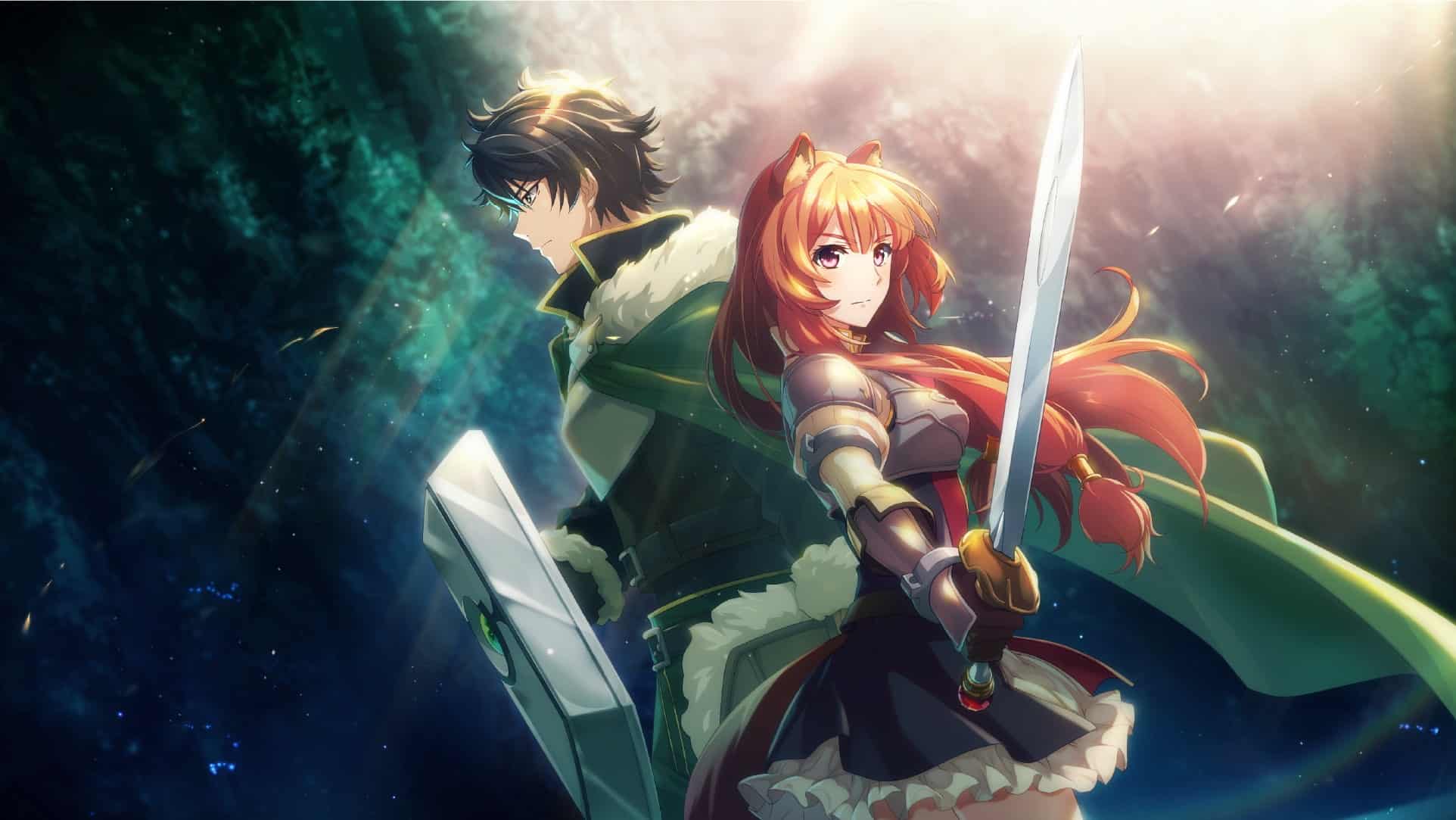
Naofumi Iwatani, a college student, discovers a book in his library that transports him to the world of Melromarc, where he and three others, Motoyasu, Itsuki, and Ren, are charged with protecting the land from the devastating Waves of Calamity. Motoyasu is armed with a spear, Itsuki with a crossbow, Ren with a sword, and Naofumi with a shield. In reality, the oldest daughter of the monarch, Malty, joined his gang and pretended to befriend him one night before stealing his equipment and making up a rape accusation against him the next day.
His reputation is ruined, and he is left to fend for himself without any help, despite his pleas of innocence, which makes him bitter and resentful. He takes in a baby raccoon he names Raphtalia and raises her as if she were his own daughter, treating her with kindness and compassion and teaching her to fight.
Soon later, they are joined by yet another humanoid spawn disguised as a chicken; his name is Filo. At a later time, Melty, the younger heir to the Melromaric throne, also signs on. Unlike her brother, who is always plotting, she is a genuine sweetie.
Also Read: The Cast and Crew of The Rising of the Shield Hero Dive Into Season Two’s Highlights
65. Blue Exorcist
The supernatural action anime Blue Exorcist is based on the manga of the same name, which was inspired by a Brothers Grimm fairy story and had a number of Biblical themes and references. The priest of the local monastery, Father Fujimoto, takes in the orphaned Okumura brothers, Rin and Yukio, and raises them as his own. The Okumura brothers’ upbringing in a Christian home was already arduous before they found out they were the spawn of Satan.

When Rin’s inherent demonic skills come to life, he is driven to seek revenge against the man who destroyed everything he cared about: his own father, Satan. This is the defining moment of the anime Blue Exorcist.
The thrilling narrative of Blue Exorcist keeps you on the edge of your seat. Throughout their training, Rin, his brother, and the other students were kept on their toes by a steady stream of demon attacks and exorcist tasks. Seeing beginners hold their own against seasoned pros was a sight to see. The fact that no one at the exorcist academy did anything to help wasn’t cool. However, a few of them possessed endearing eccentricities.
The novel’s core topics of God, Catholicism, and demons prompted some peculiar talks and disputes among my friends and myself, and I thought the characters to be fascinating. Blue Exorcist does an acceptable job, for an anime, of dealing with this subject, without being too preachy or muddying the lines between good and evil. When things take a sudden turn, we are forced to think critically, and this helps us clarify our thoughts.
Also Read: Blue Exorcist Manga Comeback Date Confirmed
66. Magi: Adventure of Sinbad
The story of Sinbad the Sailor has several iterations, all of which originate in One Thousand and One Nights. I first encountered Sinbad as a child when I read excerpts from a book of fairy tales. No bigger topic for the dungeons comes to me than his restlessness and desire for adventure, which I still vividly recall.

Sinbad’s life is told in Adventure of Sinbad long before he becomes King of Sindria. Badr, Sinbad’s father, was a battle warrior from the Parthevian Empire, where Sinbad’s mother, Esra, was born. Sinbad spent his formative years in the countryside, tending to his ailing mother and aiding the local farmers after their hamlet, Badr, was destroyed during the conflict with the Reim Empire. When he was an adult, he met and hid the mysterious Yunan, who turned out to be a Magi, from the world.
Sinbad’s mother begs Yunan to be his mentor, and after hearing of his good intentions, Yunan agrees to send him to the Dungeon “Baal” that appeared on the border between Partevia and Reim and whose treasures remained unclaimed despite thousands of warriors from both empires challenging it, but only Sinbad and a Parthevian noble, whom he dubbed “Drakon,” having survived.
Defeating Drakon and seizing Baal after a great battle, Sinbad becomes the first Dungeon Capturer in history and earns respect and devotion of the Djinn that reside there. Sinbad leaves Parthevia on his mission to save the world after spending his last moments with his dying mother.
Also Read: 12 Magi: The Labyrinth of Magic Facts You Never Knew
67. Devilman Crybaby
Devilman Crybaby seems to be faithful to the book’s fundamental patterns. After seeing the OVA released in 1987, which was adapted from the manga, I became convinced of this. While Devilman Crybaby makes some effort to maintain continuity with the original, significant changes were made to both the cast and the setting. I thought it worked really well inside the framework of Crybaby’s narrative. Ads for Devilman Crybaby were directed squarely toward Netflix viewers because of the service’s massive viewership.
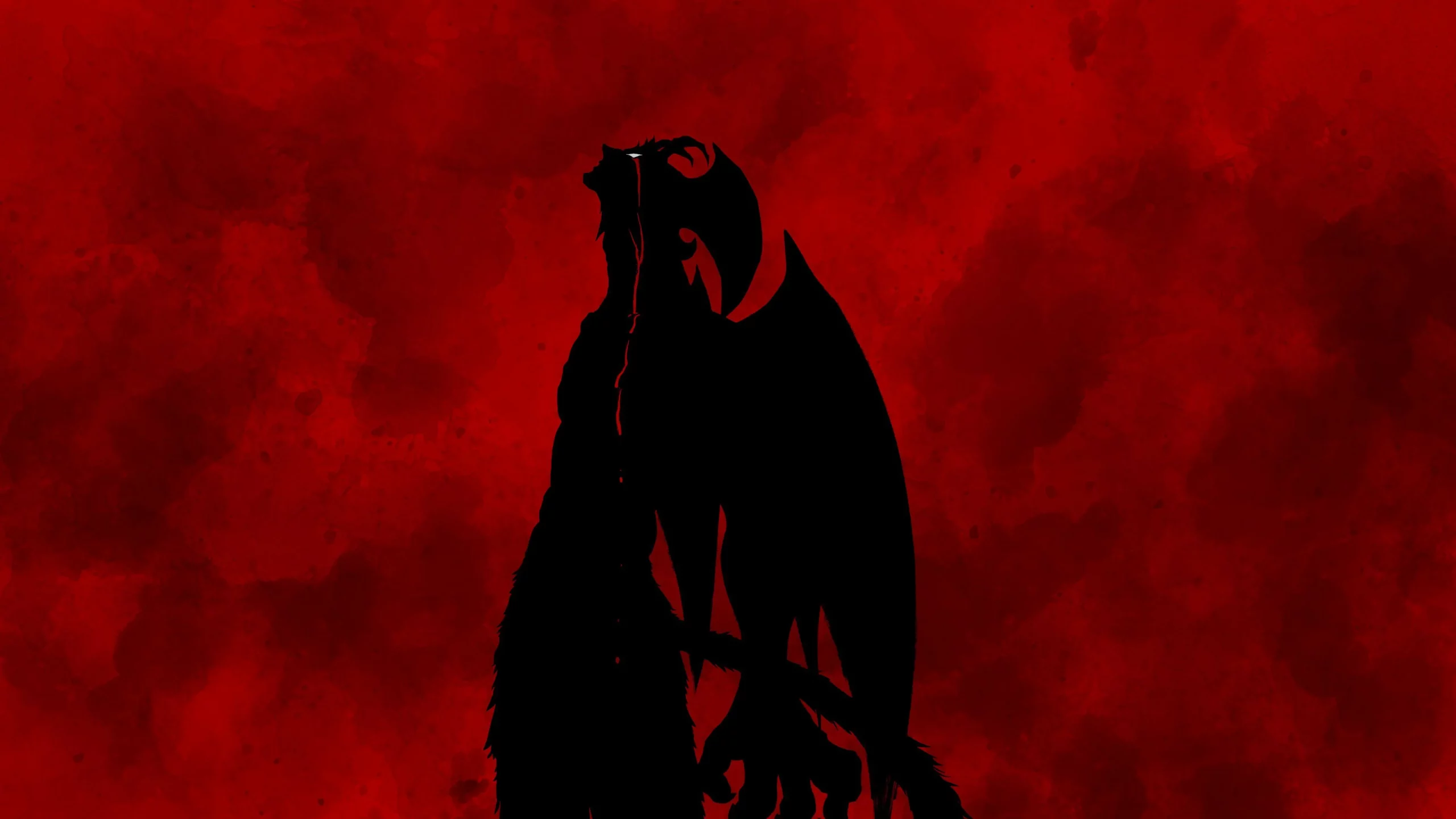
Miki, who is just a metaphor for someone Akira loves in the Devilman manga, becomes a fully realized character as a result of this in the 1987 OVA. I expected the OVA’s reinvented generic thugs to be more current and relatable, but instead, they turned out to be nothing like the troublemakers I was expecting them to copy. Although the four individuals in this ensemble have incredible rapping skills, the story seems to have been imposed on them. The program devotes a lot of time to them, despite the fact that they contribute nothing to the plot.
It’s unclear why one of them was made out to be the devil man, although he may have been homosexual or Miko’s secret love interest. I guess it’s simply that I can’t escape the notion that these folks were neither central nor incidental and that I should care about them neither too much nor too little. Devilman Crybaby makes good use of its unique characters like Miko, who round out the ensemble well.
Also Read: 25 More Anime Like Devilman Crybaby: Not For The Fainthearted
68. Naruto Shippuden
I’m still really ticked off that Shippuden’s first arc features Sakura’s first meaningful fight. This was the showdown that decided the fate of the Kazekage in Rescue the Kazekage. Seeing Gaara again was fantastic, but this seemed to be the first time it was shown that Naruto wasn’t the only-tailed beast. Despite having been introduced in early episodes as filler, the Jinchuriki became the focus of this sequel series. However, the show always has the same set of actors returning each season.
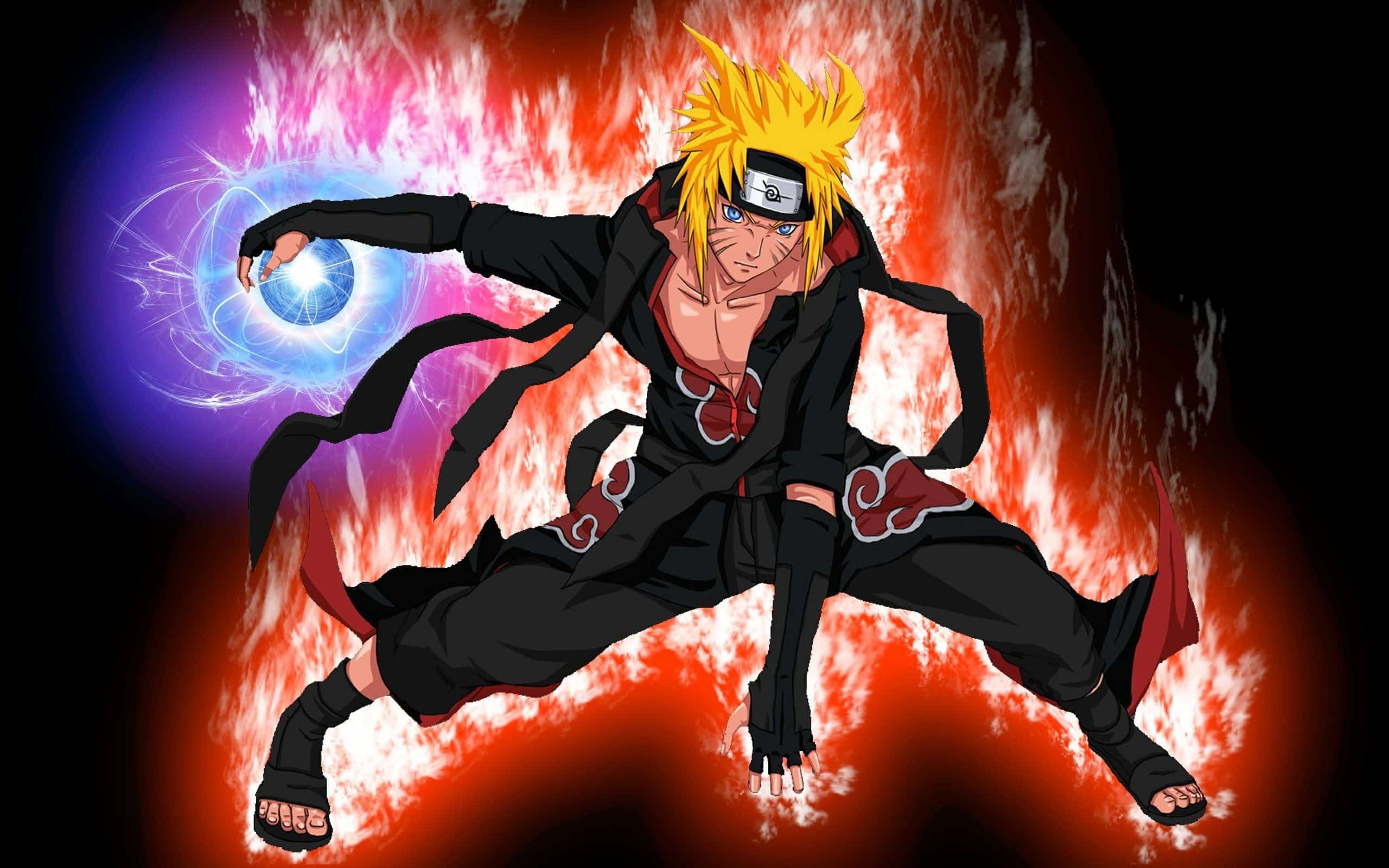
In addition, Orochimaru’s plot was left unfinished, despite being a prominent enemy in the first half of the series, and the new principal villain gang took center stage in this arc. Therefore, unlike the previous system, multiple enemies, rather than just one, may arrive at any given time, which is something I quite like. This storyline shows that the bad guys aren’t unstoppable and that efforts are being made to completely wipe them out.
Time is running out to rescue Sasuke from Orochimaru in the second arc, and every one of Team Seven, aside from Naruto and Sakura, has been changed. Captain Yamato was a pleasant surprise; he didn’t seem like he was attempting to take Kakashi’s position, and he and Kakashi had a good rapport.
Then there was Sai, who looked and acted just like a Sasuke imitator. I’m glad that he matured over that attitude later in the series; he showed the greatest improvement in the personality of all of the characters.
Also Read: 35 Naruto Shippuden Facts You Did Not Know
69. Dorohedoro
Dorohedoro mostly takes place in two locations: The Magic Realm, home to sorcerers who wield magic via the production of black smoke, and a gritty industrial setting simply known as “the hole.” From the Magic Realm, one may enter the Hole by way of a portal opened by a sorcerer. It’s established early on that the Hole has been frequented by sorcerers for some time, where they perform experiments on unsuspecting citizens.
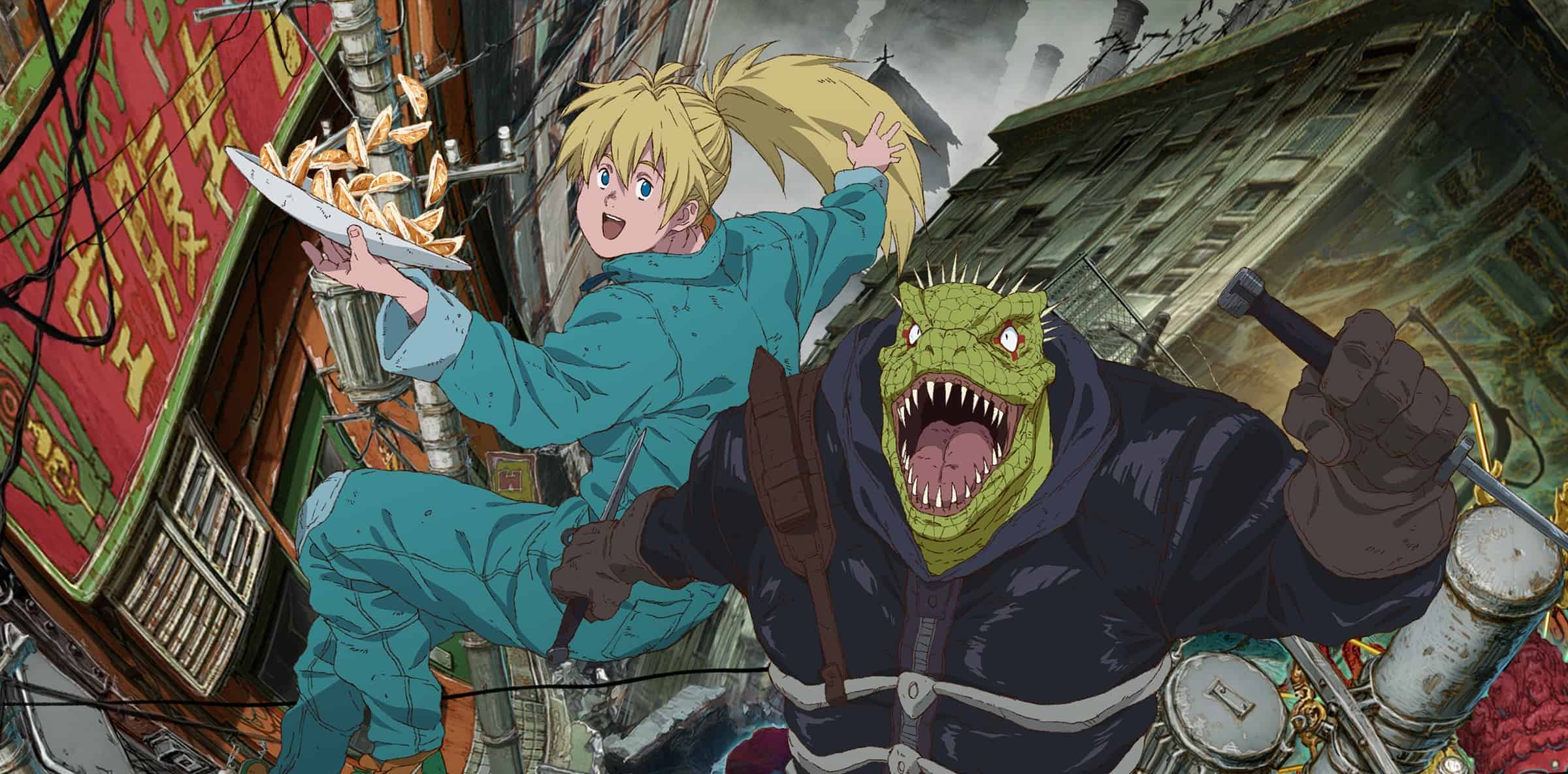
After being cursed by a sorcerer, Kaiman, a human man from the Hole, wakes up one day with a lizard head and profound amnesia in the opening scene of Dorohedoro. In a ruthless quest to learn who gave him the lizard head and why, Kaiman teams up with Nikaido, a blonde gyoza chef.
But when the senior sorcerer, En, finds out that a man with a lizard’s head is murdering other sorcerers in the Hole, he orders his enforcers, Shin and Noi, to take care of Kaiman, setting up a bloody showdown between the En Family and powerful wizards like Nikaido and Kaiman.
After this point, the narrative complexity of Dorohedoro increases dramatically as many new characters and plot threads are introduced. The mystery surrounding Kaiman’s past and identity acts as a motivating element throughout the series.
The story takes a much darker, existential, and surreal turn as it is revealed at the conclusion of volume 10 (about chapter 60) that “Kaiman” is a composite mix of numerous persons. Fans of dense mysteries and authors with patience will like the slow burn created by Dorohedoro’s responses to queries, which frequently lead to further inquiries.
Also Read: Top Strongest Characters in Dorohedoro – Ranked
70. Carole & Tuesday
Carole & Tuesday’s worst flaw is that it has the potential to be so much better. The show’s strengths and weaknesses lie in the same place: in its lofty goals. I won’t lie to you, but Carole and Tuesday lose their luster fast.

)
The visuals and musical performances in the first (and, to a lesser degree, the second) episode are unparalleled, not just for a music-based anime but for TV anime in general. It would be hard to exaggerate the show’s brilliance, but as the episodes go on, the show’s originality starts to fade in favor of repetitive stills and badly drawn character traits.
Since this is a musical, I’ll use a musical example to make my point: there is a huge difference between the first and last times “Loneliest Girl” is performed, and those episodes span twelve. That will provide you with an in-depth look at Carole and Tuesday’s growth.
Carole & Tuesday’s musical performance is unparalleled, even at its weakest moments. Having solid performances is, in my opinion, the single most important factor in creating a believable illusion of realism. When the singers in Million Doll don’t deserve the audience’s astonished responses or when Minmei fakes astonishment during her SDF Macross performances, the scenario collapses. Carole & Tuesday isn’t without its issues, but the fact that it passes itself off as a trashy popularity contest does a good job of hiding them.
Also Read: The Playboy Murders Episode Schedule & Expectations
71. Kakegurui
With the help of its dedicated fanbase, ‘Kakegurui’ was able to break into the top 10 summer anime of 2017. While I was aware going in that this series wouldn’t be to my usual taste, I was still surprised by how drastically it deviated from my expectations.
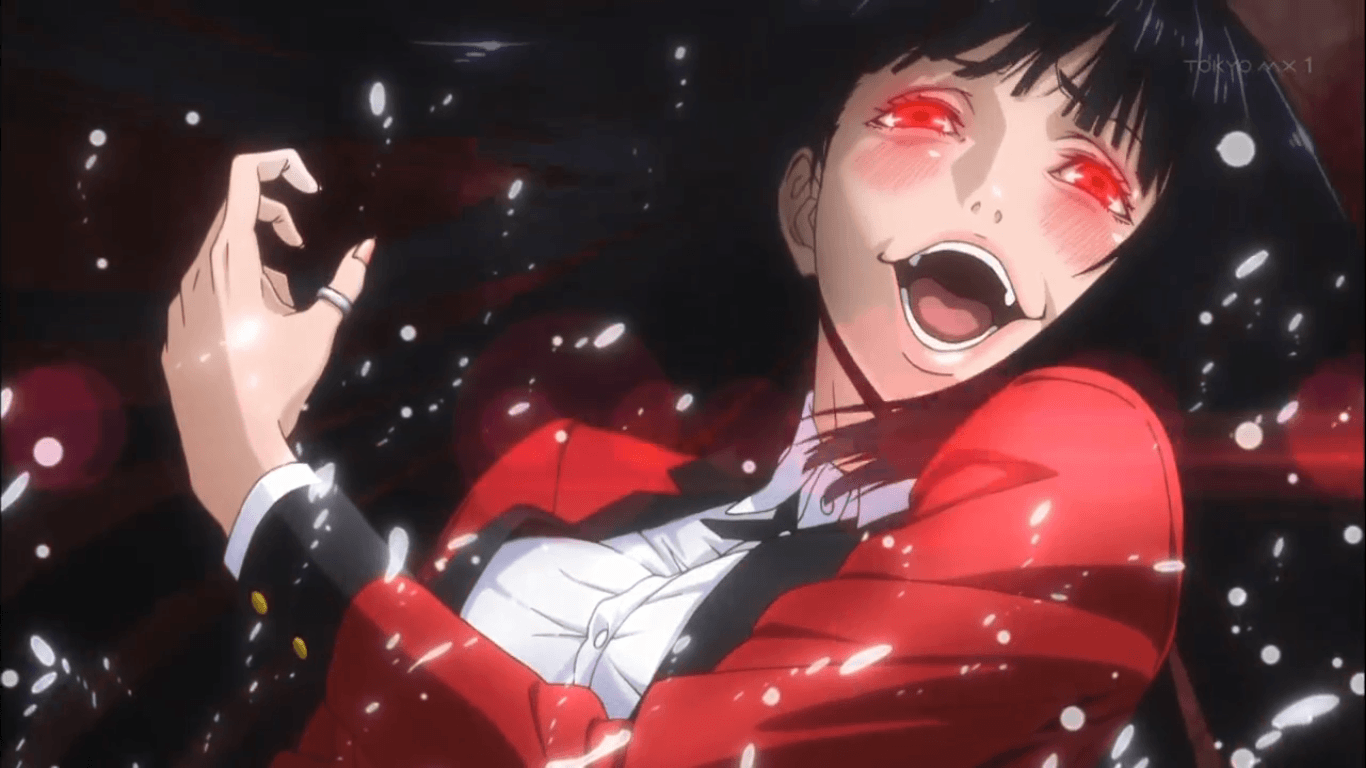
However, I must admit that, with one notable exception (more on that person below), I enjoyed getting to know every single character in the series. Jabami Yumeko is a freshman at Hyakkou Gakuen, a prestigious institution with a long and illustrious history. The school’s slogan is “Money is everything,” thus students are expected to gamble heavily as part of their education. Yumeko, contrary to first impressions, is a mad gambler who would go to any lengths to win a wager.
As the tale develops, Yumeko gains prominence by challenging and generally overcoming more formidable opponents (a sports cliché that scarcely needs repeating). When I was younger, I thought that I would like psychological thrillers more if they omitted the frequent and graphic depictions of violence and bloodshed.
But it contradicts my decision. Kakegurui had around 5% violent content, yet it still didn’t make me want to read it all in one sitting as Classroom of the Elites did. I wouldn’t go so far as to say I really detested it; the story wasn’t exciting, but it wasn’t dull, either.
Also Read: Is Kakegurui Twin Spinoff Manga Coming To An End? Explained
72. Kengan Ashura
The news that the author of the entertaining fighting manga Kengan Omega plans to continue the plot was welcome news. It’s a fascinating idea, and it makes sense, considering the prevalence of the myth that subterranean fighting circles exist (which I have personally never seen). The graphics are stunning, and the fight scenes seem authentic.
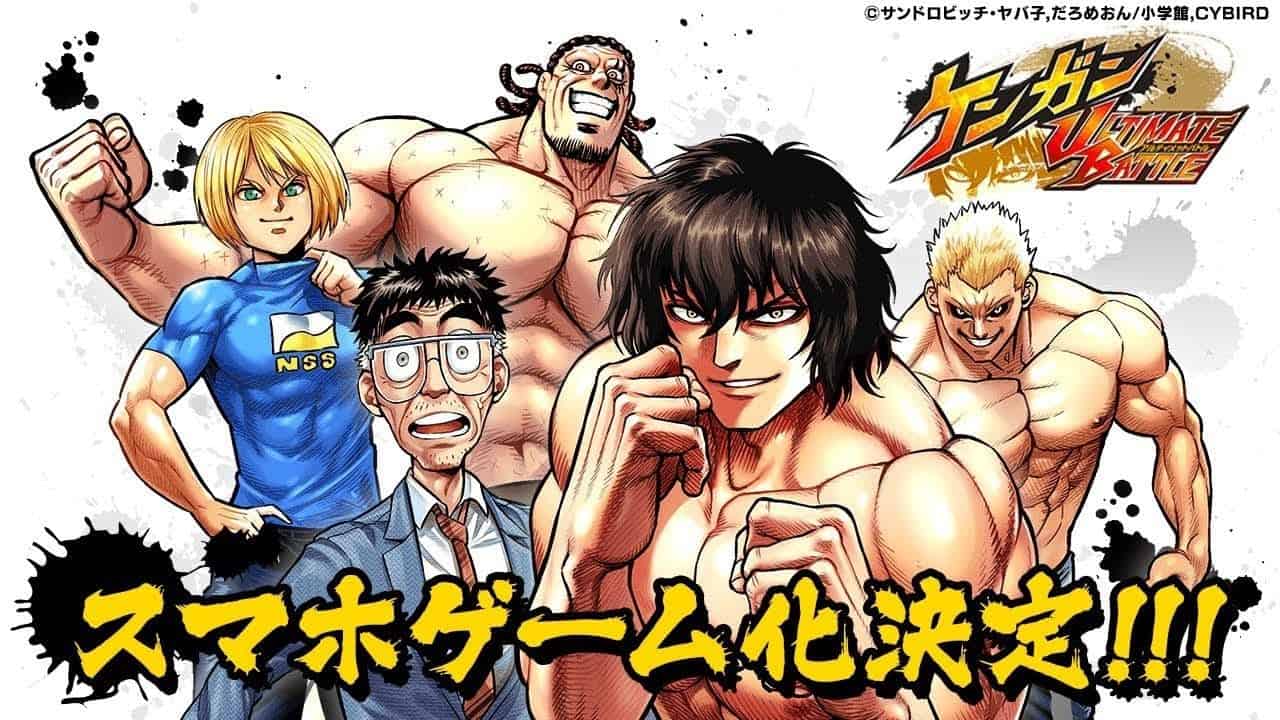
There is a large cast of secondary characters. All of them are interesting in their own right and may easily overshadow the main character. The story itself isn’t really interesting, but the dialogue and plot twists make up for it. The author gives clear explanations of several fighting styles. Many well-known people, brands, and rivals make brief appearances.
The author is obviously very interested in and knowledgeable about mixed martial arts. Although CGI has come a long way, the anime adaptation does the manga justice. Kengan relies heavily on the expressions on its characters’ faces to convey their emotions and mental states, although the show’s animation falls short in this regard.
Since CGI animation makes fighting easier than traditional animation, the battles are fluid, but unlike the manga, the viewer does not feel the full force of the opponent’s attacks. Ohma doesn’t have the same presence in the show as he has in the manga, and I can’t figure out why (maybe they shrank him for the show).
Unfortunately, the straight man, Yamashita, appears to be the most faithfully adapted character. There are 12 more episodes to air. The program also omitted some chapters early on, so it’s unclear what will become of that material. The show’s closing tune has my head bopping (that beat’s fantastic).
73. The Kawai Complex Guide to Manors and Hostel Behavior
Characters like Usa and Ritsu take the stage in this episode. It was a pleasant show overall, with some touching scenes and even a few (although not as many as usual) vulgar jokes. Usa has taken Sayaka’s words from the last chapter to heart and is actively seeking an emotional connection with Ritsu.
He repeatedly insists that he won’t accept the hint and asks Ritsu to engage with him. As you might imagine, this may cause some tense and uncomfortable interactions. Maybe it’s a very standard college romance, but it’s handled well enough that it doesn’t seem stale or tired.
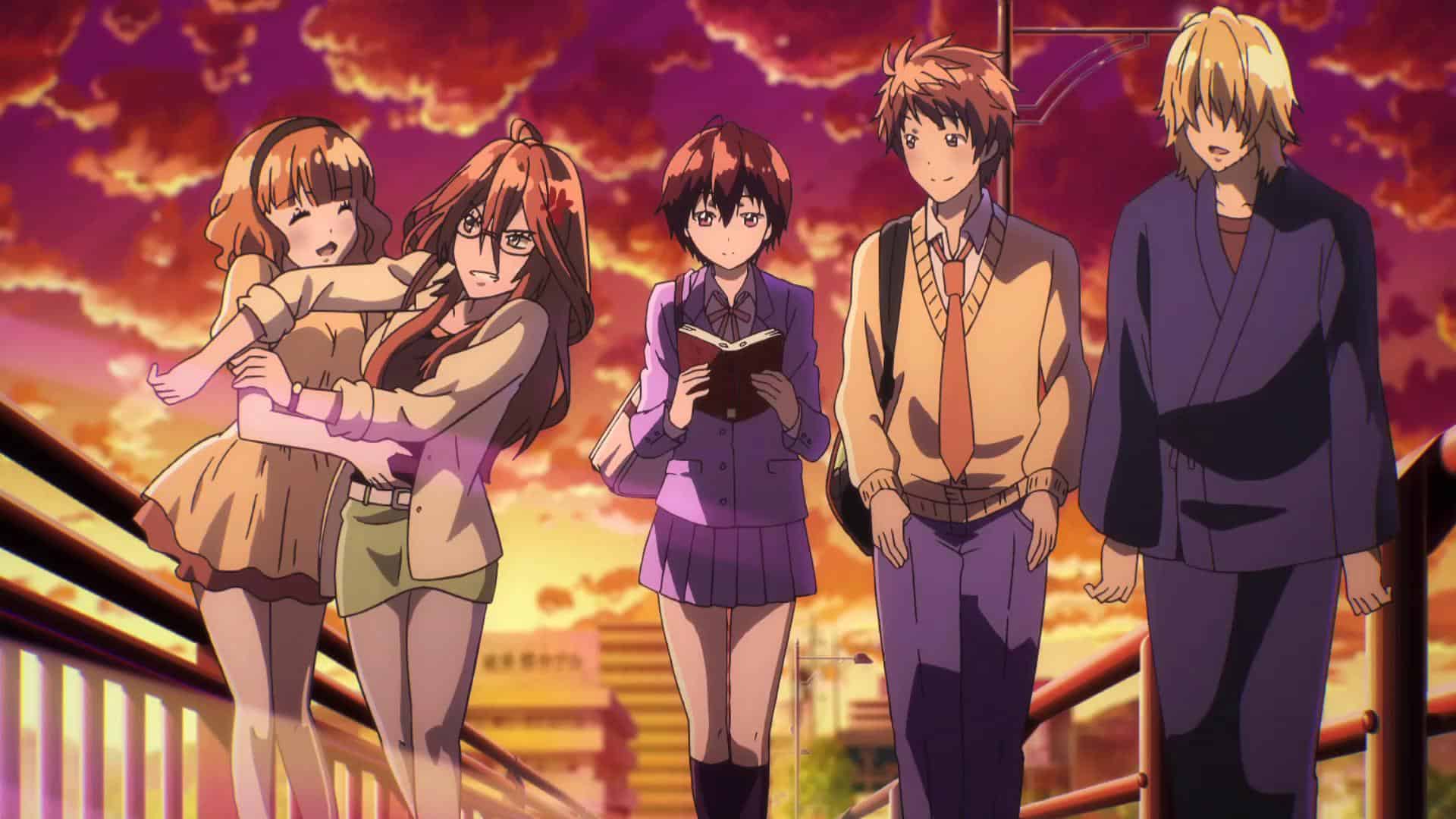
Guide to Manors and Hostel Behavior (Credits: PONY CANYON INC)
Although CGI has come a long way, the anime adaptation does the manga justice. Kengan relies heavily on the expressions on its characters’ faces to convey their emotions and mental states, although the show’s animation falls short in this regard. Since CGI animation makes fighting easier than traditional animation, the battles are fluid, but unlike the manga, the viewer does not feel the full force of the opponent’s attacks.
Ohma doesn’t have the same presence in the show as he has in the manga, and I can’t figure out why (maybe they shrank him for the show). Unfortunately, the straight man, Yamashita, appears to be the most faithfully adapted character. There are 12 more episodes to air. The program also omitted some chapters early on, so it’s unclear what will become of that material. The show’s closing tune has my head bopping (that beat’s fantastic).
Also Read: Top 10 Anime Supporting Characters that were Better than the Protagonist
74. Orange
A brand-new animated film Orange is a great film that helps people reflect on their own life while being beautiful, meaningful, and tragic. If you could erase only one regret, would you take your life back? It’s also possible to accomplish quiet and expect things to improve on their own.
Orange, like much other anime, was adapted from a manga by Ichigo Takano, claims Crunchyroll, one of the most prominent anime websites. It has just five volumes and was released in 2012 by Shueisha Futabasha. Incredibly, after only five books, the protagonists have matured so much.
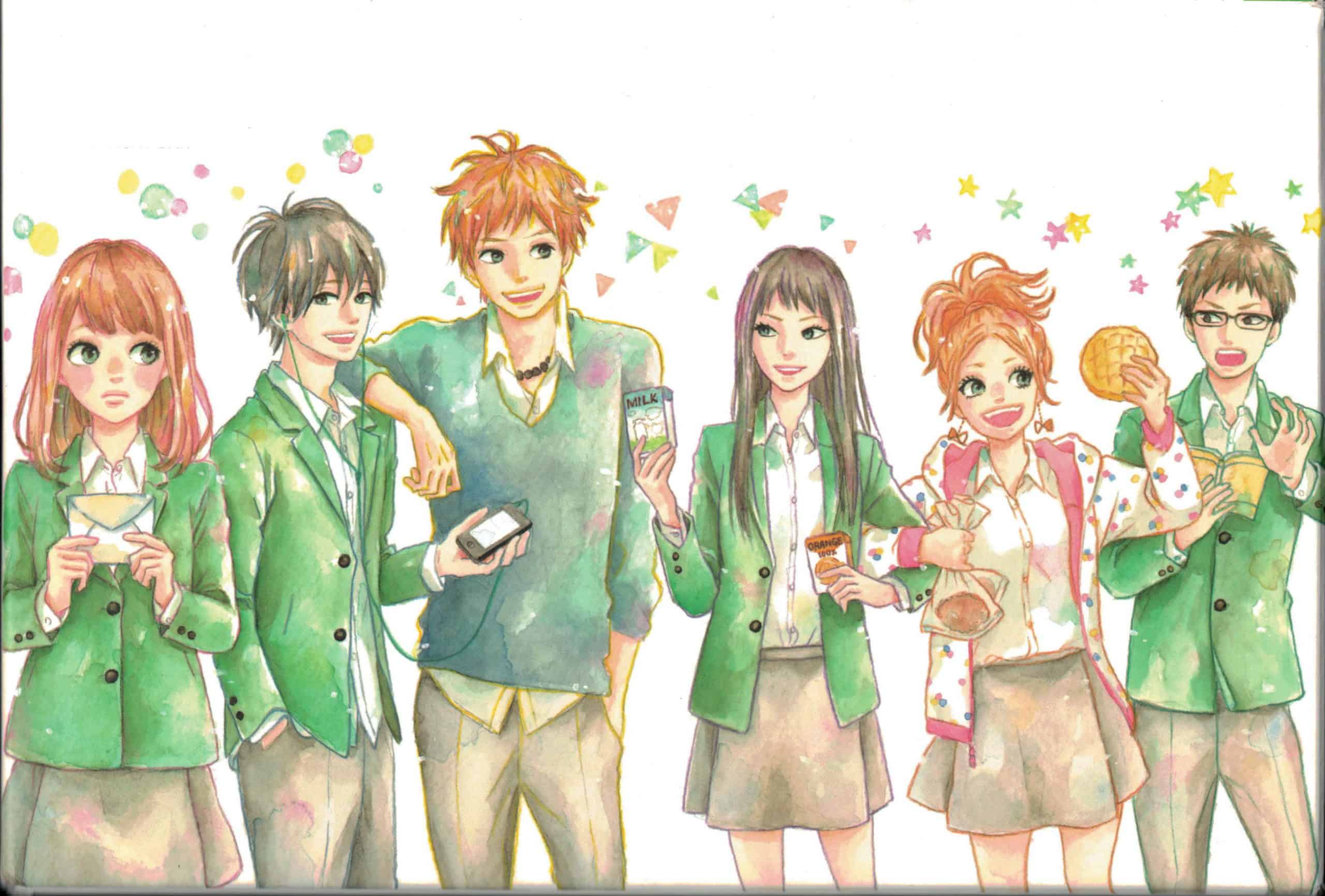
Fumigation reportedly created the English dub of the aforementioned anime for the Anime News Network. Jill Harris provided the English dub for Naho Takamiya, a Japanese high school student. Even though Naho was initially skeptical, she eventually decided to read the written communication from her future self.
Present-day Naho receives a letter from her future self-detailing the choices she now deeply regrets. Kakeru (Micah Solusod), a new student, is being closely monitored after a letter he received said he would be leaving shortly due to an “accident.” In retrospect, Kakeru’s death was clearly not a terrible accident. Kakeru was feeling sad and contemplated suicide. The people close to Naho now deeply regret not realizing Kakeru was in trouble and helping her out.
The characters develop as they learn to rely on and trust one another in positive ways throughout the series. The idea of other worlds and universes is developed further. The letters will have no effect on the future of their receivers since they were sent to people who were already dead at the time.
Also Read: 100 Thriller Anime Series To Watch On Netflix
75. Just Because!
One of the romantic comedies I was anticipating from the previous season was Just Because. One explanation is that it tried to depict the end of high school (between finals and graduation). Combining young relationship problems appeared to indicate that this may be an original series. There are already too many stories about high school relationships that last four years or more or that only take place between freshmen and sophomores.
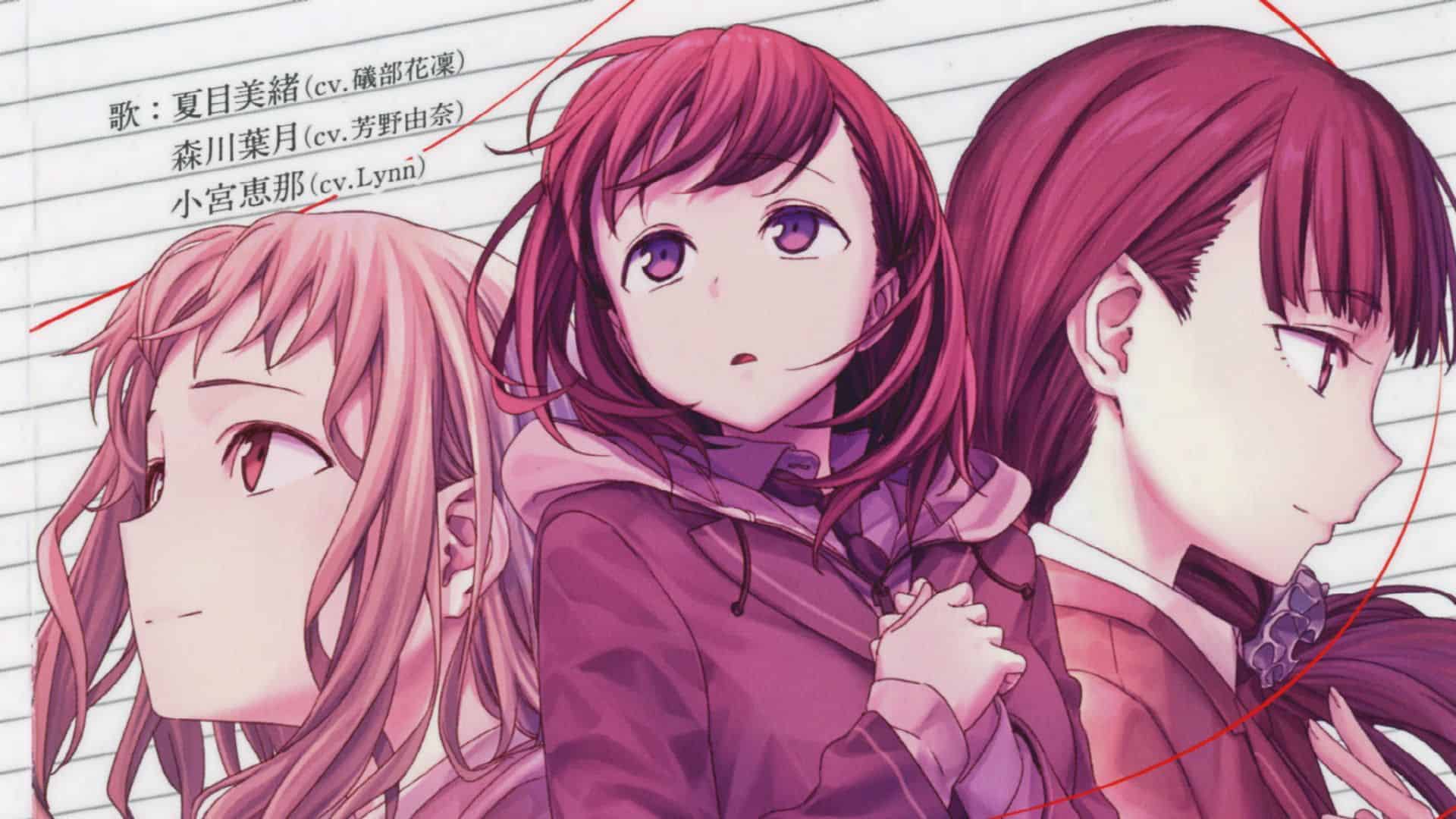
Even though finals and graduation are a part of it, that is not where the story starts. This time of transition adds tension to the story, strain on the characters, and uncertainty to their relationships. Despite the production problems, I found myself really enjoying the show’s exploration of normal life and romance.
The show’s production issues (delays, Twitter meltdowns, melting animation) didn’t stop me from enjoying Just Because however. Read this post from the Sakuga Blog if you’re curious about the manufacturing flaws. Simply said, Pine Jam didn’t have the means to pull off such an intricately orchestrated show.
Atsushi Kobayashi, the film’s director, aimed to have the characters’ routines be the film’s focal point. The studio’s small and rookie workforce now has more work on their hands, as they must pay even more attention to the smallest of movements and details.
Because of Kobayashi’s meticulous review of storyboards and key animations, the release of subsequent episodes was postponed. The resemblance with their former series, Gamers!, also led to outsourcing and problems with the animation in transitions between scenes.
Also Read: Top 10 Anime Supporting Characters that were Better than the Protagonist
76. Wotakoi: Love is Hard for Otaku
The protagonist, Momose Narumi, is a young man just beginning his career as an office worker. Narumi seems like any other girl, but she’s really a huge otaku and a fujoshi hidden beneath that pretty exterior. Narumi’s old friend and the one person who really understands her, Hirotaka, visits her at her new workplace. He is an avid player, but in contrast to her, he does not try to disguise his interest in video games.

After a long day of work, Hirotaka and Narumi decide to celebrate their reunion by going out for a drink and catching up on each other’s lives. Eventually, she spoke up about her tragic romantic history, detailing how her ex-boyfriend abandoned their relationship after learning she was a fujoshi.
Wotakoi is an uncomplicated tale of Narumi and Hirotaka’s comedic love affair, with no big conflicts or pointless drama. Despite the initial impression that the romance is rushed, the end result is a reach maturity. And solids love that leaves the reader with a sense of satisfaction. On the one hand, there’s the protagonist pair, Hirotaka and Narumi, who enjoy a sweet and endearing bond because of their many shared childhood memories.
Even with his blank expression, it’s easy to see how much Hirotaka likes her; together, they made me laugh out loud on more than one occasion. Koyanagi and Kamakura, on the other hand, are very volatile pairs. They have a love/hate dynamic despite the fact that they are surprisingly similar despite first appearances.
Also Read: Best Anime To Watch On Valentine’s Day: To Celebrate The Day of Love
77. Ao-chan Can’t Study!
Ao Horie’s father, the famed erotic author Hanasaki Horie, has been humiliating her ever since she was a little child. Ao is certain that if others find out about her father, they would automatically think that she also considers herself a pervert, so she sets out a goal to become an outstanding student in order to be transferred to a university distant from her dad. However, Ao’s plans are derailed in her freshman year of high school when she joins Takumi Kijima, a kid who won’t stop talking about her and disrupting her studies.

The show does not consider itself lightly and stays away from complicated love stories. The plot revolves around a hentai girl who was born that way and a good male who is just as naive as she is. The supporting cast, including the twisted father, is just as hilarious and endearing, and anybody familiar with classic anime like Rumiko Takahashi’s Ranma 1/2 (Ranma Nibun-no-Ichi) would immediately think of the panty-thief Happosai.
Ao-Chan Can’t Study! is an entertaining program with a memorable main character. It’s certain to make you laugh from the very first second till the very last, but at just thirteen minutes every episode, it seems a little too little. All we can do is wait for a new season to start.
Also Read: House of Five Leaves Anime Review
78. School Rumble
Tenma, a sophomore at his high school, has developed feelings for Kurasuma, the outcast of the student body. The only catch is that he is unaware of this, and Tenma is at a loss as to how to inform him. The fact that Harima, the school bully, has emotions for Tenma just makes matters worse.
The presumption is that since something is complex, it must be absurd and comical. There is no actual bloodshed or fatalities since all of the violence is meant to be comedic. Nonetheless, slapstick comedy abounds, so it’s not uncommon for characters to pull punches or even fly by way of the air.
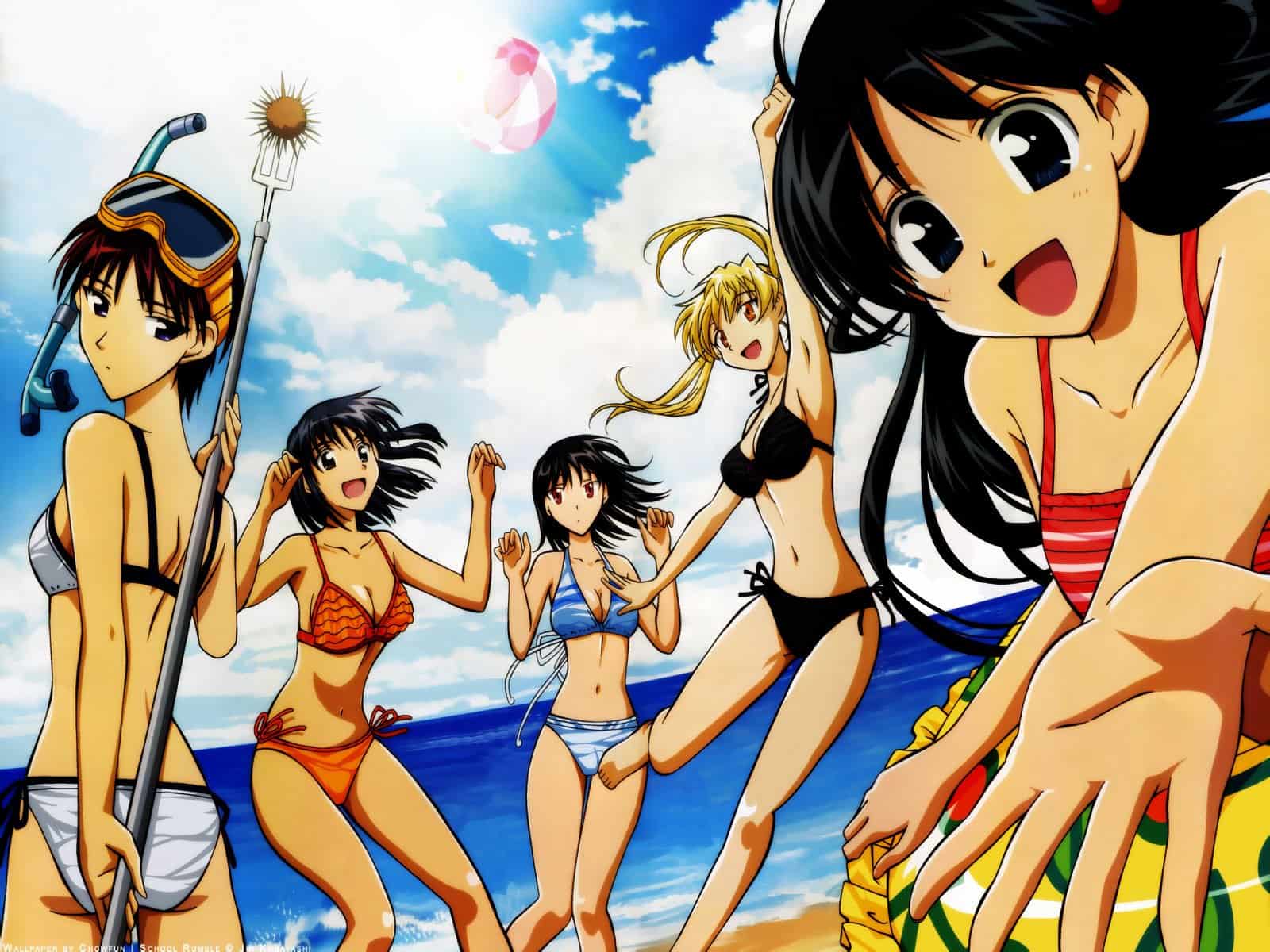
Those anticipating a more conventional love story may be let down by the film’s more light-hearted vibe. Romantic subplots take second place to the show’s primary emphasis on funny escapades. This show isn’t afraid to poke fun at the genre tropes that it and its own ridiculous plot rely on. There are, however, a few unfamiliar faces in the audience.
Although certain episodes may humorously imply otherwise, there is no actual nudity in this show. Nothing revealing is revealed when a character gets caught on while naked in one episode. Many gags revolve around standard units of measuring. Again, nothing too racy is ever spoken, but they are hardly G-rated jokes.
The innocent and cute feminine stereotypes are easily played by characters like Tenma, but subsequent episodes reveal that she and other characters also have less common but true attributes, such as prejudice and unreasonable resentment.
Although archetypes are welcome in School Rumble, the game is not restricted to them. Like cultural jokes about kappas, love letters that turn into crime-fighting adventures, and the occasional character insight? This comedy might be right up your alley. Don’t expect any fireworks in the bedroom anytime soon.
Also Read: 42 Anime Like Ouran High School Host Club
79. Tsuredure Children
This show exceeded my expectations, which was saying a lot. Half-episode shows are usually boring, pointless, and badly written; therefore, I don’t bother watching them. However, at least it was humorous. Wow, it reacted quickly to its opportunity for freedom.
Despite its short episode duration, the show’s appeal is in the intriguing tales it tells about several couples. Every show just lasts a few minutes, yet it’s jam-packed with information. While some stories center on the declaration of love, the majority of them focus on the aftereffects and growth of relationships rather than their infancy.
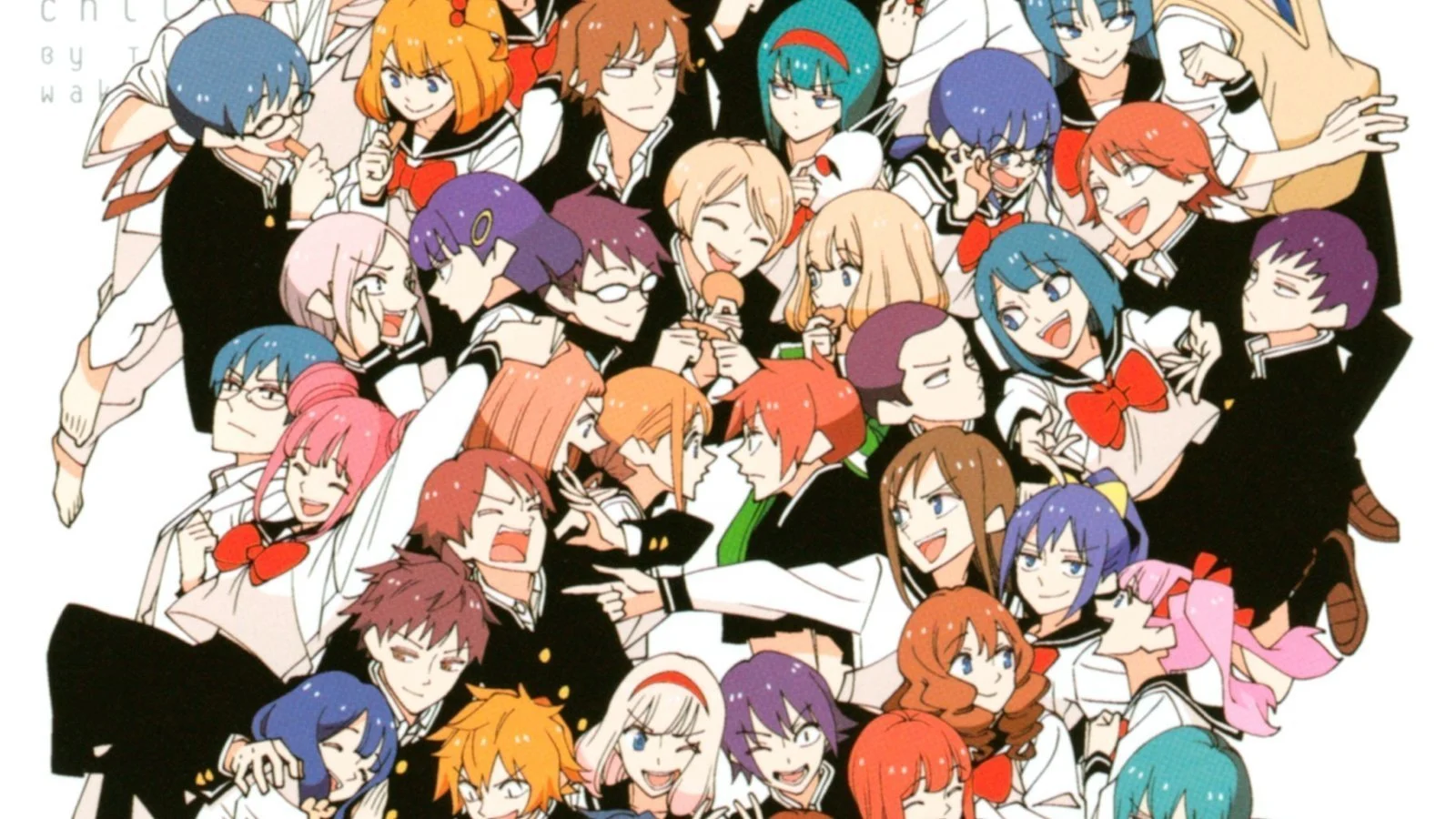
Equally surprising is the sheer variety of possible partnerships. Some couples are shy and reserved, while others are quite out and about with their sexuality. There is no abusive or toxic connection among these examples. One that seems suspicious at first turns out to be. Very safe?
It’s encouraging to know that mutual consent and self-control are possible even in the most passionate sexual partnerships. It’s nice to watch an anime not focused on romance for a change. Since the show’s visuals and soundtrack don’t stick with you (although some establishing shots are handled fairly tastefully), it relies heavily on its characters. And a sense of humor. The hilarity, you bet.
The couple interactions are the show’s feature, although the inclusion of a few “jokes” couples enhances the program significantly. The “dating master,” a particularly bizarre character, delivers nonstop hilarity. A nice change of pace from the lighter-than-air combinations that have been shown elsewhere. In conclusion, whether you’re in the mood for a light-hearted comedy or a wonderful romantic drama, this is a great show that needs at least another season or two.
Also Read: Top Rated Romance Manga That You Must Read
80. Lovely Complex
Despite her friends’ frequent assertions that the 172-centimeter-tall Risa might pass for a model, she has never had a partner and is very shy. Where Risa falls short is in her self-assurance as a “cute” person, but she more than makes up for it with her energy, drive, and character. As an audience member, I find her charming and motivational.
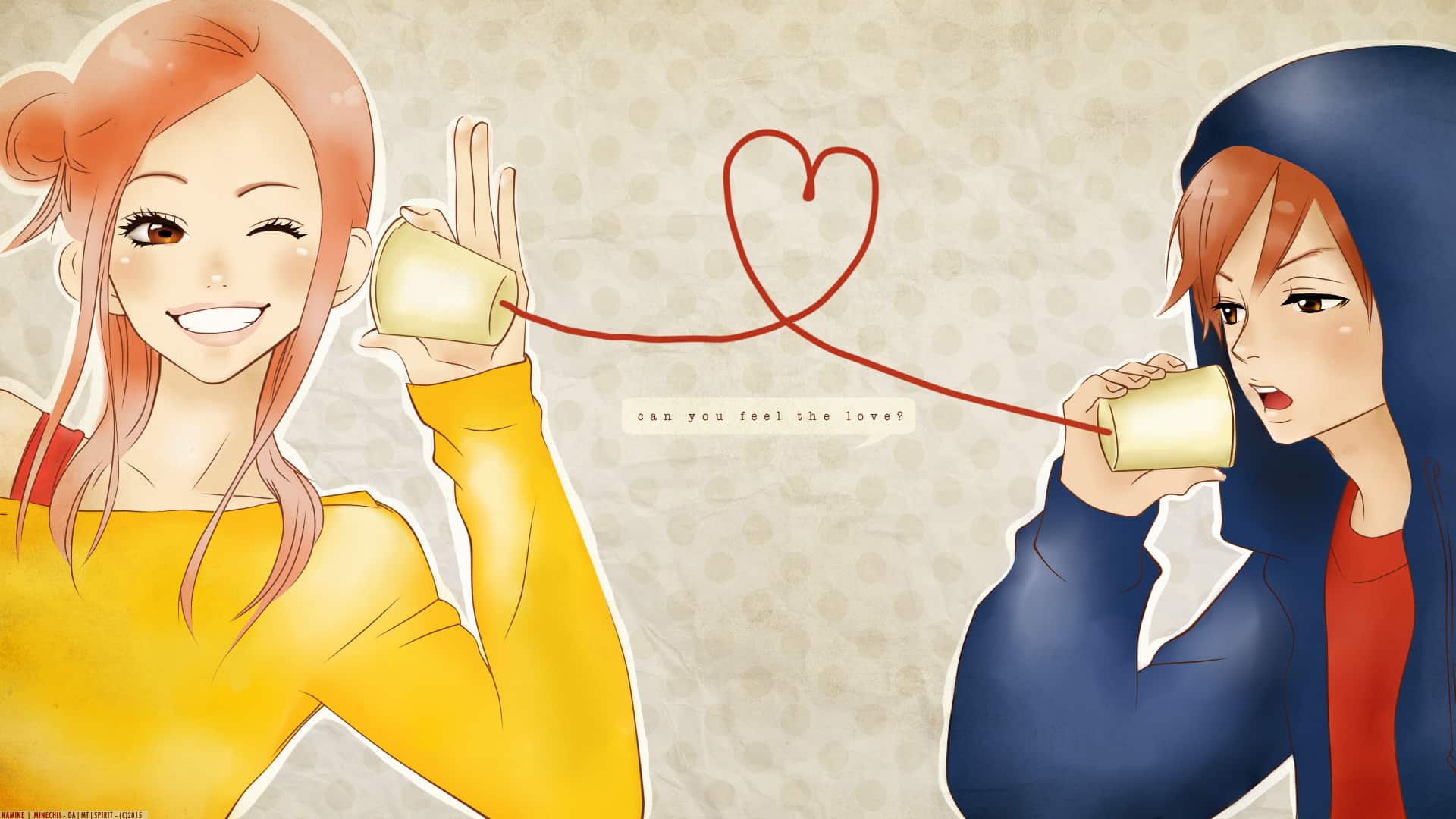
Risa is aware of her own rapidly expanding height, while Otani is incensed by his own deficiency. With a growth rate of only 2 millimeters each term, Otani is already much shorter than the typical Japanese guy. Despite this, Otani is on the same page as Risa when it comes to wanting to prove himself, and he puts in a lot of extra effort for his beloved basketball team.
Risa and Otani’s relationship develop organically over time thanks to their shared love of rickshaws, water slides, and, most of all, their hero Umibozu. However, theirs is one of those relationships that would be ideal if only one or both partners would quit being so stupid.
The funny thing is that their height difference isn’t even the biggest problem in their relationship (though it does come up from time to time). The biggest issue is that Otani can be so dense that he doesn’t even realize he’s being acknowledged, so clueless that he doesn’t realize that Risa loves him, and so stereotypically a teenage boy that he has no idea the manner in which to deal with it all.
Otani may be quite thick at times, but he has a soft spot for Risa, and he is always unwittingly doing things that strengthen their relationship, such as encouraging her, showing her fireworks, and telling her and her that she has her “own charm.”
Also Read: Blood of Zeus Anime Review
81. Recovery of an MMO Junkie
Let’s start with the story’s prologue. Here we have Morioka Moriko, an outstanding NEET who has opted to spend her time entirely in the online realm rather than in a traditional school. She used to be a professional but has decided to spend her thirties as a full-time non-working, non-married, non-parent. She adopts the male avatar Hayashi and pairs him with his female counterpart, Lily. They eventually become partners, and Morioka gets some new cyber friends, but things take an unexpected turn from there.
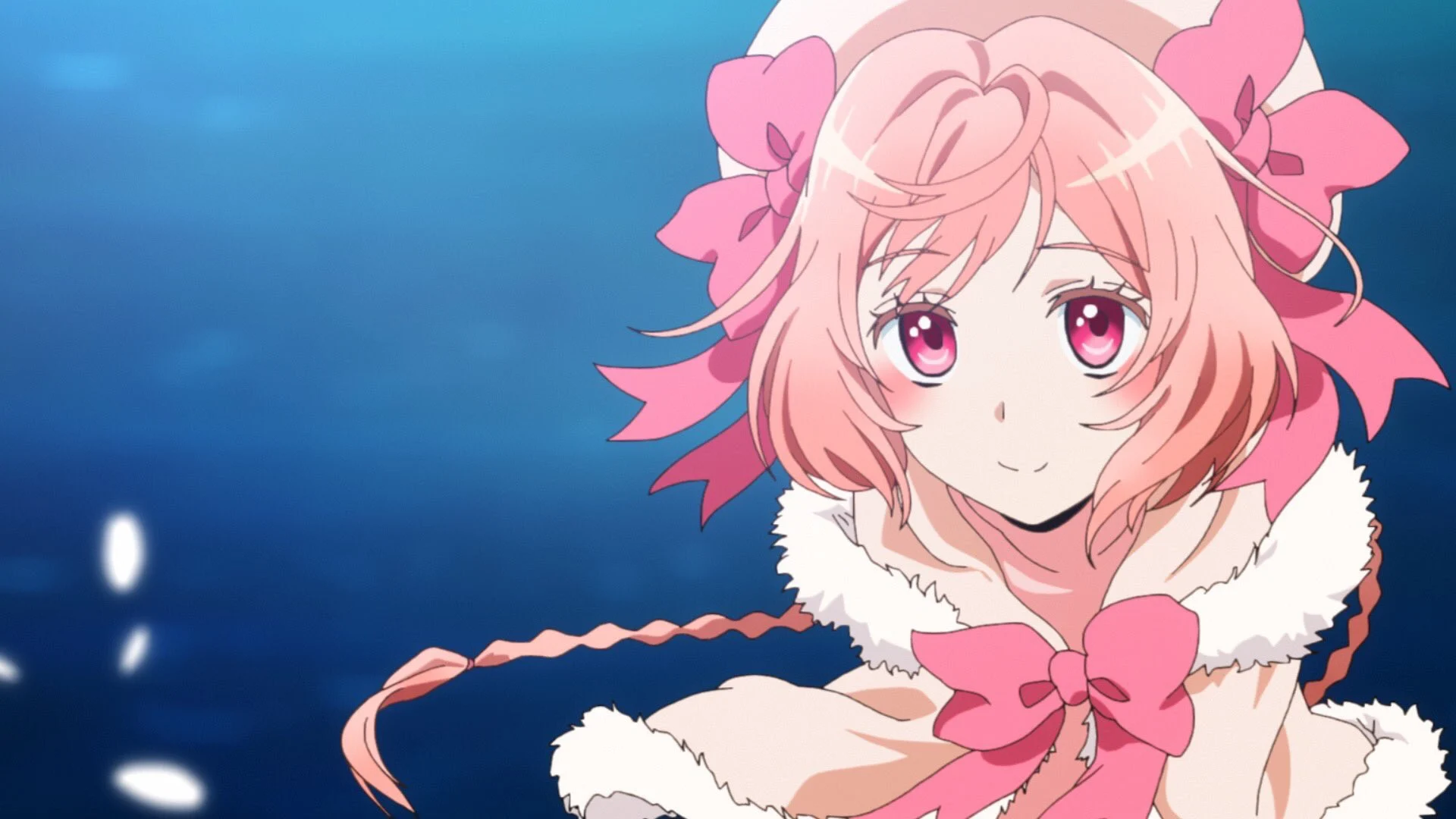
The anime is, as I mentioned in the post’s introduction, a breath of new air. Female leads almost seldom play non-working adults. An already intriguing plot is made much more so by having to contend that she is passing herself off as a male online. A lady in her thirties, she is a woman. The series follows an elderly person and presents the surroundings from their perspective. In all honesty, as an adult, I found myself really relating to Morioka Moriko.
The biggest disappointment for the MMORPG player is that Yuta is really Harth. How many chances does one person have in a lifetime? It made perfect sense to swap Lily for Yuta and Hayashi for Morioka. There is room for one coincidence.
While it’s true that serendipity can be fascinating, MMO Junkie goes too far by implying that everyone Yuta befriends online is actually Morioka. If Yuki had been someone else, the story and Yuta’s personality might have used a shakeup. To make things worse, Kanbe is the supermarket guy. Unfortunately for our author, the internet is intended to be vast and chaotic.
Also Read: 44 Anime like The Ice Guy and His Cool Female Colleague
82. Karakai Jouzu no Takagi-san 2
Nishikata keeps trying to find a way to trick Takagi by getting her into all kinds of competitions, but she always loses. But as time goes on, the time they spend in these competitions starts to add up, and the relationship starts to change in very clear ways.
Karakai Jouzu no Takagi-san’s second season is very similar to the first, but it’s also different where it matters. The problem I had with the first season was the reality that it was too similar. It felt like they kept showing the same kind of comedy over and over again, with nothing else to break it up.
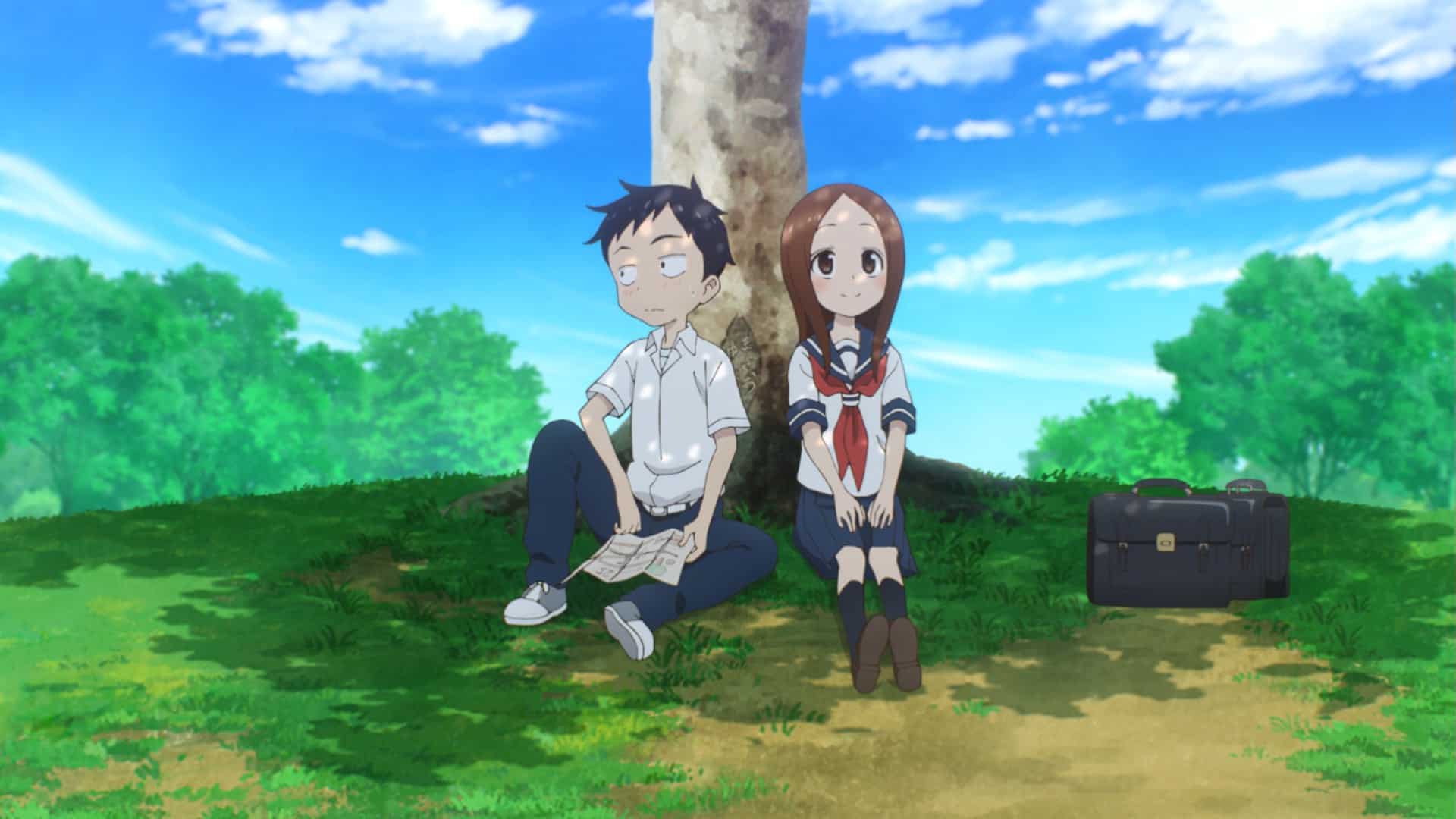
The main plot of that comedy was about a boy who tried his best not just to get tormented by a girl, but the girl always won. Even though this was good, it seemed like there was a great deal of it and nothing else. The current campaign is a lot consisting of the first in that most of the funny things are the same. But there also seems to be a great deal of good action in this season.
In that way, the first season didn’t work for me, but during this period of time, I felt consisting of the two characters had a lot of additional puppy-love energy, and the connection actually got stronger as the season went on. This makes the entertainment significantly simpler to enjoy because it goes faster.
It additionally causes the random times they experience together to feel more important because it’s clear that they’re all going somewhere, and it feels like it’s worth caring about these people. Even though the jokes are the same as in the first season, which makes them a little old, everything else about this season makes it feel like a big step up from the first.
The graphics and art are good enough. Both the sound and the look of the OP are good. There are a lot of EDs, and many of them are just fine. However, the later ones use both audio and visual throwbacks, which work really well. During some important parts of the last show, the music worked really well, but for the vast majority of part, it wasn’t all that memorable.
Also Read: Anime Characters Voiced by Yūki Kaji
83. Kiss Him, Not Me (Watashi ga Motete Dousunda)
It’s about a high school sophomore named Kae Serinuma who loves to fujoshi. He has a secret crush on a guy in his class. She is not pretty of how she looks. But after the tragic passing of her favorite comic character, it lost a lot of weight. The magic starts to happen! The boys at her school started to like how she looked. Now, Igarashi Yuusuke, Nanashima Nozomu, Shinomiya Hayato, and Mutsumi-senpai are all trying to get her attention. The group also includes a pretty girl dubbed Nishina Shima.

This is Nishina’s chance to tell Serinuma how much she loves him, which means she does all of that right. She saves a whole boat and a trip on an airplane and dresses for a “proper” date. She’s dressed to look good. Then there are Yaoi pairs. She was almost saying something sweet, but it came out as Yaoi. I can say that fujoshi society has gay themes many times over, but it won’t change the fact that acting and thinking male-on-male sexual interaction is not the same as real-life sexual contact.
Nishina was a gay fujoshi, which made her the closest person to Serinuma right away. She tried to employ this fujoshi link to get Serinuma into a relationship. But given that moment, Serinuma has always put more emphasis on their connection as fellow fujoshi than on their love interest, and Nishina soon found that being Serinuma’s partner was enough for her.
Nana and Shinomiya are both interested in romance. Most of what they do, even if it’s not as cool as Igarashi’s moves, is meant to make Nishina fall in love with them. Nana makes this impact because of his charm and the decisions he makes based on the situation. Shinomiya, on the other hand, succeeds because of his cute inability to man up to the situation.
Also Read: Perfect Blue is A Masterpiece – Anime Review
84. Yona of the Dawn (Akatsuki no Yona)
If you look at how this anime is put together, you’ll know it’s a shounen. Adding the characters’ genders makes it seem like this anime is trying to break down both Shoujo and Shounen in order to make a big point about anime, sexuality, and who it’s for. If you watch it, you’ll see that it’s just a simple story concerning getting plot coupons in the form of good-looking guys who are all interesting people. It’s strange that Yona chose to make a simple exploration story, whereas she could have done a lot more.
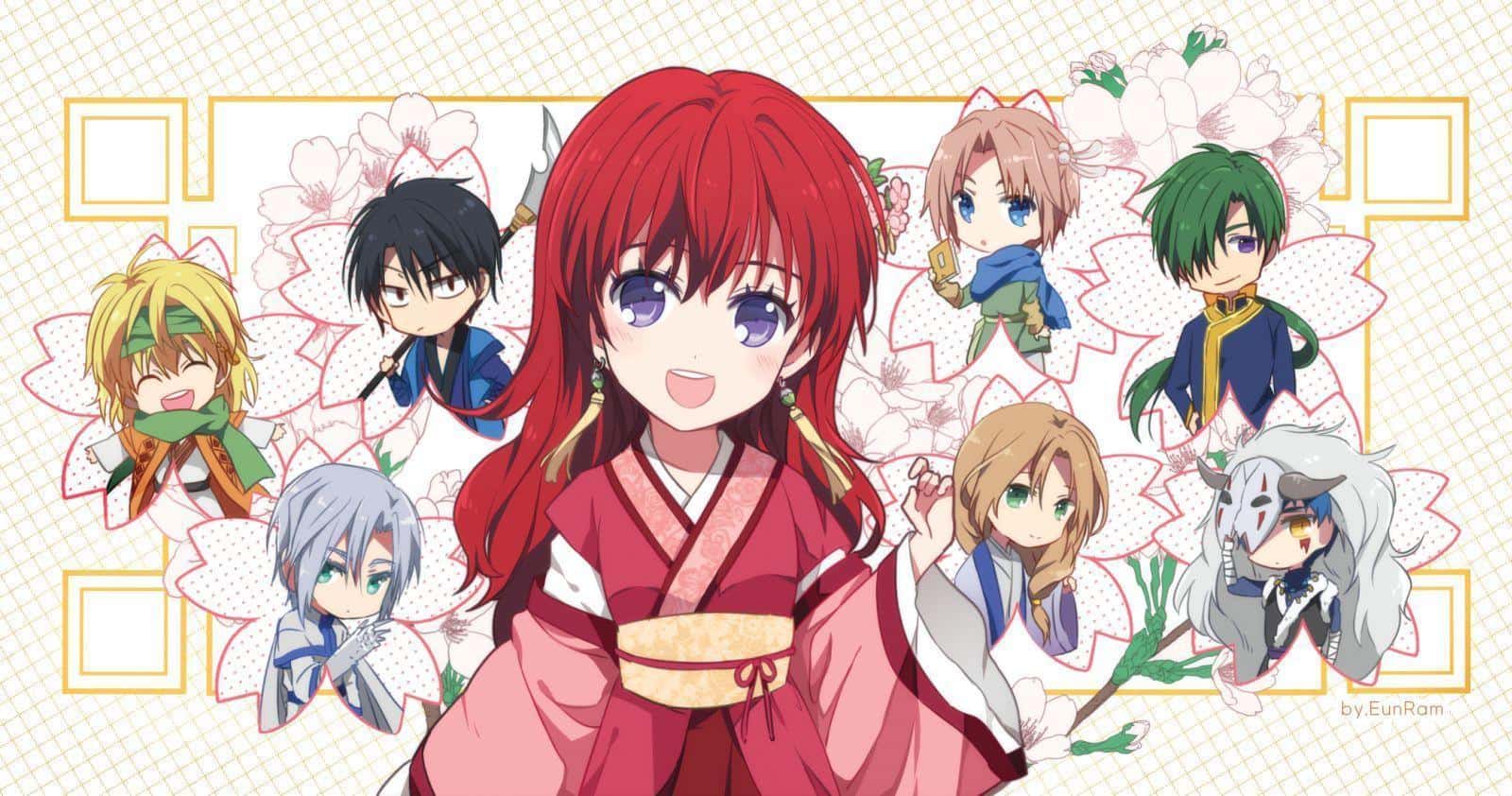
(Credits: Pierrot)
It’s not bad; it’s just weird. Most cartoons or storylines in general that just want to be easy and interesting have low goals. They want to have some fun, have some crazy ideas and fights, have some dramatic goal statements, and end with a big blast. Yona has everything it needs to make this recipe into something more serious, but it just tells simple stories. At least it makes sense. Yona is a great example of a story about an exciting journey.
The initial task that a speaker has to do is to figure out what the story is about. This meaning doesn’t need to be dug into with all of its intellectual levels and connections to dead white European men. Instead, this meaning will give us a reason to care about what’s happening. Things always matter to us due to the fact that mean something, even if it’s nothing.
Yona begins with emotional hooks that she never lets go of. A typical mistake is to turn your trip into a series of problems you have to solve by being smart and cool. Yona, on the other hand, has a theme that runs through all of these steps. What’s most popular is a certain kind of coming-of-age story. It’s not simply about acquiring what is happening outside but also about understanding the separation of the environment that you inhabit from the world.
Also Read: Akatsuki no Yona Anime Review
85. Doukyuusei (Classmates)
The classmate and future girlfriend, Rihito Sajou, are now on his mind. Establishing the way he moves his fingers in a single scene and then his motionless body in a full frame, we see that he is completely preoccupied with his own thoughts as the band plays on him. Doukyuusei’s rare instances of paneling are usually utilized to show extreme emotion or highlight one character’s sentiments. It made me think of the currently airing TV show Scum’s Wish, which also heavily employs paneling in its design.
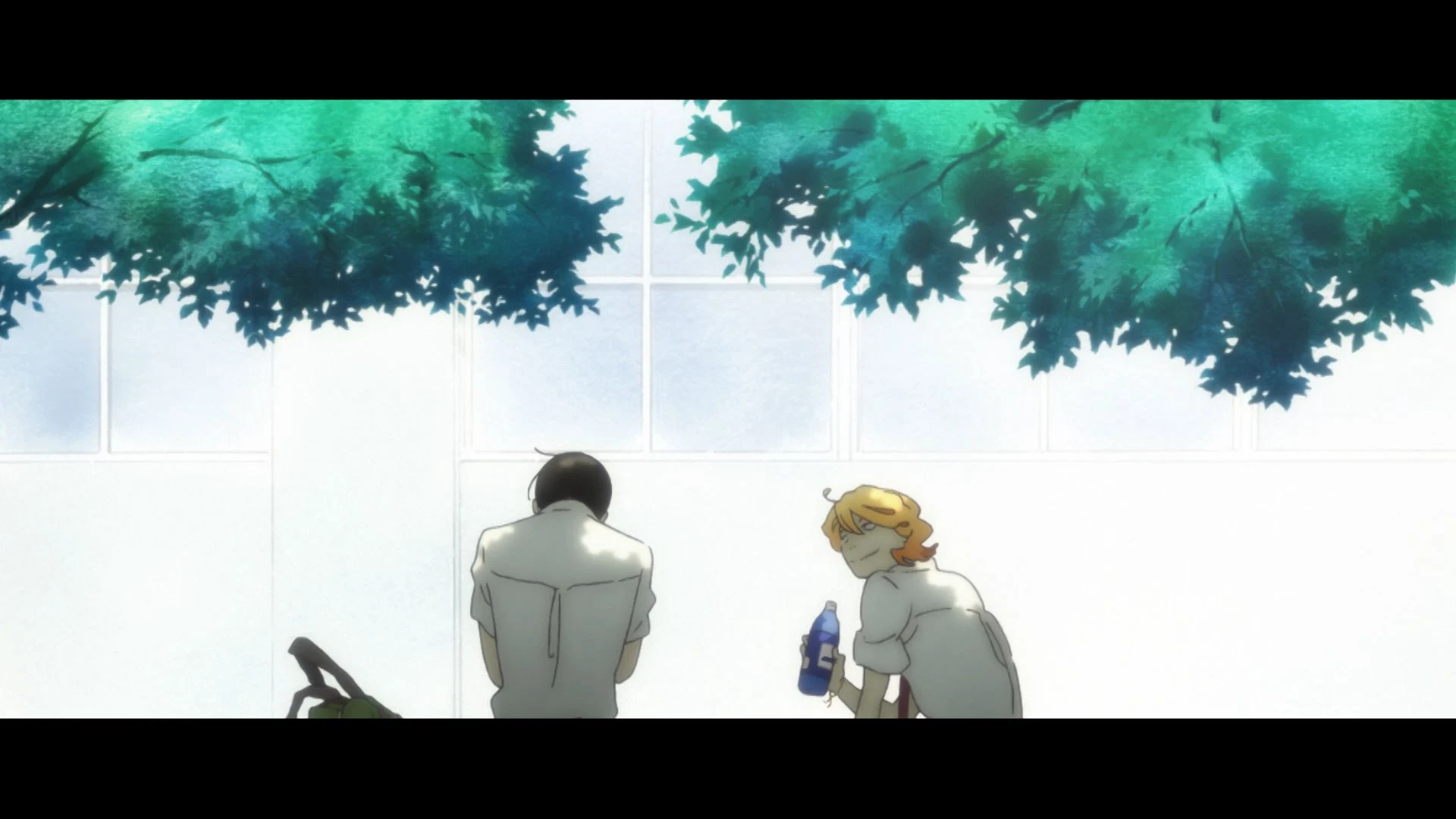
Anime’s connection to manga and drawing cartoons, which also use paneling to convey movement and emotion, means that the technique is nothing new in the medium. I was first exposed to the usage of panels in anime by Masaaki Yuasa’s Ping Pong: The Animation. Panels are a great method to emphasize feelings or add new, physical aspects to a scene while ostensibly reducing production costs.
The paneling in Ping Pong works well to heighten the mood of a scene, highlight action, and offer context via wide views, close-ups, and audience responses. The latter method combines real-time events with flashbacks or recollections. Panels, particularly those depicting Yutaka “Peco” Hoshino’s tearful narration, include some of the series’ most moving moments.
As an added bonus, this makes the reader more aware of the action taking on inside a single panel. You can’t take your eyes off the action in Ping Pong because the animation literally stops and then restarts inside the confines of a panel. In certain cases, this method is superior to animating a whole expensive-stakes ping pong tournament on the ones when it comes to communicating motion.
Also Read: 10 Anime Like Given That You Shouldn’t Miss
86. Bloom Into You (Yagate Kimi ni Naru)
Koito Yuu, her freshman year high school student, is the protagonist of the manga Yagate Kimi ni Naru. She hasn’t had a serious romantic relationship yet, but her story isn’t about a hopeless romantic on the verge of making her high school debut. In the first chapter, we discover that she gets a confession from a guy she had always admired upon graduating from middle school, but she is unaffected by his affection for her. Now that she can’t seem to find romantic success, she begins to question if she’s really flawed. She rapidly realizes that she can’t hold any one person in “special” status.

Fortunately, she runs upon someone who seems to have the same issue she does: Nanami Touko, an upperclassman. You may think of Nanami-senpai as the prototypical manga teenage idol. Her beauty, intelligence, leadership, and popularity helped her to advance to the position of student council president, even though she was only in her second year. It’s not too shocking, however, to learn that a tormented girl with a traumatic past lies underneath this flawless exterior. She says she has never been thrilled by a confession either.
Regardless of having not previously fallen in affection before, Nanami-senpai determines her feelings for Yuu just one day after meeting her, and as time goes on, her emotions only seem to develop, the while Yuu’s feelings remain ambivalent at best.
Also Read: Black Lagoon Anime Review
87. Tamako Love Story
I have mixed feelings about the show Tamako Market. On the one hand, it’s a visual treat for the eyes, with plenty of subtle character movement and cartoon shenanigans provided by the dapper bird Dera. The show’s virtues, however, sometimes collide with its more humorous components, leading to some clear tonal flaws. While I count Naoko Yamada among my favorite filmmakers, I think we can all agree that she excels at the quiet slice of life rather than physical humor.
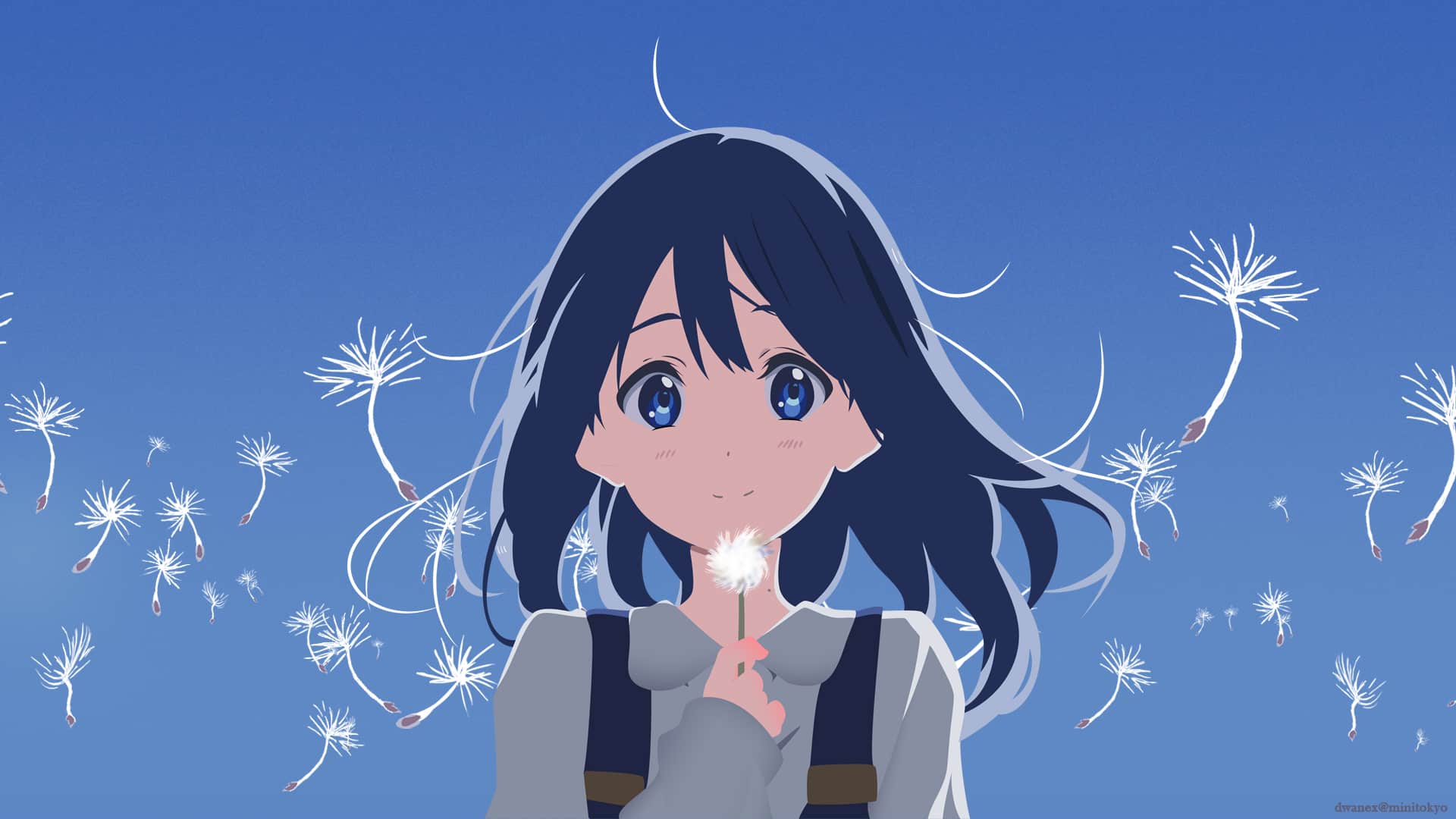
Dera is a major detractor from the show. His intention was to give the program some forward motion, but instead, he ruined the relaxed and laid-back vibe of the series by having multiple episodes based on jokes that fell flat. When Midori operates under the grey sky, evoking her repressed emotions, Tamako Market is at its most successful.
This scene transitions from the Usagiyama paper coffee shop with seamless music. When the show seems pressured to stick to the primary narrative, as when they spent a full episode on Dera’s failed diet, that’s when it’s at its worst.
The plot of Tamako Love Story is really straightforward. When viewed objectively, the film’s character arcs and story beats are not very novel. It follows two childhood friends as they finally admit their feelings for one another, complete with the cliched angst, miscommunication, and climactic train scenes of every teenage 4ryear’s romance. This is all irrelevant, though, since the film’s execution is flawless, capturing the subtle beauty in the everyday.
Also Read: 35 Anime Movies Like Howl’s Moving Castle You Need to Watch
88. Tonikawa: Over the Moon for You
Ginga bought Nasa and Tsukasa everyday tickets to Muffy Land, and Tsukasa is determined to make the most of his time there. Tsukasa hoped his return to the park would live up to his memories from when he was younger. When the day of their getaway is rained out, Tsukasa sees a silver lining in the form of cute raincoats.
Tsukasa seems to be having a fantastic time at the park, and it’s all because of Nasa’s efforts; the haunted house and the Star Wars-themed attractions are just up her alley, and she’s seen every episode, of course.

Yanagi, however, is unaware of this and assumes that Taniguchi is only being kind to her since she doesn’t go out much. In this mini-rom-com inside the show, Tsukasa and Nasa form a terrific commentary team for a soccer game. Taking Taniguchi’s hand before they embark on the terrifying ride is the first “goal” that Yanagi scores.
Also, thanks to Tsukasa, Nasa realizes that he may not be as sharp as he had previously believed. Taniguchi has an opening to tell Yanagi the truth about why he took her to a site where others go on dates as well as get married, but a senior in high school in the same scenario already had a conversation with his date.
He declares his attraction to her, she proposes a date, he accepts, and Bob’s your uncle! Despite Taniguchi’s shame, he reports that Yanagi deemed the conversation interesting. Taniguchi proposes that go have some lunch since, despite missing the target on this attempt, possibilities abound in a theme park.
When Tsukasa and Nasa go to a buffet together, Tsukasa turns it into a love competition by having them each build a plate of the other’s favorite dishes. Tsukasa gets it right away and seems to know by telepathy that Nasa most likely placed the curry close to the cookies. This cute game is a tie, and they both win!
Also Read: Tonikawa: Over The Moon For You OVA 2: Release Date & Teaser
89. Ride Your Wave (Kimi to, Nami ni Noretara)
Hinako Mukaimizu is a free spirit who surfs for fun and goes to school in a seaside city without giving any thought to her future. Accidental pyrotechnics set fire to her apartment building, but a heroic fireman called Minato Hinageshi comes to her rescue. The two become fast friends after the meeting; Hinako is taken by Minato’s dependability and desire to help people, while Minato is interested in surfing and wants to learn more about it. Hinako and Minato start a sweet, dedicated relationship as she teaches him the basics of surfing.

Riding may seem like a carefree sport, but it really presents risks and uncertainties. What Hinako discovers after a surfing accident upends her life and forces her to think about her uncertain future. Hinako sets off on a quest of self-discovery, accompanied by Minato, in an effort to find her individual calling and ride her own wave.
At first, the narrative seems straightforward, and the pacing seems about right for a slice-of-life anime. When events began to unfold, however, things took an intriguing turn. There are various vantage points from which to see the protagonists’ development, struggle, and repercussions on those closest to them because of the authentic manner in which they are written. Nothing crucial was left out, and I was given all the information I needed to understand what was going on. Despite being somewhat expected, the ending successfully wraps up the story.
Also Read: Aggretsuko/Aggressive Retsuko Anime Review
90. Beck: Mongolian Chop Squad
The opening scene shows that this is the beginning of a new series. Characters represent the distinctive art style. Hori Hotonobu and Kobayashi Osamu, who was inspired by the manga, made it more contemporary and entertaining. We have real-world-looking people with different sizes, clothing, and hairstyles. They should be commended for their instrument-perfecting efforts. Gibsons and Fenders are easily identifiable. This anime’s rock diversity is impressive.

This series has a wider variety of songs than Full Moon wa Sagashite. Thus, listeners are less likely to become tired of any one song. The line-up of the Beat Crusaders standout out among the great bands in the program. Fan favorites appear in the finale. No names, obviously. Event speed may be criticized. Although the fact that Beck is not an action picture, it often seems like nothing is occurring.
The characters aren’t always clear. The narrative concentrates primarily on a couple’s interaction that gets discarded out of nowhere and leaves the reader to wonder why. Studio Madhouse ran sick of time or capital and had to end their series with a bunch of stills, which was a surprise to me. Though well-executed, the solution seems cheap.
Beck time is rewarding. Finally, a storyline that uses popular music without losing character depth. Music lovers who don’t enjoy musicals may stop searching. This anime prioritizes loud music and microphone feedback above ballroom dancing and tap shoes.
Also Read: Best Anime To Watch If You Are A Music Lover
91. Chihayafuru
When I initially read the summary and saw the cover art for Chihayafuru, I was immediately suspicious. I assumed I wouldn’t make it through the first episode since I don’t like card game-related or sports-related anime. However, labeling Chihayafuru as merely a “card game anime” is doing it an injustice. Both Chihayafuru and Karuta are more than just a deck of cards. In reality, “poetry in motion” is the most apt metaphor for describing both of these phenomena.
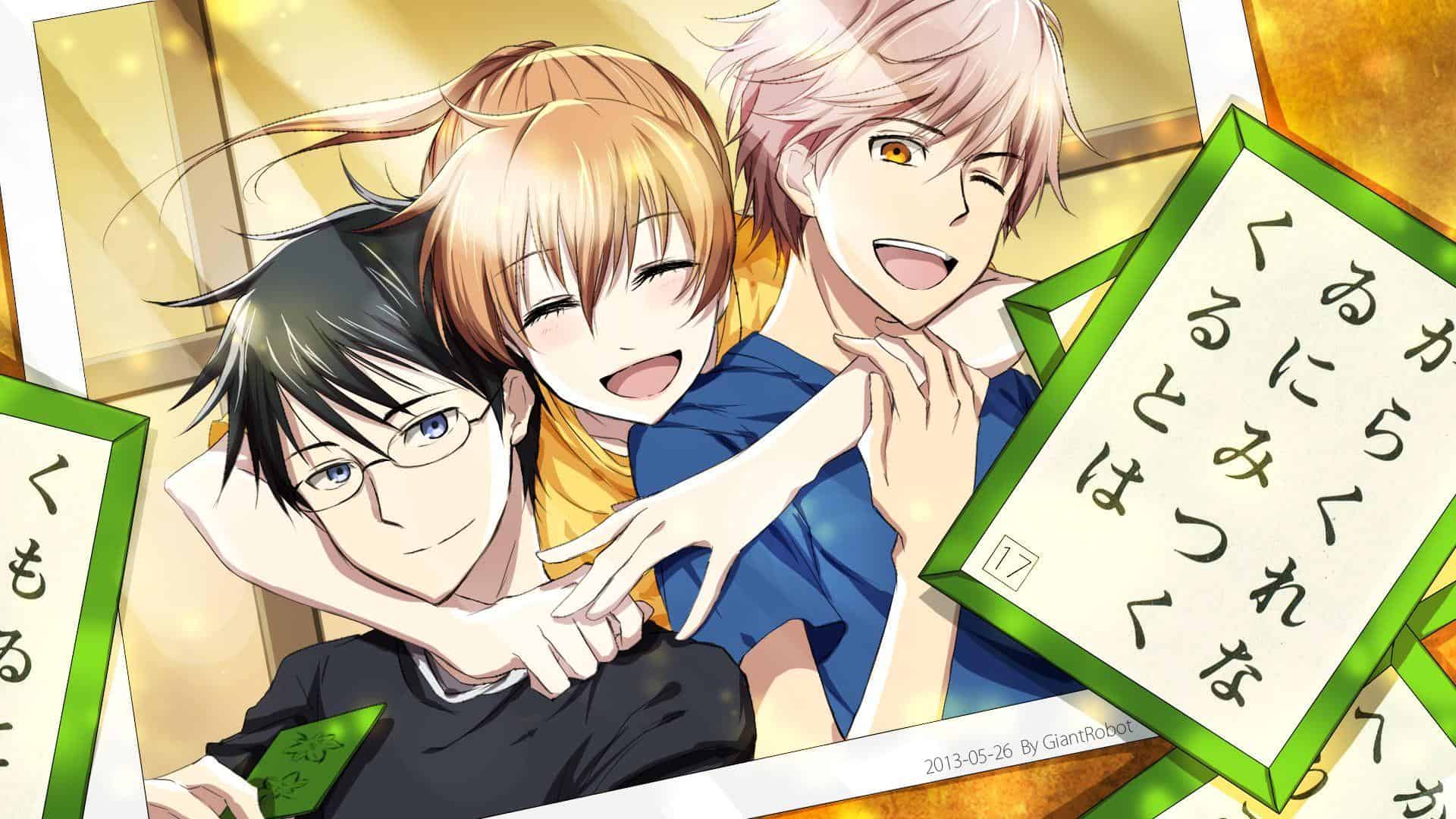
The second episode explains that Karuta is a classic Japanese card game based on the works of the Ogura 100 Poets. In competitive Karuta, a portion of a poem is read aloud, and points are awarded to the player who identifies the missing card and finds it (or targets it) first. It calls on exceptional memory, hearing, reflexes, and a host of other skills I can’t even begin to list here (but trust me, you’ll be blown away as soon as you see it in action).
If you just heard about this anime, you would never guess how stunning it is. The game of Karuta serves as a backdrop for a tale of kids trying to make it through high school while also forming a team, learning about themselves, and pursuing their goals. Chihayafuru’s strength is that the tale is conveyed via the characters themselves, their feelings, relationships, and development rather than through contests. The core of Chihayafuru is a narrative about camaraderie, loneliness, and ambition set against the setting of the card game Karuta.
Also Read: Chihayafuru Manga Heading Towards End
92. Inu x Boku SS
Spring’s unheralded gem this year is the Inu X Boku SS. There was a lot of great spring anime, but it would be easy to overlook a few lesser-known titles that ended up being far more impressive than you thought. A case in point of the former is the Inu x Boku. Shirakiin Ririchiyo is a female we get to know in the anime, and despite her apparent confidence, she really has an additional reserved and frightened temperament. From a young age, she had been subjected to the strict upbringing common to magical families.

A search for independence led her to the house known as “Ayakashi Kan,” which serves as the gathering place for the supernatural society. Each resident is accompanied by a member of the S.S.; she is accompanied by a youkai known as Miketsukami Soushi, a nine-tailed fox. Their responses to the pressures and difficulties of everyday living are the primary focus of the story. When I saw this show in the Springtime anime list, I was completely baffled. I thought it would make for a shounen action anime like the one based on the Japanese mystical folklore in Nurarihyon no Mago.
However, I was hesitant to believe what I believed because the anime has shoujo-esque creates and doesn’t seem to look like shounen at all, despite being essentially branded as “shounen.” Exactly what does this mean? There was apparently just one way to discover the answer.
Also Read: Mr. Compress Facts That Every MHA Fan Should Know!
93. Kare Kano (His and Her Circumstances)
Although there are numerous plot points and characters in Kare Kano, the series’ central premise can be summed up in a single sentence: Kare Kano is about Miyazawa Yukino and the individuals whom she encounters during her time in high school. In this show, the characters are what make the show what it is. Lots of interesting things happen to the characters. Every resident of Kare Kano experiences quick and continuous personal development.
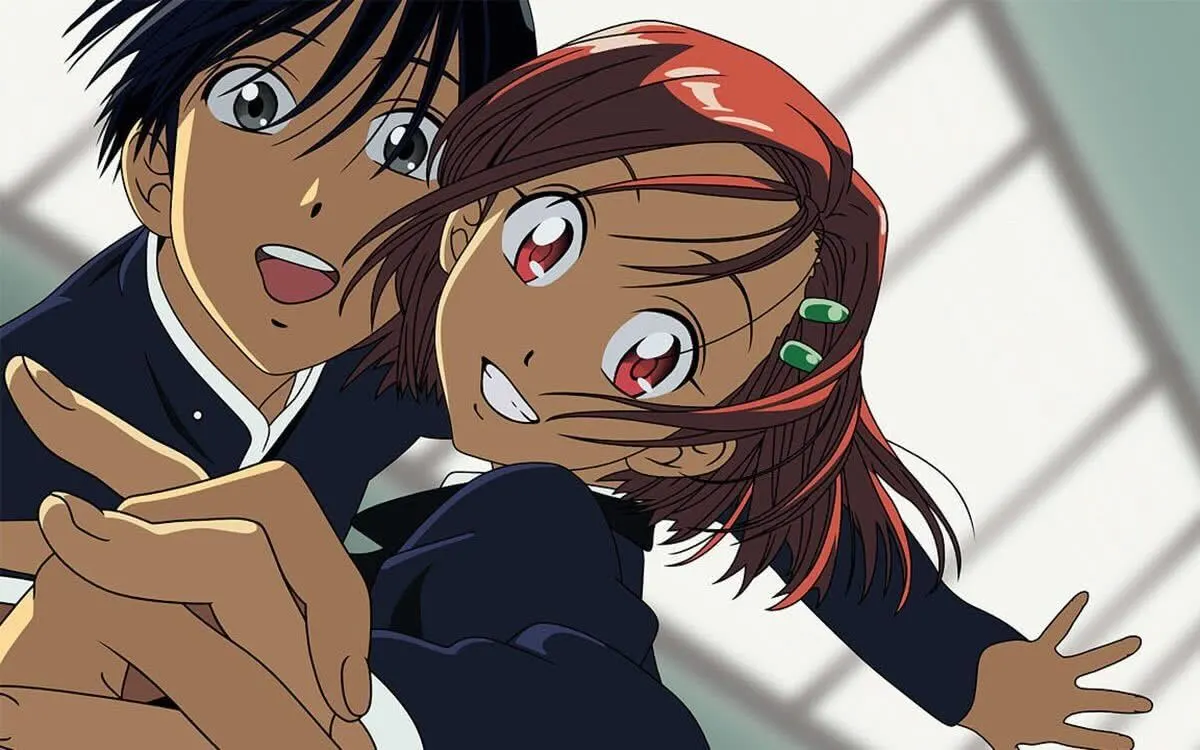
Their stories are rich in detail, and they all deal with situations that just about everyone can relate to, like falling in love, making friends, fighting with friends, dealing with family, or having issues with teachers. As a consequence, viewers will feel as close to the characters as if they were actual members of their own families.
Kare Kano’s most striking quality is perhaps the ground-breaking visual method it used at its first release. Constant use is made of surreal cartoons, chibi illustrations, and on-screen captions to accentuate sentiments and ideas and portray the characters’ multifaceted personalities. Sometimes the anime may fill one character with color while leaving the others without any shading or emotion on their faces.
There are other uses for a number of dreamlike sound effects. Using this method, even the typically dull scenes of in-depth character analysis become compelling to watch in the anime. The characters will often have internal monologues or may address the audience directly as if they were keeping a journal or having a conversation. The ties between the fictional individuals and the audience are skillfully forged using this method.
Also Read: Great Pretender Anime Review
94. Princess Jellyfish
Tsukimi, the protagonist of Princess Jellyfish, is a young lady. Tsukimi, who has been fixated on jellyfish since she was young, leads a quiet, man-free life with a group of equally odd ladies, the Amars, until one night, following a campaign to save an unusual jellyfish, she meets Kuranosuke. After seeing Kuranosuke’s outstanding drag performance, Tsukimi is shocked to learn that he is, in fact, a prince and not a princess.
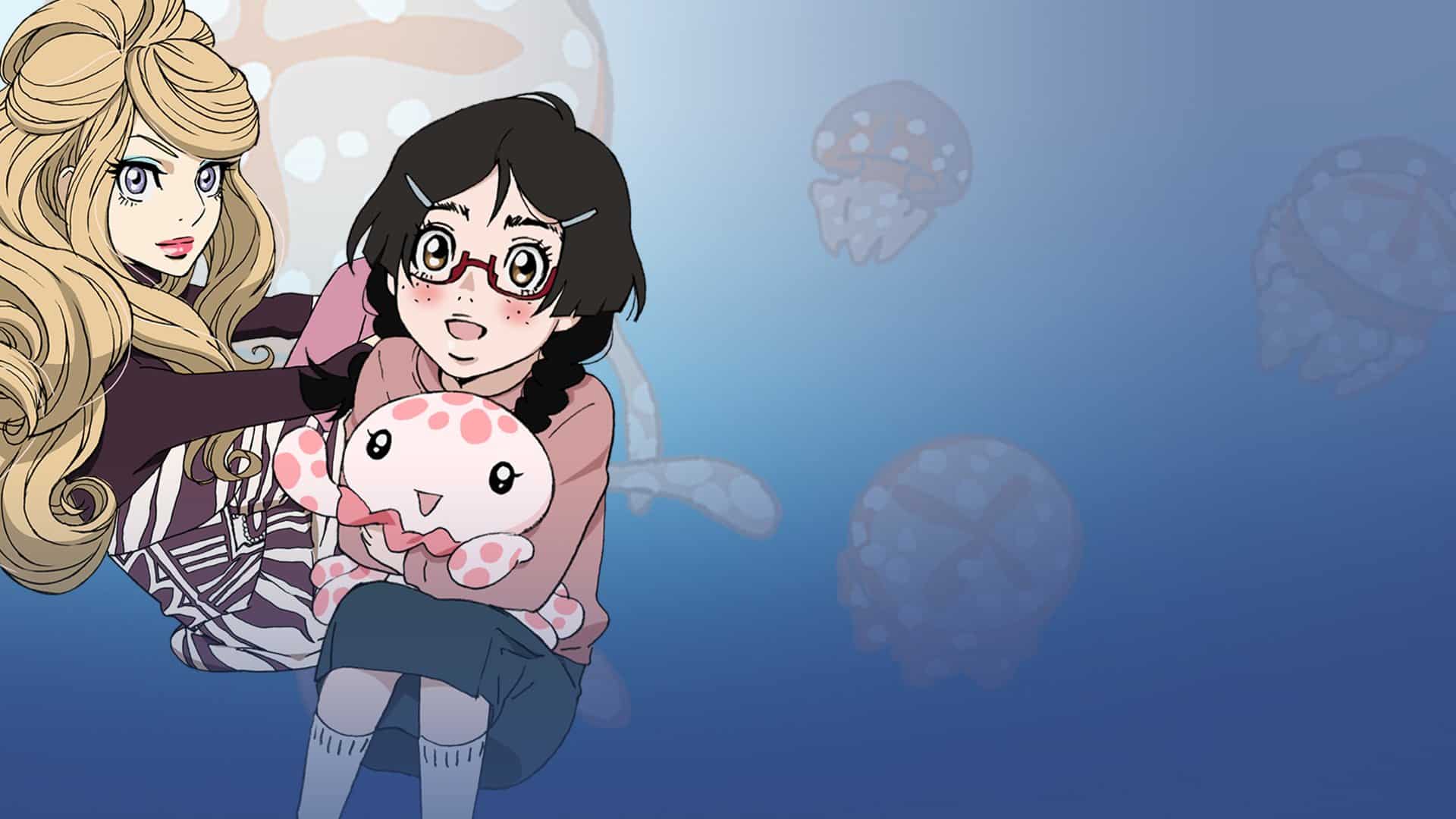
The two characters have an improbable bond from this point on. Tsukimi helps Kuranosuke become more outgoing, and Kuranosuke learns to appreciate Tsukimi’s sense of style when they work together to protect the Amars’ home from a pack of hungry land sharks. For more clarification, please refer to the MAL. Despite the fantastical premise, the lessons Princess Jellyfish intended to impart were very conventional and realistic, such as “true beauty comes from within.
I know what you’re thinking, and before you run off to the bathroom to throw up, let me just say that while this might sound like the most cliche, excessively utilized moral towards a story ever, in today’s world, where we’ve put a filter throughout everything that you do, from our selfies to our snaps of what we had for breakfast, I’d say that this advice is just as essential as it has ever been!
Also Read: Great Pretender Anime Review
95. Sakura Quest
The framework of Sakura Quest is novel and invigorating. The protagonist, Yoshino Koharu, is a recent college grad. Yoshi believed that a degree from a Tokyo university would launch her career, but instead, all she has accomplished is failing hundreds of job interviews.
Yoshi finds herself in the sort of small town where everyone knows each other after experiencing her own fortunate accident and finding herself in Manoyama. Yoshi was hired as a staff member of the tourist board and as the regal ruler of Manoyama. Yoshi, however, only signed a one-year contract, not a one-day one.

Even though Manoyama isn’t exactly struggling, the city could use the money tourists bring in. Four young ladies, including Manoyaman native Shiori, the calm and reticent Ririko, online fanatic Sanae, and aspiring performer Maki, have joined Queen Yoshino in her quest to make the town affluent.
Strangely enough, Sakura Quest’s ordinariness is one of its distinguishing features. It’s not every day that you hear about a college grad being accused of bringing money into a tiny community, but if I saw that on the news, I doubt I’d give it much thought.
The characters are so relatable that you forget they’re fictional. Yoshi would often be shown as a bubbly, confident young woman in other anime. However, during Sakura Quest, she’s just a regular girl in her twenties. All the other characters in the show can relate to this, and it lends Manoyama a real feeling of belonging.
Also Read: Is Sakura Stronger Than Tsunade? An In-Depth Look
96. Sirius the Jaeger
The ancient relic known as the “Ark of Sirius” is located in Dogville; it has such unrivaled power that (it would seem) every major country on Earth will kill to get their hands on it. Here, we meet Yuliy, the only surviving Sirius, as well as the Jaegers dedicated to tracking down and destroying the vampires that have arrived in Nihon for some reason in order to steal the Ark.
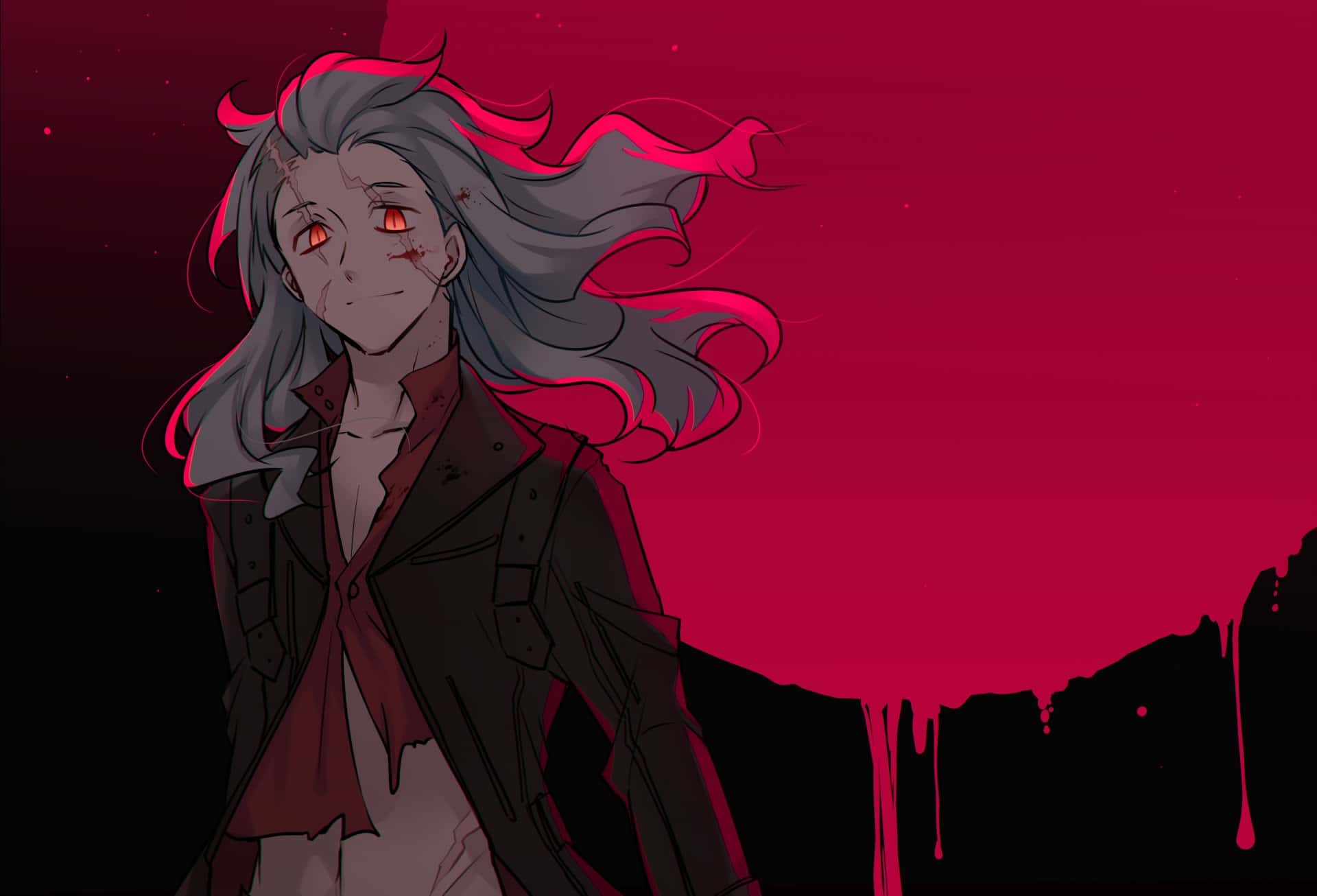
Sirius is a drama set in 1930s Japan that uses many of your classic vengeance narrative clichés in order to support its premise of a vampire being defeated over the course of a cour. Being the sole survivor of his people, Yuliy vows to avenge their deaths at the hands of the vampires by “KILLING ALL THE VAMPIRES.” The story progresses at a decent speed and doesn’t try too hard toward the climax. Since virtually nothing about the story is particularly interesting, I can’t think of much to say positively about the show.
However, given that this is a P.A. Works production, the story’s significance lies in its conclusion, as the company’s track record of struggling to reach the finish line becomes more and more apparent as episode twelve approaches. The program offers explanations to the viewer for things like why the vampires are looking for the Ark in the first place in the end, as if that somehow solves the underlying problem.
Also Read: Plunderer Anime Review
97. Snow White with the Red Hair
The title alone isn’t enough to justify calling this comic a “Snow White ripoff.” There is no evil queen, no dwarfs, and no magic in either narrative; the only thing they have in common is a poisoned apple. In essence, this is a rip-off of several fairy tales, with the setting and characters modernized. The heroine is not a sheltered princess but a young woman with a thriving career, and the two of them build their romantic relationship gradually, out of genuine friendship rather than in a flurry of passion.
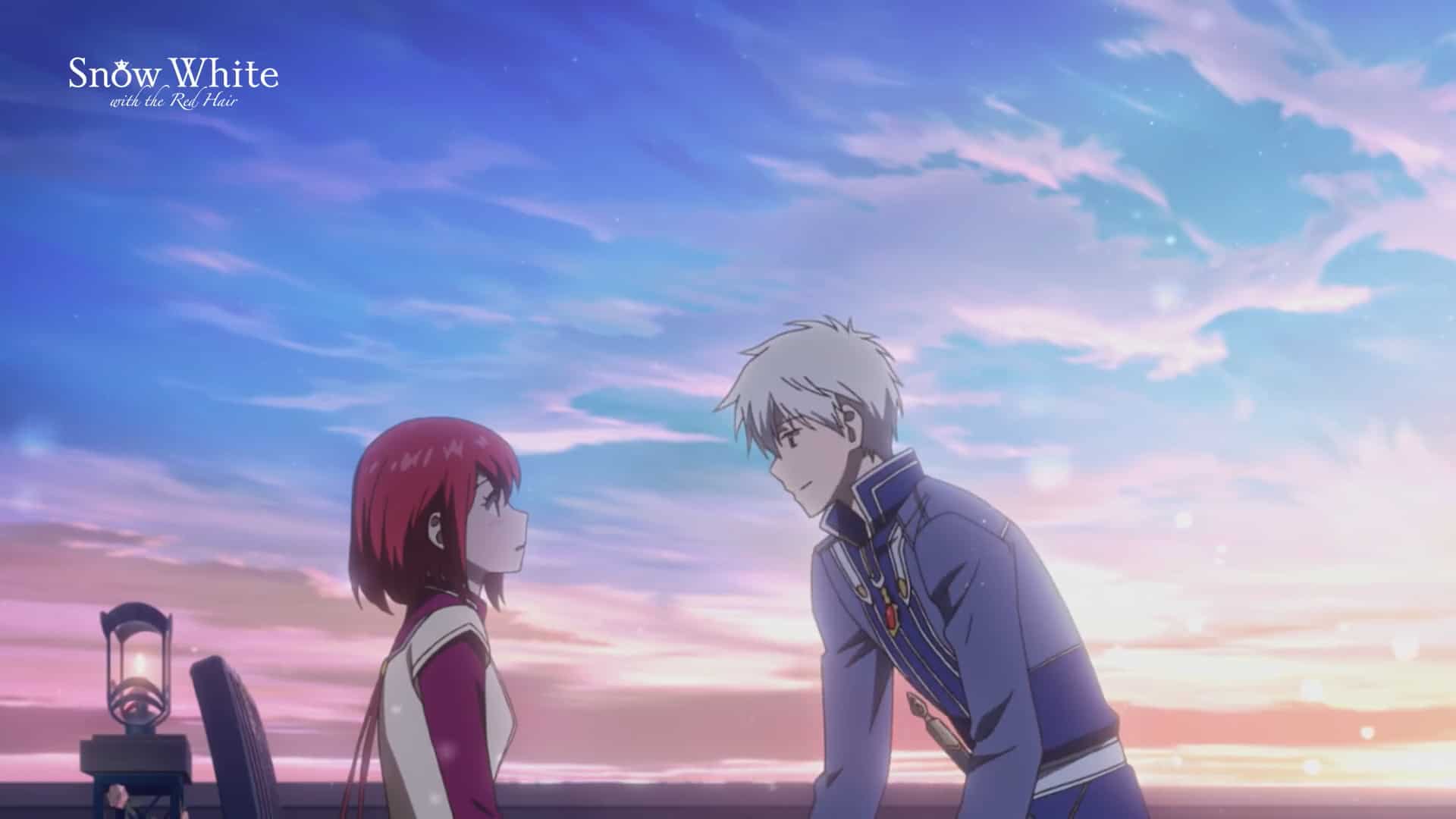
Shirayuki practices herbal medicine and has strikingly vivid red hair. Prince Raj’s unwelcome curiosity is piqued by her appearance, and he insists she ought to become his concubine. Shirayuki runs away from her house and tries to make her way into the forest of the next country rather than give in to his demands.
There, she encounters a young guy called Zen who, upon learning that she is on the run, takes pity on her and provides her shelter. The two begin to develop a sexually suggestive relationship, but Prince Raj is undeterred. When the life of her new friend is threatened by the villainous prince, what will Shirayuki do?
According to the manga’s creator, the first chapter was supposed to be a one-off narrative before it was turned into a series. The opening chapter sets the tone for the rest of the book and makes it clear that the author never meant for this to be more than a stand-alone story.
Both character growth and romantic tension are underdeveloped. Neither of our main characters has any spark when we first meet them because they are uninteresting. However, Prince Raj is too much of an idiot to be taken seriously as a military threat. Shirayuki is brave and realistic, yet she stays so level-headed that it’s hard to connect with her plight.
Also Read: Best Anime Like Snow White With The Red Hair That You Need To Watch
98. The Case Study of Vanitas
It’s the 19th century, and despite their differences, werewolves and humans have learned to coexist. Of course, there are people who want to disrupt this harmony, such as whoever is taking the vampires’ real identities and transforming them into ravenous monsters. According to legend, people who are afflicted with such a curse will always remain thus. Vampires are understandably wary of a human physician by the name of Vanitas, who says he can restore health to anybody who bears a curse.
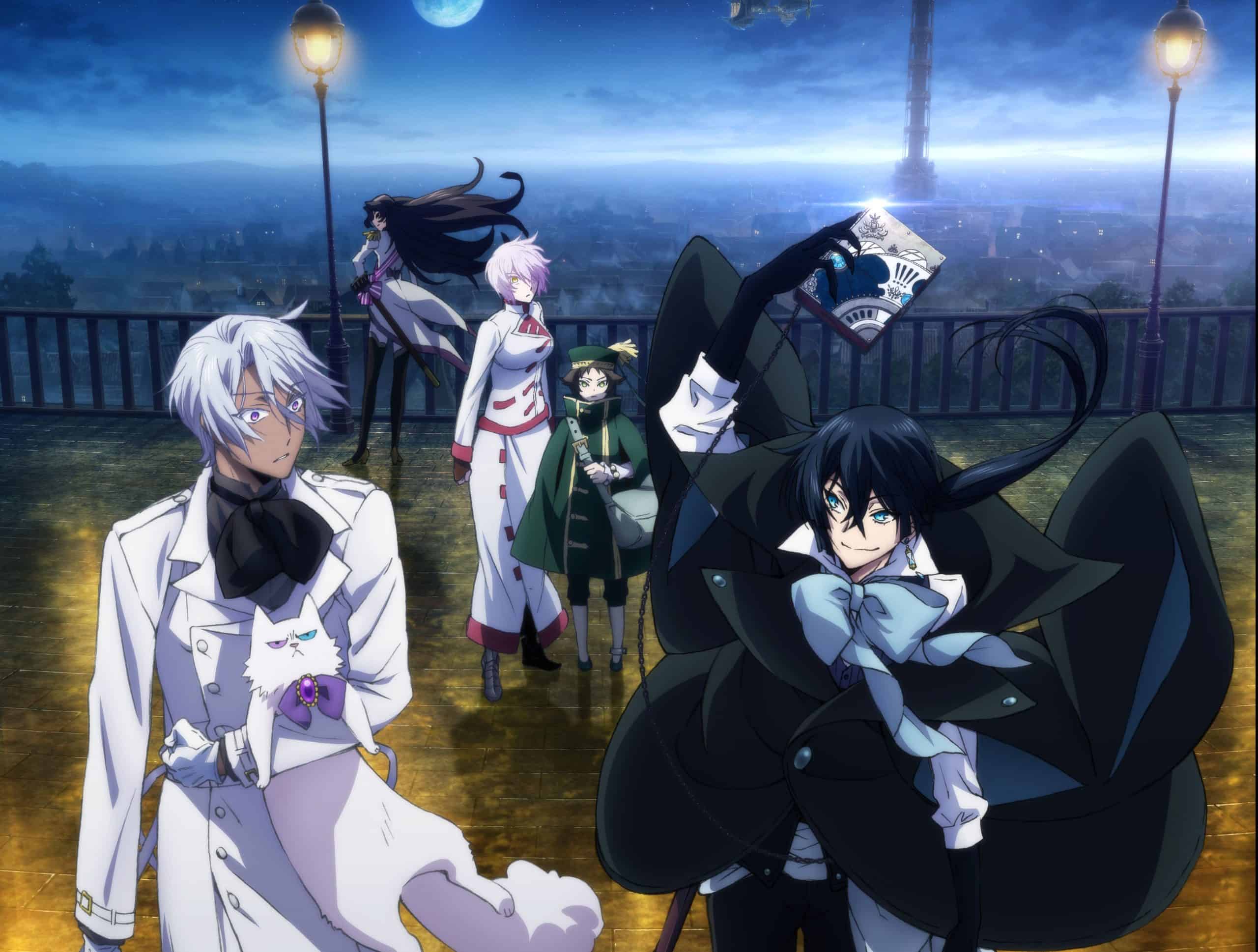
Noe, a vampire, has no clue about the crazed genius he will encounter or how his life will be altered when he journeys to Paris in pursuit of the Book of Vanitas. How long will Noe and Vanitas’ paintings be able to get along before every one of those ends up murdering the other due to rivalry over politics, secret sects associated with the church, and their own painful pasts?
Some shows start with a huge advantage. I usually check the summary before watching an anime. However, there are a number of producing names that catch my eye. Yuki Kajiura, who composed the soundtrack for Madoka Magica and Fate/Zero, my second and third favorite anime, is another artist I love. When I first saw this event, I was intrigued because I knew it would look and sound great. That remained the story and the individuals involved, and if the program got them right, it could do no wrong.
Also Read: The Case Study of Vanitas: New Trailer & Updates
99. The Eccentric Family
This unique and odd series’ family isn’t weird because they’re not human. Yasaburo, Yaichiro, Yajiro, Yashiro, and the rest of them are shape-shifting Tanuki (raccoon canines) that have lived alongside Tengu (birds) and humanity for ages.

Regrettably, for the Shimogamos, an elite club of seven individuals known as the Friday Brothers who celebrate the end of the year with a Tanuki hot pot, the father of the family and head of the Tanuki, Soichiro, died in the same manner. If sultry friend Benten is involved, oldest son Yasaburo may be in this year’s fiery pot.
Everyone with even a passing familiarity with Japanese pop culture should recognize Tanuki from Studio Ghibli’s Pom Poko. This series, adapted from a book by Tomihiko Morimi and published in 2007, offers a light-hearted look at these unusual animals while also promoting the importance of family via a subtly touching story.
The Tanuki legend is respected but also gives a light-hearted twist to this drama that focuses heavily on its characters. Yasaburo, the most adept of the Tanuki shape-shifters, uses this gift for his own fun despite the fact that it is essential to the storyline, given the Tanuki’s need to conceal their true nature from humankind.
Also Read: The Future Diary Anime Review
100. Yowamushi Pedal
This animation is top-notch in comparison to others from the same era. The settings are gorgeous, the color palette is spot-on, and the motorcycles have a lot of depth. Unfortunately, I can’t say that the animation is really eye-catching.
The aesthetic of the characters is good, albeit a little off. Some of the characters don’t seem young enough to be in high school. Like Makishima and Fukutomi, for instance. While Fukutomi appears to be in their early 30s, Makishima’s appearance is more consistent with someone in their late 30s or even early 40s.
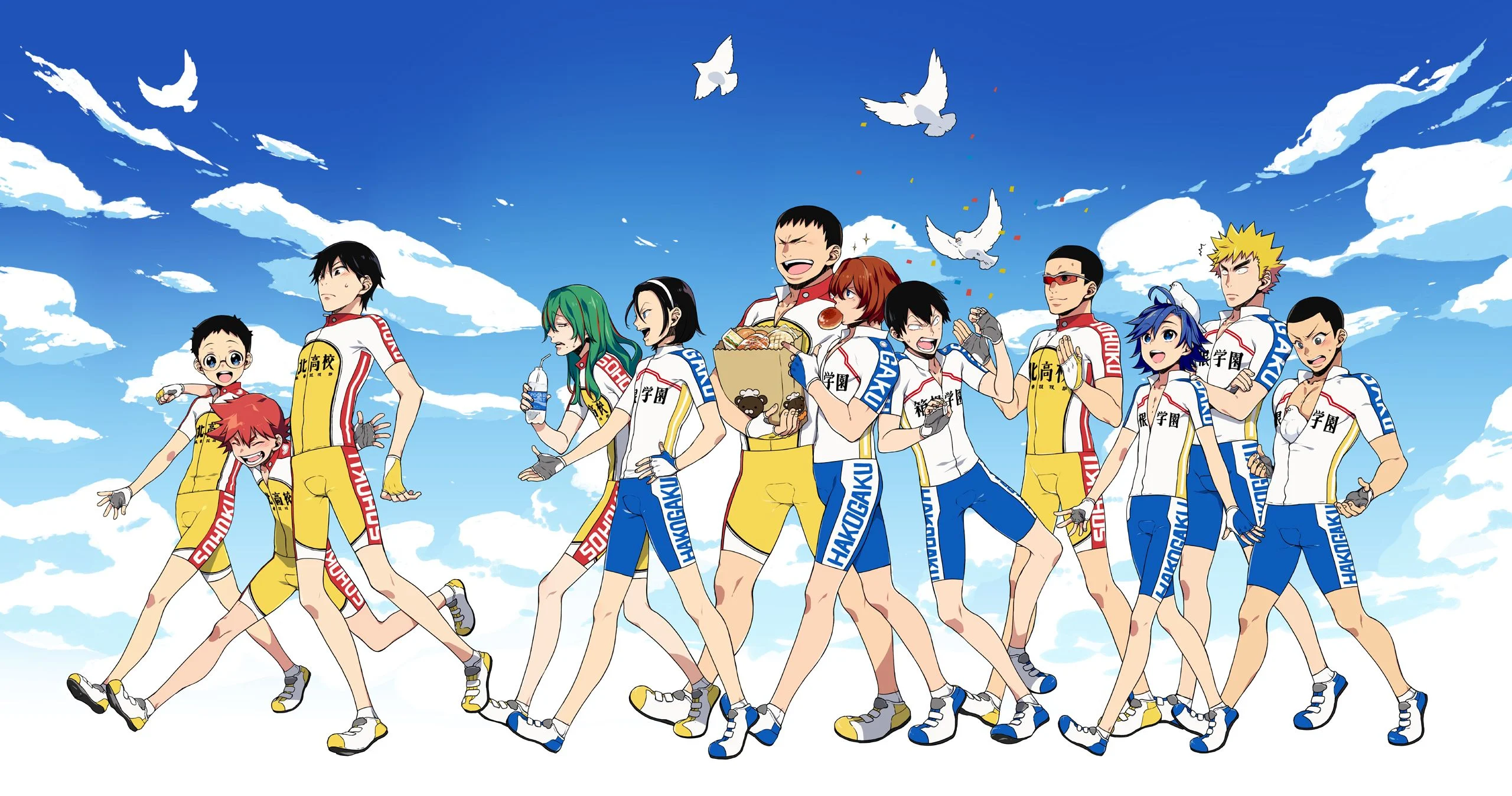
Themed around road cycling races. There isn’t any other anime that I’m aware of that deals with this subject. First up is Souhoku High School student Onoda Sakamichi. Onoda is an avid anime watcher. He commutes to class on his Mamachari. The steep terrain on Onoda’s way to school is no problem for him. This motivates Imaizumi to take Onoda on.
Onoda meets the cyclist Naruko Shoukichi in Akihabara. Naruko is a student at Onoda High. The bike club now includes Imaizumi, Onoda, Naruko, and Sugimoto, a classmate of Onoda. Kanzaki Miki, an old acquaintance of Imaizumi’s, is the club’s leader.
Five retirees are part of the group. Second-year students Teshima Junta and Aoyagi Hajime are joined by third-years Kinjou Shingo, Tadokoro Jin, and Makishima Yuusuke. To go anywhere, they’ll have to fight through every difficulty.
Their previous TV anime challenge will be the Internight Bicycles Road Race in Hakone. Many other high schools participate as well. The pace of this anime is slow, and there are far too many flashbacks all through the competition. The Interscholastic Relay seems to be plagued with flashbacks. It’s dull. Instead of showing memories throughout the race, they could have shown the actual race.
Also Read: Gintama Anime Review: A Comedic Masterpiece


